
Touropia Travel
Discover the World

10 Best Places to Visit in Chiapas, Mexico
By Alex Schultz · Last updated on February 5, 2024
The southernmost state in Mexico, Chiapas is a beautiful land of contrasts. Crumbling Mayan ruins lie next to charming colonial cities, and steamy, rainforest-coated mountains give way to epic natural sights such as the glimmering Laguna Miramar and the death-defying drops of Sumidero Canyon.
There is much to discover, and the region’s rich indigenous heritage and culture shines forth wherever you go. Whether it’s the incredible archaeological sites of Palenque and Yaxchilan or the astounding nature on show in Lagunas de Montebello National Park and at Cascadas de Agua Azul, Chiapas certainly won’t disappoint. There’s a lot to fit in, but here are the best places to visit in Chiapas.
Map of Chiapas, Mexico
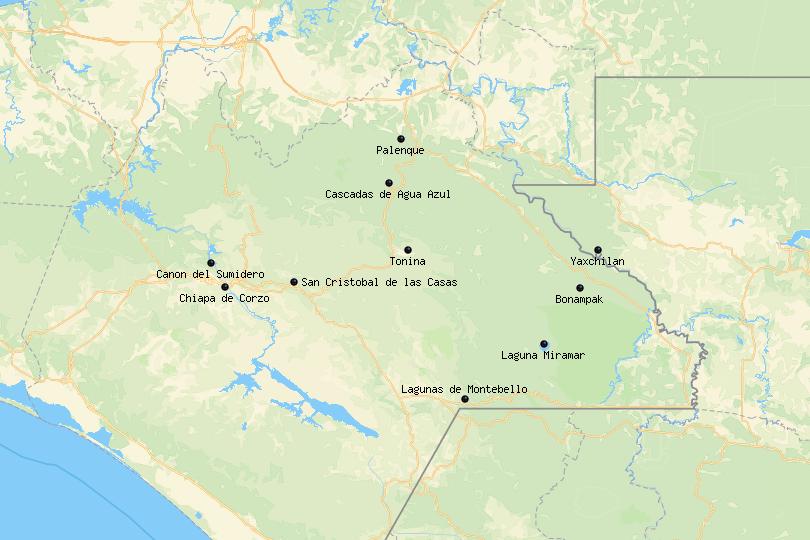
10. Laguna Miramar [SEE MAP]
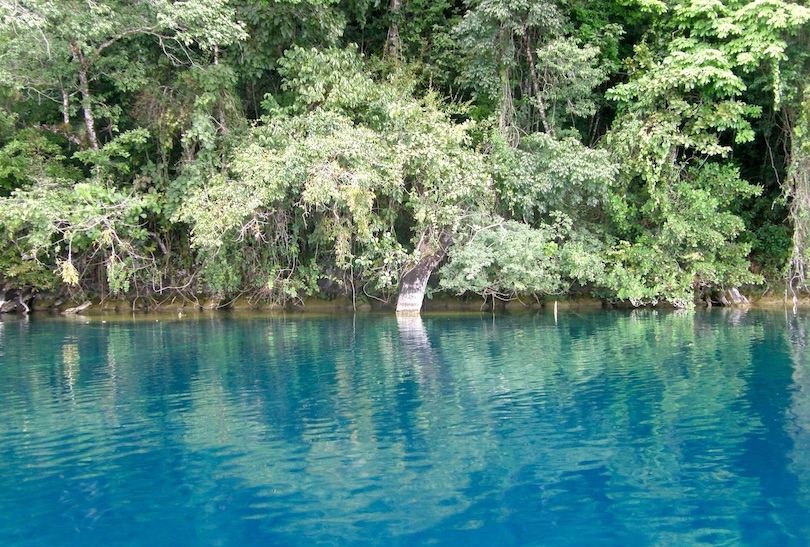
Tucked away deep in the confines of Montes Azules National Park, the sparkling blue waters of Laguna Miramar stand out delightfully against the vivid greens of the rainforest that hems it in on all sides.
A biodiversity hotspot, the lake and its surroundings are home to around 20 percent of the different species of fauna and flora to be found in the country, while lots of wildlife such as crocodiles and howler monkeys are also on show.
Due to its secluded nature, Laguna Miramar is a very peaceful place, and camping or staying the night in one of its eco-friendly shelters is a fantastic experience. In addition to horseback riding around the forest, swimming in the lake, and taking a boat trip around its waters, guests can also explore the unexcavated and unspoiled Mayan ruins that lie coated in the jungle alongside part of the lakeshore.
9. Tonina [SEE MAP]
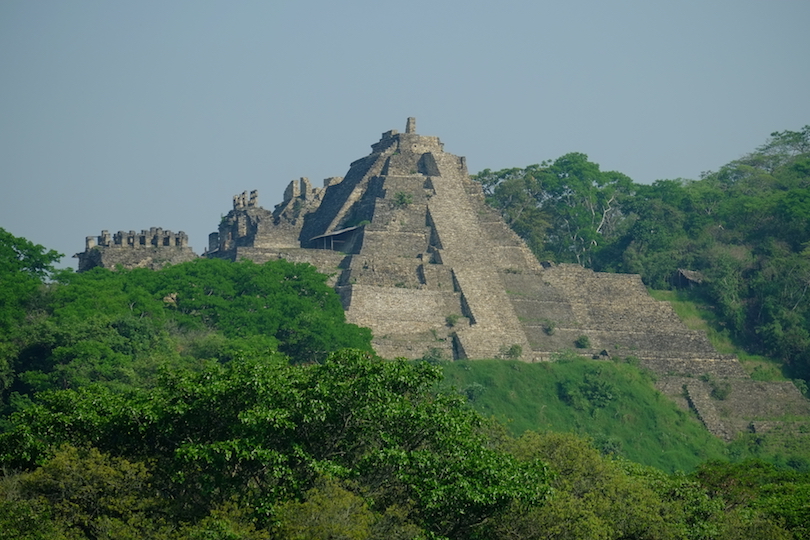
Boasting one of the largest pyramids in the country and a host of impressive stone-carved monuments, the archaeological site of Tonina is fascinating to explore, with lots of crumbling temples, ball courts, and palaces to discover.
Although the site dates back to much earlier, the ancient Mayan city flourished between 600 and 900 AD. It was during this epoch that many of its most eye-catching monuments and buildings were built.
These include the magnificent Temple of Cosmic War, the remarkable Mural of the Four Eras and the towering Temple of the Smoking Mirror. Despite the wealth of beautifully carved sculptures and stuccoes, surprisingly few tourists visit Tonina. As such, you’ll be able to explore the spectacular archaeological site at your leisure with barely another soul in sight.
8. Lagunas de Montebello National Park [SEE MAP]
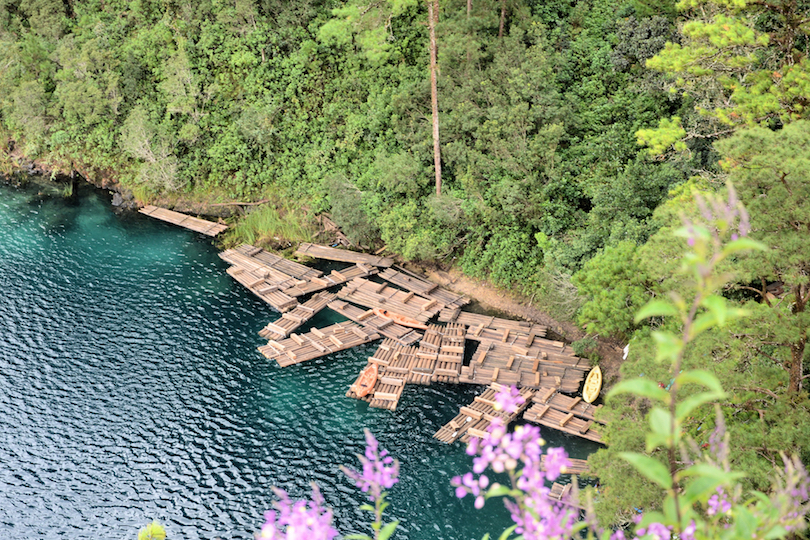
Located just a stone’s throw away from the border with Guatemala , Lagunas de Montebello National Park is a nature lover’s dream, with its 59 glittering lakes shimmering among the endless pine forests.
As the mineral content of the lakes varies quite considerably, they each have a different color; some appear emerald and turquoise while others take on a darkish ruddy hue.
Outdoor enthusiasts will rejoice at what the national park has to offer up; you can go hiking or horseback riding through the forests or swimming, kayaking, and canoeing in the lakes. In addition, there are also hundreds of half-excavated Mayan ruins for you to check out; seeing them appear before you from amid the dense vegetation is a mesmerizing experience that will make you feel like Indiana Jones.
7. Canon del Sumidero [SEE MAP]
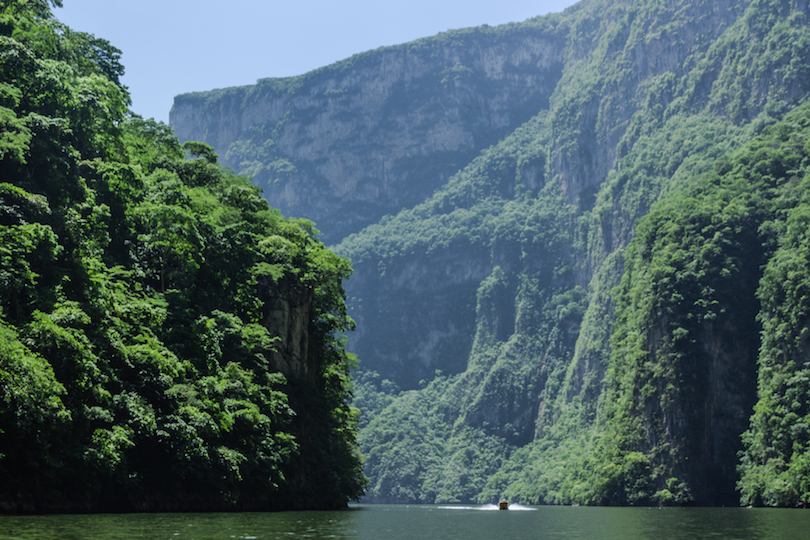
One of the most popular tourist attractions in the state, Sumidero Canyon is simply spectacular to behold; in some places, its steep, almost vertical walls tower up to a kilometer in height. Taking an exhilarating boat trip along the Grijalva River that runs along the bottom of the canyon is a must as you shoot beneath the cliffs and alongside the rainforest-coated banks of the river.
Nestled away in the national park of the same name, Sumidero Canyon was formed millions of years ago. A number of waterfalls, rapids, and beaches can be found along the canyon, which stretches for 13 kilometers. While the scenery is stunning, the canyon also attracts many outdoor enthusiasts and extreme sports lovers, who go rock climbing, rappelling, and mountain biking within the park.
6. Chiapa de Corzo [SEE MAP]
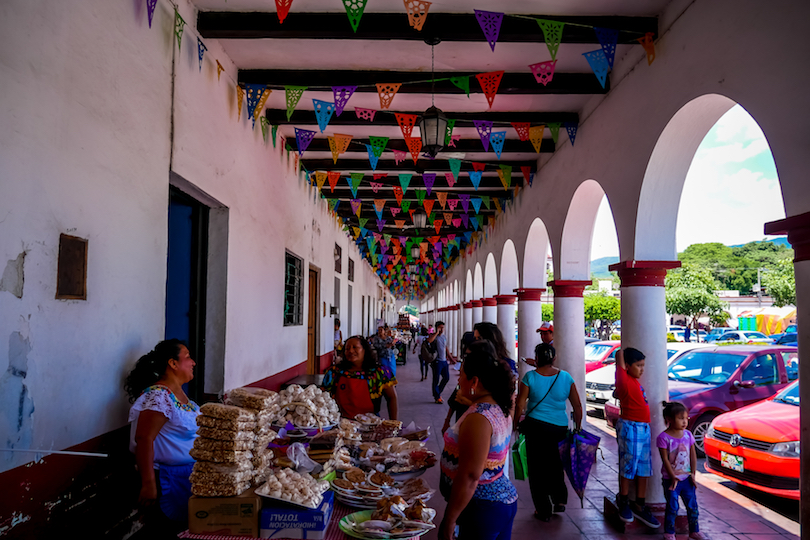
Lying just a short distance away from Tuxtla Gutierrez, Chiapa de Corzo is a very charming town that has a wonderful relaxed and laidback feel to it. With its lovely central plaza, beautiful riverside waterfront, and impressive colonial-era churches, Chiapa de Corzo has more than enough for you to see and do for a few days, with some excellent street art and lively markets also on offer.
As it is mostly overlooked by foreign tourists, it is a great place to head to if you want to see the authentic side of Mexico. In addition to this, some interesting pre-Columbian ruins of the same name are located not far from the town – as is the spectacular Canon del Sumidero.
5. Yaxchilan [SEE MAP]
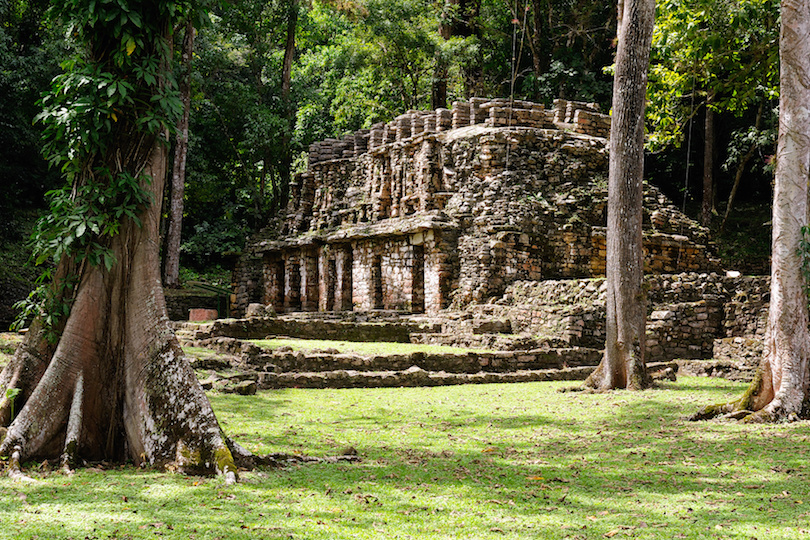
Once one of the most important and powerful Mayan cities in the region, Yaxchilan is now home to some of the most impressive ruins in the country, and just reaching the archaeological site is a memorable experience in itself.
Surrounded by dense jungle and perched atop a hill overlooking the Usumacinta River, Yaxchilan is only accessible by boat. Shooting along the river to see its ruined palaces and temples is an incredible feeling which is only magnified by the calls of the howler monkeys as you approach.
Exploring the secluded site is just as magical. Its well-preserved buildings with their intricately decorated facades and sculptures fully convey the power and prestige of the ancient Maya who once lived here. After wandering around Yaxchilan’s many ruins, retreating to the riverfront and taking the boat back feels as if you are resurfacing from a dream as you leave the mysterious ruins in the steamy jungle behind you.
4. Cascadas de Agua Azul [SEE MAP]
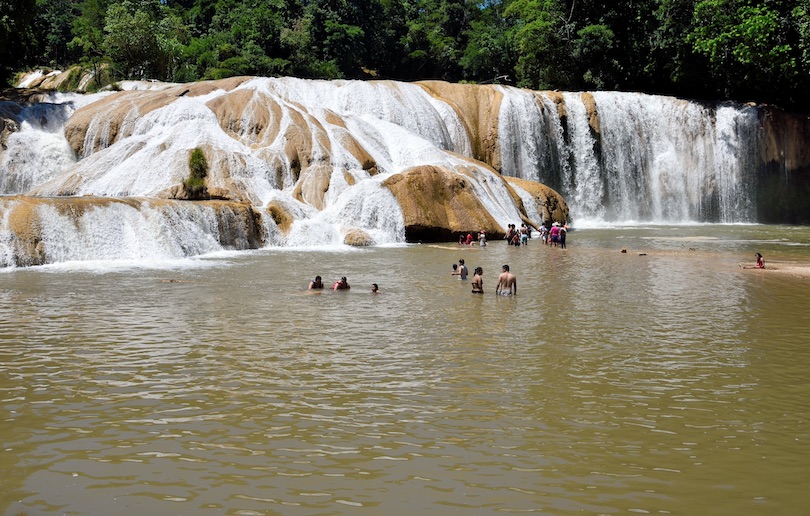
Twinkling in the sunlight, the Blue Water Cascades – as they are known in English – are a sight to behold; the vivid blues stand out starkly against the rocks and trees around them. Due to the high mineral content, gleaming white limestone is deposited in the stream’s wake, and this only adds to the beauty of the scene.
Coursing down a series of cataracts and cascades, the waterfalls are a popular place to visit with both locals and tourists alike, as the fresh water is so reinvigorating to bathe in. A peaceful and relaxing place to spend an afternoon, Cascadas de Agua Azul is well worth checking out if you have the chance.
3. Bonampak [SEE MAP]
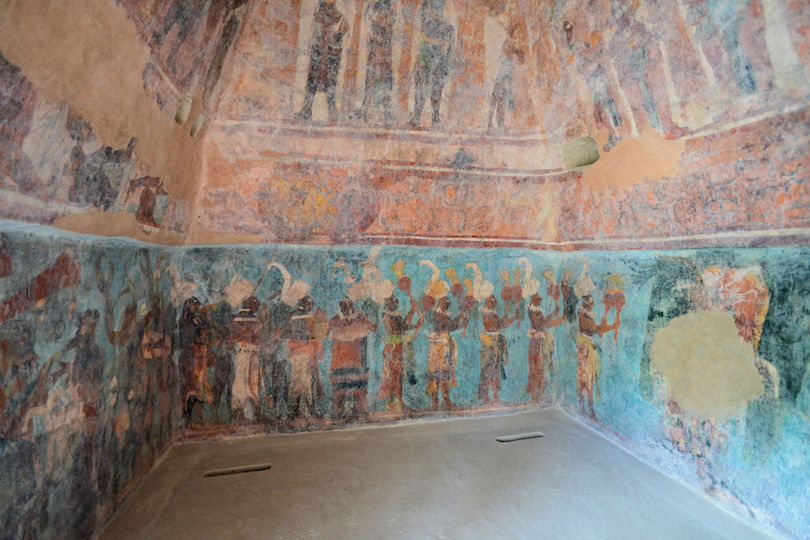
Due to its remote location amongst endless swathes of dense jungle, Bonampak was only rediscovered by the outside world in 1946 – and what a discovery it was. With its magnificent murals and frescoes that display epic and eerie scenes of war and human sacrifice, the ancient Mayan archaeological site is fascinating to explore, with lots of well-preserved buildings and temples.
While it takes quite a while to get to the site, visitors will be well-rewarded for their effort, as they’ll likely have the incredible ruins of Bonampak almost to themselves.
2. San Cristobal de las Casas [SEE MAP]
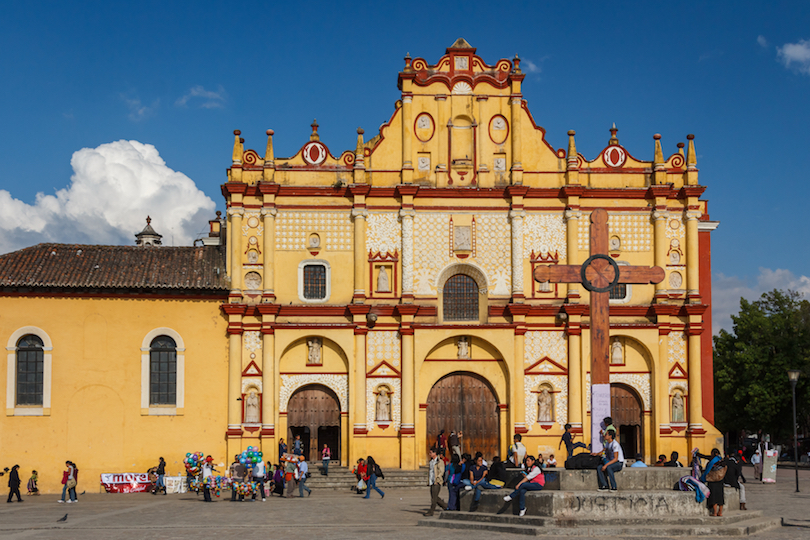
Full of incredible colonial architecture, cobbled streets, and lively street markets, the charming San Cristobal de las Casas is a lovely city to visit. Its beautiful setting in a valley surrounded by hills only adds to its picturesque look and feel.
While its many beautiful churches and plazas are certainly worth checking out, many people come to San Cristobal to learn more about the rich indigenous cultures and traditions that continue to shape the city’s identity.
San Cristobal lies at the heart of many traditional villages that are scattered amongst the hills. For people interested in experiencing the authentic, traditional, and indigenous side of Mexico, taking a trip out to some of them is well worth the effort. Offering the perfect balance of history and culture, city and countryside, San Cristobal de las Casas really is a treat to explore.
1. Palenque [SEE MAP]

Home to some of the finest examples of Mayan carvings, sculptures, and architecture, the Palenque archaeological site is mesmerizing to explore, and it is not without reason that it is one of the most popular tourist attractions in the state.
Rising from the dense jungle, the crumbling temples and pyramids look absolutely stunning. Wandering among the huge buildings that tower over you really does make you feel like you have stepped back in time.
Thanks to the beautiful carvings that can still be seen etched in stone, much is known about the site, so it is well worth hiring a tour guide to take you around. With the cries of howler monkeys echoing in the rainforest and brightly colored parrots flying overhead, visiting Palenque and exploring the Mayan ruins promises to be a memory that will stick with you a lifetime.
Share this post:
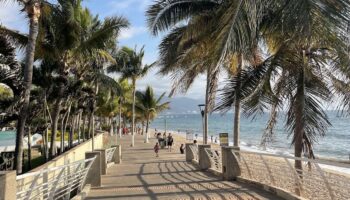
20 Best Things to do in Puerto Vallarta, Mexico
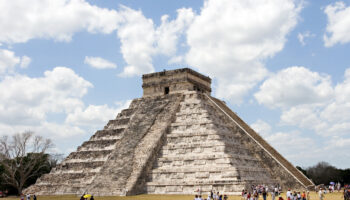
25 Top Tourist Attractions in Mexico
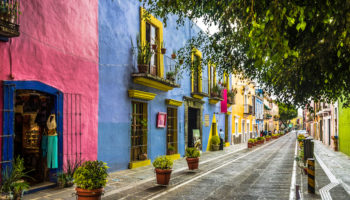
12 Best Things to Do in Puebla City, Mexico

12 Best Things to do in Tijuana, Mexico
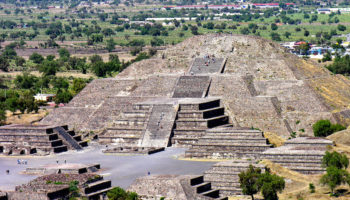
7 Most Amazing Pyramids in Mexico
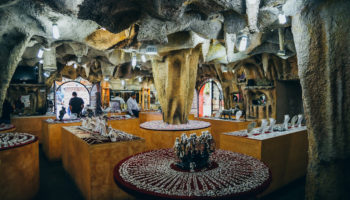
9 Best Things to Do in Taxco, Mexico
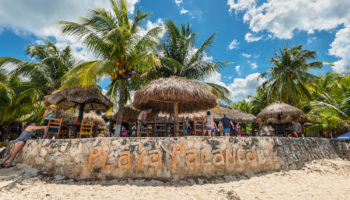
18 Best Things to do in Cozumel, Mexico
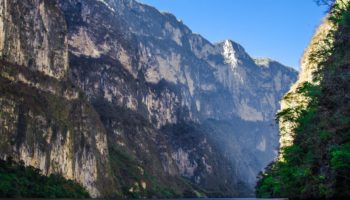
15 Most Beautiful National Parks in Mexico
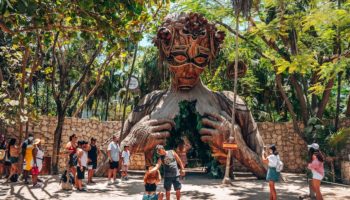
18 Best Things to do in Tulum, Mexico

Where to Stay in Cancun: Best Places & Hotels
Reader interactions, leave a reply cancel reply.
Your email address will not be published. Required fields are marked *
This site uses Akismet to reduce spam. Learn how your comment data is processed .

24 Best Things to Do in Chiapas Mexico: 2024 Local’s Guide
There are plenty of things to do in Chiapas, Mexico to warrant spending at least a week here. However, Mexico’s southernmost state is often overlooked from most people’s Mexico itineraries.
Word about Chiapas has only started getting out in recent years and most people that take the time to venture here only do so to experience the majestic ruins of Palenque or the colonial architecture of San Cristobal de Las Casas. For the most part, Chiapas remains largely untapped.
That isnt necessarily a bad thing though, as Chiapas, steeped in Mayan history, indigenous cultures, and gorgeous nature, offers a more authentic Mexico travel experience than you could ever obtain in places like Cancun or Tulum.
This guide to the best things to do in Chiapas has been written by a British Travel Writer based in the Yucatan. (Me!) I have explored Chiapas extensively over several visits to the state and have used my knowledge to create the most comprehensive Chiapas travel information you can find anywhere online.
Rest assured, you are in good hands here 😉

Table of Contents
24 Best Things to Do in Chiapas Mexico
Chiapas is a unique destination, quite unlike anywhere else in Mexico. After you have spent a while in Mexico, you will start to note that each of the country’s 32 states is like a little independent nation in itself, each with its own distinctive cultures, regional cuisine, etc.
Chiapas sits in the south of Mexico. It shares its borders with Guatemala to the south, the Mexican states of Oaxaca and Veracruz to its west, and Tabasco to the north. Chiapas is perhaps best known for its indigenous populations which help give the region a distinctly different culture than what you will find elsewhere.
There are 68 different indigenous groups in Mexico, that speak more than 350 different languages and dialects. More than 25% of Chiapas´ four-million-strong population belongs to an indigenous group, and there are 12 different ethnic groups that live in the state. (With the Tzotzil and Tzeltal Mayan being the largest and perhaps best known).
Chiapas is one of the poorest states in Mexico, but you shouldn’t let that concern you. Chiapas is safe for the most part , and the people here are among the friendliest in Mexico, eager to show travelers the beauty of their homeland.

Visit the Pueblo Magico of Chiapa de Corzo
The charming little town of Chiapa de Corzo is one of four Pueblo Magicos in the state of Chiapas. Pueblo Magicos are Mexican towns and settlements that have been recognized for their unique beauty, charm, culture, and gastronomy. Generally speaking, when you see that somewhere has been designated as a Pueblo Magico, you know that it is a worthwhile place to visit. Most people overlook Chiapa de Corzo when they are traveling through Chiapas, or they only stop by briefly as part of a day trip to the Sumidero Canyon.
However, the little town is well deserved of a day or two´s exploration in itself. This is one of the oldest towns in the Americas.
It dates back to 1528 and was one of the first places that the Spanish colonizers settled when they arrived in Chiapas. They later realized that the intense desert heat was too much for them and moved their main settlement to San Cristobal. However, they left many beautiful churches and structures in their wake.
Start your day in the Zocalo – the charming central square of Chiapa de Corzo surrounded by porticoed buildings and quaint cafes. The piece de resistance of the square is ¨La Pila¨ – a diamond-shaped fountain in its center.
An exploration of the unsuspecting side streets leads you to magnificent, centuries-old churches and thought-provoking street art. Stop for breakfast at Jardines de Chiapa Restaurant (Francisco I. Madero 395, San Jacinto, 29160) and stroll along the riverfront.
The hilltop ruins of the Templo de San Sebastian are not to be missed. From up here, you can enjoy spectacular panoramas of the town and wider Chiapas below.

Best Chiapa de Corzo tours
If you are traveling to Mexico in January , your time in Chiapa de Corzo will be particularly special. Every year, the Fiesta Grande is hosted here in honor of three Catholic saints.
The festival is famous for its Parachico dancers that wear traditional clothing and painted wooden masks as they dance their way through the town. This dance is so culturally important that it has even been recognized by UNESCO as an Intangible Cultural Heritage of Humanity.
Throughout the year, you may enjoy exploring Chiapa de Corzo with the aid of a guide who can give you more in-depth information about the town and its various districts. Several reputable Chiapa de Corzo tours are detailed below for your information.
- Chiapa de Corzo & Sumidero Canyon day tour from Tuxtla Gutierrez
- Sumidero Canyon, Chiapa de Corzo and San Cristobal tour
- Sumidero Canyon & Chiapa de Corzo tour from San Cristobal

Spend a long weekend in San Cristobal de Las Casas
San Cristobal de Las Casas is the main raison d’etre that most people decide to visit Chiapas. The town was founded in 1528 and named ¨Villa Real de Chiapa¨ Its name has changed various times over the centuries before being given its current name in 1848.
Spending three to four days here allows you enough time to explore the town itself, but you may want to base yourself here for as long as a week. San Cristobal is a convenient base for taking day trips out to other parts of Chiapas.
The free walking tour is a good way to get your bearings in the city. It departs at 10 am daily from the wooden cross in front of the cathedral in the Plaza de la Paz.
There are many gorgeous catholic churches scattered throughout San Cristobal which will take your breath away, even if you are not remotely religious. A fun way to explore the town is to mark different churches on your map and enjoy exploring the offbeat neighborhoods that they lead you through.
The beautiful white and yellow Iglesia del Cerro de Guadalupe is a charming 19th-century church perched on top of a hill. If you ascend the 79 steps to the church at the top, you will be rewarded with spectacular panoramas over the town.
Equally worthy of your attention is the Iglesia de San Cristobalito. The views from up here are unparalleled. However, conquering the hundreds of steps to the top is no mean feat.

Learn about the religious practices at San Juan Chamula Church
The San Juan Chamula Church is one of the most unique churches in the world. From the outside, it looks no different from any other Mexican catholic church.
Its crisp white facade is decorated with green fixtures and detailing, and colorful, intricate azulejo tiles. It is when you step inside the church that things get interesting.
Chiapas locals visit the San Juan Chamula church when they or their loved ones become sick. They light candles and pray to a saint of their choosing in the hope that their loved ones become better.
Generally, the more candles a person uses, the sicker they are. A lot of people here cannot afford access to modern medicine or they are suspicious of it. So, they turn to religion instead.
A blend of Catholic and indigenous practices is used during rituals here. Many indigenous people believe that they get sick as a result of people looking at them with envy or sending negative energy their way.
So, they sit and drink bottles upon bottles of fizzy drinks such as Coca-Cola as they pray and force themselves to burp as they believe that burping expels evil. Sometimes chickens are sacrificed in exchange for the person becoming better.
Best Chamula tours to take in 2023
You can take a Colectivo (shared minivan) from San Cristobal to Chamula. However, for the best experience, you should visit with a tour guide.
A number of reputable Chamula tours are detailed below for your consideration. It is advisable to reserve your spot online in advance as places do sell out! Most combine a trip to Chamula with a visit to nearby Zinacantan.
- Chamula & Zinacantan day trip from San Cristobal
- Indigenous villages of Chiapas day trip

Experience indigenous cultures in Zinacantan
Zinacantan is one of the best places to visit in Chiapas, particularly if you are interested in learning about indigenous cultures. The little town is home to around 45,000 inhabitants, many of whom are Tzotzil.
The town’s original name was ¨Tzinacantlān¨ which is of Nahuatl origin and means “land of bats”. However, it was modified to Zinacantan as the Spanish colonizers could not pronounce its original name.
Today, Zinacantan is home to several beautiful churches that use a blend of Catholic and indigenous practices in their worship. Stop by the Iglesia de San Lorenzo and the Capilla El Señor de Esquipulas.
This region is famous for growing flowers. Whenever you step inside any of the churches of Zinacantan, you will be met with the fragrant aroma of hundreds of colorful flowers and garlands that decorate every wall and ceiling.
Many stunning, vibrant textiles are also produced here. You may be interested in stopping by the indigenous women’s textile cooperative on the outskirts of town.
More than 60 women work together to create unique garments and the existence of this cooperative has helped to massively improve the lives of the residents of the village. They donate a portion of their earnings to fund the education of the younger generations.

Recommended Zinacantan tours

Take a boat tour of the magnificent Sumidero Canyon
Chiapas is home to some of the most diverse and beautiful natural scenery in Mexico. The Sumidero Canyon, set inside the national park of the same name, is a dramatic gorge that was formed more than 35 million years ago.
Start by taking a boat tour along the Río Grijalva where you will pass through areas surrounded by towering 1km high cliffs. It takes approximately 2 hours to sail along the 64km length of the river.
Many endangered species call the canyon home, along with crocodiles, spider monkeys, and many exotic, colorful birds. If you are lucky, you will see them as you sail around the canyon. There are also numerous hiking trails that weave around the scenery here and offer spectacular panoramas over the canyon, with Chiapa de Corzo and Tuxtla Gutierrez shimmering in the distance.
Recommended Sumidero Canyon Tours
It is very difficult to tour Sumidero Canyon independently. One of the best things to do in Chiapas is to take a Sumidero Canyon tour that starts in Chiapa de Corzo, Tuxtla Gutierrez, or San Cristobal.
Many tours include pick-up and drop-off from/to your hotel. This takes a lot of stress out of managing the logistics of how to get from A to B.
A number of reputable Sumidero Canyon tours are detailed below for your consideration. Book online in advance to secure your place.
- Sumidero Canyon full day trip from San Cristobal de las Casas
- Sumidero Canyon and San Cristobal de las Casas day trip from Tuxtla Gutierrez
- Tour of Sumidero Canyon, Chiapa de Corzo and San Cristobal de las Casas
- Sumidero Canyon and Chiapa de Corzo day trip from San Cristobal de las Casas

Visit a coffee plantation
An interesting fact about Mexico that you may not be aware of is that the country is the world’s largest producer of organic coffee. In general, Mexico is one of the largest coffee producers in the world.
Chiapas, along with Veracruz and Oaxaca, is one of the country’s largest coffee-growing regions. Mexican Chiapas coffee tends to have a strong, distinct taste and while it may be relatively unknown internationally, you will note that many cafes and restaurants across Mexico stock and serve it.
If you are a major coffee aficionado, one of the best things to do in Chiapas is to visit one of the coffee plantations in the area. Many plantations offer tours and tastings.
They often also have tourist accommodations on site where you can stay in gorgeous rural cabins in the mountains overlooking the plantations. Most Chiapas plantations are concentrated around Ocosingo and near the Sierra Madre mountains in the southern part of the state.
The Hamburgo plantation is a good choice, although it is tricky to reach unless you are renting a car in Mexico. It is located high in the Sierra Madre mountains, close to the town of Huixtla.
The plantation was founded in 1888 by German Arthur Edelman. It has been passed down through his family for more than 100 years and is currently managed by the fifth generation. There is also a spa and restaurant on-site.
Marvel at the spectacular Arco del Tiempo
The Arco del Tiempo del Río La Venta ” (Arch of Time of La Venta River )is a spectacular natural stone arch 180 meters high that is one of the tallest arches in the world. The arch is currently on the ¨tentative¨ list for UNESCO, to potentially be added as a natural wonder of the world. The breathtaking natural archway sits in the lush, dense jungles of the Reserva de la Biosfera Selva El Ocote in Northern Chiapas. It is about as off the beaten path as you can get in Chiapas, with less than a handful of tourists visiting the area each month.
The archway wasn’t even designated as a tourist destination at all until 2010, when a group of Italian travelers that had stumbled across the Arco del Tiempo and fell in love with the surrounding biosphere reserve, convinced the locals to build huts to promote ecotourism. The archway is more than 80 million years old and was formed by limestone dissolution and erosion by rain and wind. Petroglyphs (ancient wall carvings) created by the indigenous Zoque communities that lived here approximately 5,000 years ago can be found along the arch.
Getting to the Arco del Tiempo is no easy feat – doing so requires a 4-hour trek through the jungle with the help of a local guide. Rappelling, swimming, and kayaking are among the activities that you can enjoy when you arrive. Rather than heading back the same day, you can choose to camp in the grounds of the archway or in the jungle just above it.
Swim in the crystalline waters of Cenote de Chukumaltik
Most travelers to Mexico have never heard of Chukumaltik cenote and their trips often center around the ¨Instagram famous¨ cenotes in the Yucatan, such as Cenote Suytan and Cenote Ik Kil. But ask any Chiapas resident where the most beautiful place to go swimming is and chances are they will all give you the same answer: Cenote de Chukumaltik.
Cenote de Chukumaltik translates to mean ¨hidden beauty¨. This is a fitting title as this natural sinkhole awaits in the middle of nowhere, escaping the eyes and attention of most tourists.
The open cenote has a diameter of approximately 200 meters and a depth of 70 meters. You could easily spend a day swimming and snorkeling in its refreshing crystalline waters which are backed by the luscious green jungles of Chiapas. Chukumaltik awaits approximately 36 minutes (27km) south of the city of Comitan de Dominguez, not too far from the Mexico-Guatemala border. Not only is the cenote beautiful in itself, but even more treasures await beneath the surface of its warm waters – including a petrified forest, sulfur chimneys, and a submerged statue of the Virgen de los Dolores with her hands together in prayer. If you do not have access to a vehicle, the best way to get to Chukumaltik is to organize a taxi ride from Comitan. You can take the bus headed to Cascadas de Chiflón and get off at Chucumaltik junction but it is quite a ways from the cenote and you will have to wait by the side of the road for a while (which can be almost unbearable when it’s hot) and hitchhike or wait for a ride.
Explore the Toniná Ruins
The Toniná Ruins (meaning ¨House of Stone¨ in Tzeltel Maya is a pre-Colombian city that was built by the Ancient Mayans in the Mexican state of Chiapas. Although small, it is filled with impressive and well-preserved temples and pyramids and is believed to have been a rival city of Palenque.
Archeologists believe that Toniná originally went by the name of ¨Po¨. The Acropolis here is one of the tallest Mayan structures in Latin America and at a height of 241 feet, it is significantly higher than the famous ¨El Torre¨ at the ruins of Ek Balam , and the Ixmoja pyramid at the Coba Mayan ruins in the Yucatan.
Tonina/Po thrived during the Classic Period (400-900 CE). Notable structures to look out for here include the Pok-ta-Pok ball court at the Great Plaza, which contains ornately carved structures of Mayan lords that were captured by the city leaders, the Altar of Sacrifices, various tombs, and an ¨Altar of the Underworld¨.
The ¨Altar of the Underworld¨ contains a labyrinth that is extremely rare to find in Mayan cities. (There is one more at Oxkintok in the southern part of the Yucatan state ).
The entrance fee for visiting the Toniná Ruins is 70 MXN pesos and the site entrance includes admission to the Toniná museum which contains artifacts and statues recovered from the city and helps you to put the things you see here in more context.

Spend an afternoon in Tuxtla Gutiérrez
Tuxtla Gutiérrez is the bustling capital city of Chiapas and while it is no great beauty, it is worth stopping by here briefly on your way to/from Chiapas’ Ángel Albino International Airport if your schedule allows.
The Cristo de Copoya is a 62m high Catholic cross with an image of Jesus Christ carved out of its center. It sits on the top of Mactumactzá Hill in the southern part of the city, and you can enjoy sweeping vistas of Tuxtla and the wider region from the top.
As you make your way around the city, you will see it peeping out above the various structures. There is some great street art scattered around Tuxtla, even in the most unsuspecting industrial and residential neighborhoods and much of it is politically motivated and thought-provoking.
Stroll down Calzada de la Revolución, one of the city’s oldest streets, and stop at the Regional Museum of Anthropology and History of Chiapas to learn more about how Southern Mexico has developed through the decades. Traditional markets like the Mercado Juan Sabines or the Municipal Public Market are great places to people-watch, witness signs of traditional daily life, and sample Mexican cuisine. When the sunsets, you can head to the Parque de la Marimba to watch or join in with older Chiapas residents as they dance to traditional music played on the marimba. The marimba is often referred to as being ¨the ancestral voice of Chiapas¨.
You will no doubt hear it played over the radio in various taxis, restaurants, and coffee shops. If you want to learn more about the instrument and how it fits into local culture, you can stop by the Museo de la Marimba (Calle Novena Pte. Sur S/N, El Cerrito).

Sink your toes into the golden sands of Chiapas beaches
A lot of visitors to Chiapas aren’t even aware of the fact that the southernmost state offers dozens of beaches to choose from. The sheer mention of Chiapas is so synonymous with rugged outdoor adventures, waterfalls, and ruins that few people realize there are any beaches here at all!
In reality, the western coast of Chiapas features over 250km of undisturbed natural coastline, and gorgeous beaches and coves that boast soft, powdery-white sand, and clear cerulean waters. Puerto Arista Beach is one of the most popular.
It is backed by picturesque palm trees and mangroves and is considered one of the most critical places in Chiapas for the conservation of sea turtles. There are plenty of restaurants, cafes, and palapa-style huts here where you can sample the regional cuisine, fresh seafood dishes prepared with fish caught earlier the same day, or ice-cold micheladas.
If you prefer something a little quieter and more secluded, you will love Boca del Cielo (¨mouth of heaven¨ beach). This sleepy little fishing village is well worth the effort to get to and few people take the time to venture here.
It is backed by the clear blue waters of La Jolla Lake on one side and the endless horizons of the Pacific Ocean on the other. A trip here is more about relaxation than anything else, and having the opportunity to laze around on the beach in a hammock, watching gorgeous sunrises and sunsets, and simply admiring the view.

Explore the ruins at Palenque
The Palenque ruins are undoubtedly among the best Mayan ruins in Mexico. The site dates back to the Early Classic period (A.D. 200-600) and was also known as ¨Lakamha¨ in the Ancient Itza language. It flourished during the 7th century under the rule of Pakal.
Palenque sits in the heart of the Tumbalá mountains. You can climb the ruins here and for your efforts, you are rewarded with spectacular views of the jungle below.
The site is expansive and worthy of 2-3 hours of your time. Palenque is one of the world’s most studied Mayan ruins and it was just as important as Chichen Itza, Edzna , and Mayapan .
Recommended Palenque tours
Palenque is relatively remote and somewhat tricky to get to. It is advisable to visit the site on a tour.
Many reputable local tour operators offer day trips from San Cristobal de Las Casas to Palenque. They usually combine a trip to the ruins with a visit to some nearby waterfalls.
A selection of the best Palenque tours is detailed below for your consideration.
- From San Cristobal: Agua Azul and Palenque day trip
- From San Cristobal: Palenque, Agua Azul and Misol-Ha day trip

Take a boat out to the Yaxchilan ruins
Visiting the ruins at Palenque can feel like a bit of an effort. At first glance, it seems like there is little else of interest in the area nearby. Palenque town is not a tourist destination in itself, although it is home to several hotels and restaurants.
If you opt to stay overnight in Palenque, you can then consider taking a day trip out to Yaxchilan and Bonampak ruins. The Yaxchilan ruins are some of the most difficult to reach but they are well worth the effort.
To get here, you need to board a boat and ride along the Usumacinta River. Much of Yaxchilan has been reclaimed by the jungle and is massively overgrown. It looks just as you would expect a site that has been abandoned for thousands of years to look. Yaxchilan sees just a fraction of the tourists seen by the likes of Palenque and Chichen Itza.
This is, in part, because the ruins require so much effort to get to. Only a small handful of tourists pass through here every day.
Yaxchilan was occupied between 250 AD and 900 AD. Its location right on the river made it an important city for trade and commerce.
Recommended Yaxchilan and Bonampak tours
It would be very difficult to try and get to Yaxchilan independently. Your best bet is to travel with a tour guide.
Several reputable tour options are detailed below. Most tours combine a trip to Yaxchilan with the nearby ruins of Bonampak.
- Yaxchilan and Bonampak ruins and Lacandon jungle tour from Palenque

Stop by the Bonampak archeological site
The Bonampak archeological site is small, and at first glimpse, it may not seem as impressive as Palenque or Yaxchilan but don’t be fooled. The most fascinating thing about this site is that it is home to several extremely well-preserved, colorful painted murals.
In fact, ¨Bonampak¨ is Mayan for ¨painted walls¨. In one of the main structures here, nestled deep in the heart of the jungle, are three rooms that are painted from floor to ceiling.
These are the best-preserved Mayan murals in the world and Mayan paintings like these are extremely rare. The murals depict scenes from everyday life in a Mayan civilization – celebrations, sacrifices, and religious ceremonies.
It is better to visit Bonampak as part of a tour. Most companies combine a trip to the ruin with a trip to Yaxchilan.

Venture off the beaten path to the city of Comitan
The city of Comitan de Dominguez is a pueblo magico in the southernmost part of Chiapas state. It sits right beside the Guatemalan border and a visit here is one of the best things to do in Chiapas if you want to venture far off the beaten track and experience local life.
Comitan’s pre-Hispanic name was Balún Canán meaning “Nine Stars”. The settlement was founded in a swamp by a large group of Tzeltal Indians.
In 1486 it was subdued by the Aztecs who changed the name to “Comitlan” derived from a Nahuatl word meaning “Place of potters”. Spanish colonizers changed the name to Comitan, which was easier for them to pronounce.
The ¨de Dominguez¨ aspect of the name was added in 1915 in honor of Dr. Belisario Dominguez, a beloved doctor, and politician. Comitan does not offer a huge amount in terms of things to see and do; You could easily explore most of the town on foot in half a day.
However, it makes a great base for exploring many of the southernmost ruins, lakes, and parks in Chiapas. If you base yourself in Comitan rather than San Cristobal, your journey time to the likes of Montebello Lakes and the El Chiflon waterfalls is much shorter.

Trek through the Lacandon Jungle
The Lacandon Jungle is an area of rainforest that is easily accessible from Palenque. It stretches from Chiapas, Mexico, all the way down to Guatemala.
You will pass through a section of the jungle if you want to travel to the ruins of Yaxchilan and Bonampak. However, if you want to delve deeper into the wilderness and learn about the indigenous Lacandon Maya tribe that inhabits the jungle, as well as have the chance to view its endemic flora, fauna, and animals, you can book a jungle trek.
Many local companies offer Lacandon Jungle trekking tours. Some are led by members of the Lacandon tribes and others include an overnight say at a jungle camp.

Visit the ruins at Tenam Puente
A visit to the ruins at Tenam Puente is one of the best things to do in Chiapas if you have a keen interest in Mayan history. The Mayan city is just 11.6km south of Comitan and is accessible via Colectivo.
Tenam Puente comes from the Nahuatl word tenamitl meaning fortification. The site dates back to the early post-classic period (900-1200 AD) until it was eventually abandoned. Like many Mayan cities, nobody is certain about the reasons why it was abandoned.
Many artifacts that have been recovered from Tenam Puente are on display in the small Museo Arqueológico de Comitán in the Comitan city center. This is well worth visiting if you have time.
Unfortunately, the museum information is only displayed in Spanish so if you cannot speak/read Spanish, it doesn’t give a huge amount of context. However, some of the old Mayan masks and artifacts recovered from Tenam Puente are so ornate and intricate, that it would be a shame to miss the chance to view them.

Head out to the forgotten ruins of Chinkultic
The ruins at Chinkultic are located 45.5km south of Comitan, close to the Guatemalan border. Unless you are driving in Mexico , they are difficult to get to independently.
The site dates back to 600 AD and contains several temples and pyramids that you can climb. From their peaks, you have incredible views across Southern Chiapas, with Guatemala in the distance.
The Chinkultic ruins are small. You only need an hour or two to explore them so a visit here is best combined with a trip to the nearby Montebello lakes.
For the time being, very few tours run to the region. If you do not have a vehicle, your best bet to reach the site is to go by taxi.
Ask your hotel reception/accommodation host to provide you with the details of a taxi driver that they trust. Then, you can negotiate a price with the driver for them to wait for you while you explore the site and then drive you back to Comitan.
There is a colectivo that you can take. However, it does not run all the way to Chinkultic. Instead, you need to go to Mobtelello Lakes and then try and hitch a ride from there.

Take a day trip to El Chiflon Waterfalls
The El Chiflon waterfalls are among the most popular day trips that you can do from San Cristobal de Las Casas. This collection of tiered waterfalls awaits in the southern part of the state, close to Comitan.
There are five waterfalls here. The most famous is called the Cascada de Vela Novia (the bridal veil) because its crystal clear water cascades over the edge of a cliff, giving the appearance of a bride’s veil.
You cannot swim in the waterfalls. However, there is a river nearby where you can swim so be sure to bring your swimsuit to make the most of the falls on a hot, humid day. There are also several hiking trails that lead you through the breathtaking natural scenery of the area.

Recommended El Chiflon tours
- San Cristobal: El Chiflon waterfalls and Montebello day tour
- Tuxtla Gutierrez: El Chiflon waterfalls and Montebello day tour
Spend a day at Montebello Lakes
The Lagos de Montebello (Montebello Lakes) is a complex of 59 natural lakes situated at the Mexico-Guatemala border. Some fall on the Mexican side of the border, others await in Guatemala.
This is one of the best places to visit in Chiapas if you enjoy the great outdoors and getting back to nature. You can take a boat ride on some of the larger lakes and many hiking trails weave throughout the area.
Many local tour companies include a trip to Montebello lakes with their El Chiflon tours. However, the lakes are also very easy (and cheap!) to get to independently.
You can take a Colectivo from Comitan to the lakes for just 20 pesos ($1 USD!) Pack some snacks or some Mexican street food and have a picnic on the banks of one of the lakes.
Sundays at the lake provide a great people-watching opportunity. Most Mexicans have the day off work and you will see lots of local families having picnics, camping, and swimming in the lakes.
Marvel at the Agua Azul waterfalls
There are several spectacular waterfalls that you will likely pass on your way to Palenque. Namely, Agua Azul, Misol-Ha, and Roberto Barrios.
If you are participating in a Palenque tour that departs from San Cristobal, they will typically include a brief stop at one or multiple of these sites. The Las Cascadas de Agua Azul is the most popular of the falls.
As the name suggests, the clear water here is a fabulous shade of turquoise blue. This ethereal shade is due to a combination of carbonated salts that exist in the water.
Fortunately, the salts do not affect or harm your skin in any way so you can safely and comfortably enjoy swimming in the pools at the base of the falls. Many tour buses stop at Agua Azul each day and unfortunately, the site is becoming increasingly crowded which can somewhat detract from the magic of visiting the site.
If you are touring Chiapas independently, you may prefer to visit the lesser-known cascado Roberto Barrios. The falls are an hour’s drive from Palenque and are accessible via Colectivo.
Visit the Sima de las Cotorras sinkhole
The Sima de las Cotorras sinkhole (chasm of the parakeets) is a Chiapas cenote that sits in the El Ocote Biosphere Reserve in Western Chiapas. As the name suggests, the huge sinkhole is home to thousands of colorful birds but its most famous residents are its bright green parakeets (cotorras). Every morning at around 4.30 or 5 am, the sinkholes’ resident birds wake up with the sunrise and take flight, fluttering out of the caverns and decorating the sky with hundreds of different colors. Not only is Sima de las Cotorras located in the very heart of the Chiapescan jungle, but there is a separate jungle located at the base level inside of it. Many of the trees and flowers here are native to Mexico and some of them are not found anywhere else – they are exclusive to this unique sinkhole. The only way to go inside the sinkhole is by rappelling down it.
Various tour companies offer fully-supervised rappelling tours from Tuxtla and San Cristobal. If you are afraid of heights or nervous about the safety of rappelling, it is reassuring to know that you are with professionals that will watch and guide you the entire time.
The Sima de las Cotorras is open from 7 am until 5 pm daily, but many tour companies will get you to the site before that so that you can watch the sunrise, see the birds coming out of the chasm, and enjoy a traditional Mexican breakfast before you start rappelling.
Part way down the rim, you can find hundreds of cave paintings (petroglyphs) that were likely created by the local Zoque communities some 10,000 years ago. The sinkhole is 520 feet wide and 460 feet deep.
Trek to the Aguacero Waterfalls
Although El Chiflon Falls may be the most popular waterfalls in Chiapas, they are not the only worthwhile cascadas in the state. The Aguacero Falls could easily give them a run for their money, and this spectacular, underrated gem is nestled in the heart of the Ocote jungle.
The falls are approximately an hour away from Tuxtla Gutierrez. Once you arrive at the site, it’s a short trek down 749 stone steps to the Cañón Río La Venta (La Venta River Canon). From there, you need to wade through the knee-deep waters of the river as you make your way to the falls. If you ever wanted to feel like a real-life Indiana Jones, the Aguacero Falls are your opportunity to do just that. While the Falls themselves are beautiful (even if they do not have the same ethereal-looking turquoise pools of water that El Chiflon and Agua Azul have), the jungle that encompasses them is equally fascinating and filled with caves and tunnels to explore, natural rock pools to bathe in, and mossy rocks to sit on while you revel in the view.
Fall in love with the Reserva de la Biosfera La Encrucijada
La Encrucijada is a series of mangrove forests and estuaries that have been recognized as a biosphere reserve since 1995. The mangroves here are among the best in Mexico, with some of the trees reaching heights of up to 35km tall – making them among the tallest in Latin America.
Sailing through the mangroves with local fishermen and admiring the flora, fauna and wildlife here is the best way to experience the biosphere reserve. (It is similar in some ways to Celestun or Rio Lagartos in the Yucatan ).
Many of the plants that are found here are endangered and on the bird of extinction. Various migratory birds pass through the reserve each year, notably the waterfowl from Canada and the north of the United States.
Nearby, on the coast of Barra Zacapulco, turtles come ashore onto the beaches to lay their eggs during the hatching season which takes place every year between August and October.
Tapachula
If Comitan de Dominguez is overlooked, the border town of Tapachula is even more so. Most travelers to Chiapas only see passing through the settlement as a necessary evil on the journey across the border into neighboring Guatemala.
However, Tapachula is home to a population of 353,706 inhabitants and provides some great opportunities to immerse yourself in Mexican traditions and culture. Mexico’s southernmost city is known as the ‘Pearl of the Soconusco´and is an important place for the production and trade of flowers and fresh produce.
The Miguel Hidalgo Central Park is a nice place to walk around while the Museo de Tapachula gives insight into the region’s history. (Although the exhibits are mostly in Spanish).
From here, you can also take day trips out to the Izapa ruins or the Tajumulco volcano.

Final thoughts on the best things to do in Chiapas in 2024
Have you been to Chiapas, Mexico? Do you have any additional suggestions in terms of the best things to do in Chiapas Mexico?
If you are visiting Mexico for the first time, you may enjoy reading this list of Mexico travel tips to know before you go . Safe travels! Buen Viaje! Melissa xo
Melissa Douglas
Similar posts.

11 Wonderful Things to do in Comitan Chiapas Mexico in 2024
Comitan Chiapas is a gorgeous city and pueblo magico in the southernmost part of Chiapas state. Despite its charm and proximity to many of Chiapas’…

Zinacantán Mexico: Indigenous Village in the Heart of Chiapas
Zinacantán Mexico is a little town in the southern part of the central Chiapas highlands. While globally, few people have heard of Zinacantán, the town…

Visiting the Sumidero Canyon Chiapas: Your 2024 Insider’s Guide
Visiting the Sumidero Canyon (Cañón del Sumidero) is a highlight of most people’s trip to Chiapas. Next to visiting San Cristobal de Las Casas and…

Mexican Chiapas Coffee: Culture, Heritage and Flavor (2023 Guide)
Mexican Chiapas coffee is among the best coffee that you can try. This is not just restricted to within Mexico but in the world. When…

15 Best Things to do in Chiapa de Corzo, Chiapas in 2024
There are plenty of things to do in Chiapa de Corzo to warrant spending a couple of days in the charming pueblo magico during your…
![tourist attractions in chiapas mexico 25 Incredible Things to do in San Cristobal de Las Casas [2023]](https://www.mexicotravelsecrets.com/wp-content/uploads/2022/05/280992414_10159449878725379_1162347845115921421_n-768x1024.jpg)
25 Incredible Things to do in San Cristobal de Las Casas [2023]
San Cristobal de Las Casas is a gorgeous settlement nestled in the mountains of Chiapas. It is the raison d’etre that most people even venture…
- Search Please fill out this field.
- Manage Your Subscription
- Give a Gift Subscription
- Sweepstakes
- Destinations
Chiapas Is the Key to Understanding Mexico's Rich Indigenous Heritage
Steeped in Mayan heritage, the country’s southernmost state is Mexico at its most unexpected.
As I stood outside the Iglesia de San Juan de Bautista in the village of San Juan Chamula in Chiapas, Mexico, I marveled at the artistry of the traditional dress worn by the congregants filing in. Women of every age showed off ornately embroidered black sheepskin skirts and sashes and blouses the color of Easter eggs. It was a reminder of Chamula's status as a stronghold of ancient Tzotzil and Tzeltal Mayan culture — and the resilience of its native communities , which were exploited and displaced after the arrival of the Spanish in the 16th century.
Shyly, I poked my head inside the church. The haze of copal incense smoke, flickering candlelight, and the low hum of prayer drew me in. At first, the religious cues felt familiar enough. Worshippers knelt amid thousands of candles as rays of morning light streaked through windows into the cavernous space. But as my eyes adjusted to the dim glow, I realized everything else was unfamiliar. There were no pews, no formal mass, no crucifixes. Instead, saints with the iconographic power of Mayan deities lined the walls. Sewn onto their clothing were mirrors, which are thought to reflect the sins of onlookers and to serve as gateways to the spirit world for true believers.
Like most Indigenous groups in the largely agrarian southern state of Chiapas, the Chamulans believe they live at the center of the earth. Their religion, Mexican syncretism, worships the forces of nature, the animals of the jungle, and the planets in the sky. It's combined with a form of Catholicism that places John the Baptist above Christ. From my position at the back of the church, I watched a middle-aged shaman attend to a young boy whose head was wrapped in white gauze. Rocking back and forth, she took his pulse as his parents hovered, their eyes closed in prayer.
Chiapas is almost entirely forested, rising gently, and then precipitously, from the Pacific coastal jungles to the central highlands, before reaching 13,850 feet at the peak of the Sierra Madre de Chiapas. More than 25 percent of the state's roughly four million inhabitants are Indigenous, and most of its 12 ethnic groups trace their roots to pre-Columbian Mayan peoples.
Following Mexico's independence in 1821, a small landowning elite replaced the colonial rulers, and most of the farmers (except those who joined farming collectives) transitioned from slavery to serfdom. Linked with Guatemala during the colonial era, Chiapas only became part of Mexico in 1824 and never attracted the kind of investment in industry and infrastructure of other, more mineral-rich states.
Today Chiapas is, on paper, the country's poorest state, and yet I didn't come across a single panhandler — only a handful of vendors who asked for a "donation" when they hadn't succeeded in closing a sale. Nor did I encounter a single unreturned smile. Unlike in densely populated cities to the north, I saw an almost familial sense of community everywhere I looked.
For travelers, Chiapas' isolation and rugged landscape are both a gift and a curse (there are no direct flights from the U.S., so most visitors connect through Mexico City ). There's also a lingering wariness due to the legacy of the Zapatista anti-globalization uprising that paralyzed the Mexican government in 1994, for which the region has become synonymous.
But now, with more travelers interested in understanding Mexico's Indigenous heritage (and thanks to a few truly excellent hotels and restaurants), the region is being recognized for its cultural and creative offerings. In Chiapas, travelers will find a bewitching mix of ancient and modern culture that's distinct from any other in the country.
Planning a Trip
If it's your first time in Chiapas, you'll need five to seven days to cover the region's dizzying trifecta of craftsmanship, nature, and archaeology — and have enough hang time in dreamy San Cristóbal de Las Casas, the state's third-largest (and arguably most beautiful) city. Plan to spend the first three or four nights in the San Cristóbal highlands, where you can take half and full-day trips to visit weavers, ceramists, and markets. You can also witness ceremonies in the Indigenous municipalities of Zinacantán, Chamula, and Tenejapa.
San Cristóbal's historic center, meanwhile, offers abundant shopping, eating, and cultural experiences. It can also be a base for day trips to national parks and natural attractions like El Chiflón waterfall, where the main cascade drops 393 feet. It's hard to wrap your head around the region's extreme microclimates: on the same day, you might need a puffer jacket in the morning as you set out from the San Cristóbal highlands and end up sweating through a tank top in the afternoon as you hike through the waterfall mist in El Arcotete National Park. You'll also want to make pilgrimages to the spectacular archaeological sites of Toniná and Palenque.
Though I had fantasies of renting a car and crisscrossing the region on my own , I quickly realized there was too much ground to cover. Even if you speak Spanish and trust your navigational skills, you will want the political, cultural, and historic context a skilled guide can offer. That's why I enlisted the tour operator Journey Mexico , both for the deep knowledge of their seasoned local guides and for their help with logistics. Here's my suggested itinerary, broken down into regions.
Tuxtla Gutiérrez
You will likely connect through Mexico City by plane to Chiapas's state capital, Tuxtla Gutiérrez, but will probably want to stay in the region's de facto cultural capital, San Cristóbal de Las Casas (about an hour's drive away). Take an early flight so you can hit the awe-inspiring — if touristy — Sumidero Canyon en route to San Cristóbal. Formed 35 million years ago by cracks in the earth's crust and erosion by the Grijalva River, Sumidero is a showstopper on a par with Yosemite's El Capitan. If you have the energy after your flight, you can even hire a boat for a two-hour ride from Chiapa de Corzo along the Grijalva — the waters of which reach eerie depths of up to 860 feet — to the Chicoasen Dam and back. A welcome reprieve from the heat, the boat trip takes you within arm's length of waterfalls, spider monkeys, ocelots, and crocodiles sunning themselves along the riverbanks.
Chiapa de Corzo, about 30 minutes east of Tuxtla, is an iconic Spanish colonial town that's also worth a quick lap. The colonnaded square centers on a 459-year-old fountain that's dedicated to a group of Indigenous resistance fighters who are said to have jumped to their deaths in Sumidero Canyon rather than surrender to the invading Spanish army.
San Cristóbal de las Casas
The city, which was a Spanish stronghold against Mayan freedom fighters in 1528, is quickly nipping at Oaxaca 's heels as Mexico's artisan capital. With a growing number of stylish boutique hotels and destination restaurants, the place has graduated from a backpacker haven to a destination for the creative arts. Its colonial-style buildings, with their wooden colonnades and red-tiled roofs, as well as its cobblestoned pedestrian streets, have also helped to draw its growing community of artistic expats (as well as its left-leaning politics). In Chiapas, there's nowhere else like it.
San Cristóbal is easily navigated on foot, and I ducked in and out of museums, stores, and cafes without much planning. At night, the streets, bars, and restaurants came to life with locals and tourists. It felt like a college town, only for grown-ups, with its mix of tradition, political charge, and sense of optimism.
On my second day, I met Margarita Cantu while she was replenishing some pieces from her clothing line at the beautiful boutique inside Hotel Bo . The 40-year-old Monterrey, Mexico-born artist and designer works with some 150 weavers from nearby communities for her women's clothing and home goods line, Omorika. After starting her career in fashion in New York City, she arrived in San Cristóbal 12 years ago for a month-long stint to learn traditional weaving techniques — and never left. She told me it was "the mix of conflicts and traditions that make every day interesting" that kept her in town.
Amatenango del Valle and Zinacantán
About an hour's drive south of San Cristóbal I visited the small town of Amatenango del Valle. It's where Juana "Juanita" Gómez Ramírez has her studio showroom, Taller y Galería Artesanal. She is something of a celebrity ceramist, known for her intricately painted sculptures of jaguars and fish, and her operation is a big source of employment in the community.
And in Zinacantán the next day, I visited the home of Catalina Pérez Hernández, who weaves textiles using the traditional backstrap loom (appointments with her are offered exclusively through Journey Mexico). Her shop has an impressive selection of embroidered textiles from the area, and for 100 pesos (about $5), she will invite you back for lunch in her kitchen, where her sister makes the most delicious corn tortillas I have ever eaten. She serves them with bowls of black beans, salsa, and raw onions, and each one is covered with embroidered linen. As in most places in the region, tortillas are made in the traditional manner, a laborious process that involves drying the maize on the husk and then cooking it overnight in lime water.
Toniná and Palenque
One of my favorite parts of this trip was the drive from San Cristóbal to Toniná en route to Palenque. As I was winding my way down from evergreen forests to sultry jungles, the pine trees competed with banana trees for position along the road, the temperature rose, and every once in a while, I was left stunned by the dramatic views.
The truly spectacular Toniná is an archaeological site etched into a hillside. The stepped pyramid presides over the lush Ocosingo Valley; inside, the ceremonial core features a labyrinth used in religious rituals.
Palenque, meanwhile, is a magnificent Mayan city of the Late Classic Period (around A.D. 600–900) that was designated a UNESCO World Heritage site in 1987. Its temples and palaces were abandoned after the ninth century. You'll see the delicate craftsmanship that went into the mythological reliefs in the Temple of Inscriptions; the building ingenuity of the elaborate civic, religious, and residential complex; and the architectural innovation of the palace's pointed vaults.
After you've walked the site for a couple of hours, head to the parking lot. You can hire a guide to take you deeper into the jungle, where smaller, lesser-known temples are hidden among the flora. Seeing the sophisticated relics of Mayan civilization emerge from these wild, impossibly verdant surroundings is enough to take your breath away.
Exploring Chiapas
Bookmark these favorite places across Chiapas, from San Cristóbal de las Casa to Palenque, to plan your own trip through this beautiful Mexican state. You will find our favorite restaurants, hotels, and must-see things to do.
- Casa Lum : This hotel's restaurant is worth a visit for the octopus with cauliflower and chorizo.
- Centro Cultural de los Altos : Occupying an old convent, the city's main museum traces regional history from the pre-Hispanic era to the evangelization of the Indigenous people.
- Eklektik : This shop has a nicely curated selection of local pottery and textiles, including women's and men's shirts, scarves, shawls, and bags.
- El Tacoleto : Locals consider this the best taqueria in town. It's ideal for a quick lunch of tacos al pastor.
- Hotel Bo : With its handmade furniture and local textiles, this hotel is one of those gems that puts a city on the map.
- Hotel Guayaba Inn : This tastefully appointed property feels traditionally Mexican, with its timbered ceilings and stucco construction, four-poster beds, and tile-lined bathrooms.
- Maho Japones : In the historic center, you'll find the Esquina San Agustín, a food-hall-style collection of stylish restaurants and bars, including this outstanding sushi spot.
- Museo Jtatik Samuel : In addition to celebrating the life of Samuel Ruiz, the bishop of the Diocese of San Cristóbal de Las Casas, who championed land and human rights of Indigenous people, this museum houses some of the finest examples of textiles from the Oxchuc region of Chiapas.
- Nostalgia : Go for a Michelada — prepared with a homemade tamarind mixture — at cocktail hour on the patio overlooking the public library.
- Tarumba ; A small menu from chef Jorge Gordillo — who comes from a neighboring village — is served at Hotel Sombra del Agua .
- Tierra y Cielo : Chef Marta Zepeda gives her elevated spin on the classics, such as quesadilla de tinga, in a chic dining room.
- Xut El Restaurante : Casual Chiapan dishes like chile relleno and chicharrón de queso are served with flair, as is a regional take on a tuna tartare.
Amatenango del Valle
- Taller y Galería Artesanal: Juana Gómez Ramírez and her team of artisans produce some of the best ceramics in the country. They are known for their depictions of jaguars, which still populate the jungles of Chiapas.
- El Huachinango Feliz : Seafood is made into phenomenal ceviche and soup and served in an airy dining room.
- Quinta Chanabnal : Run by an Italian-German scholar of Mayan hieroglyphics, this hotel gets high marks for its warm service and excellent food. Doubles from $139.
How to Book
This trip was planned by Journey Mexico , which has a network of expert local guides and can arrange all the logistics for a customized itinerary. five-day trips from $2,000 per person.
Must-see attractions in Chiapas
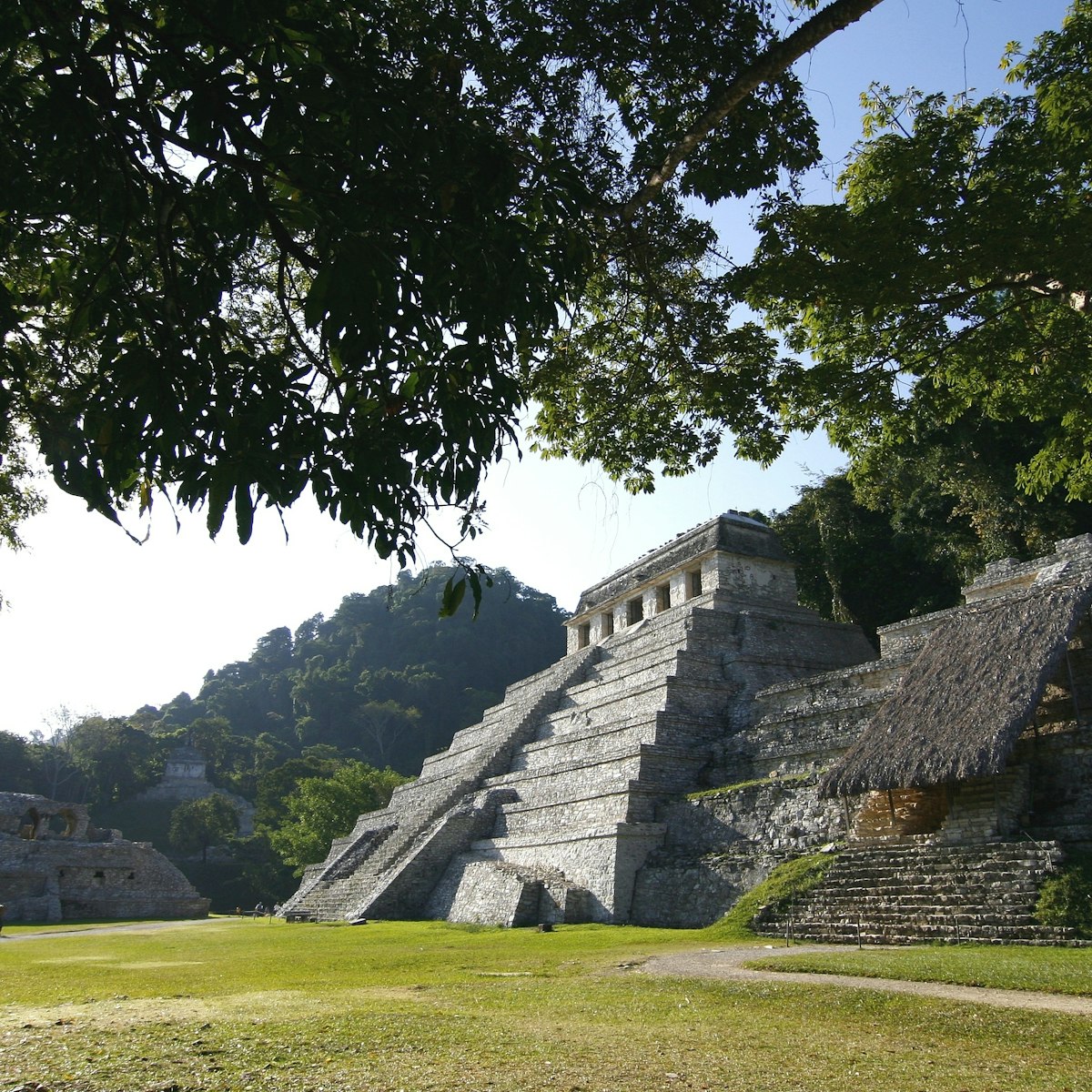
Palenque Ruins
Ancient Palenque stands at the precise point where the first hills rise out of the Gulf coast plain, and the dense jungle covering these hills forms an…

Jungle-shrouded Yaxchilán has a wonderfully atmospheric setting above a horseshoe loop in the Río Usumacinta. The control this location gave it over river…
Templo de las Inscripciones Group
As you walk in from the entrance the vegetation suddenly peels away to reveal many of Palenque’s most magnificent buildings in one sublime vista. A line…
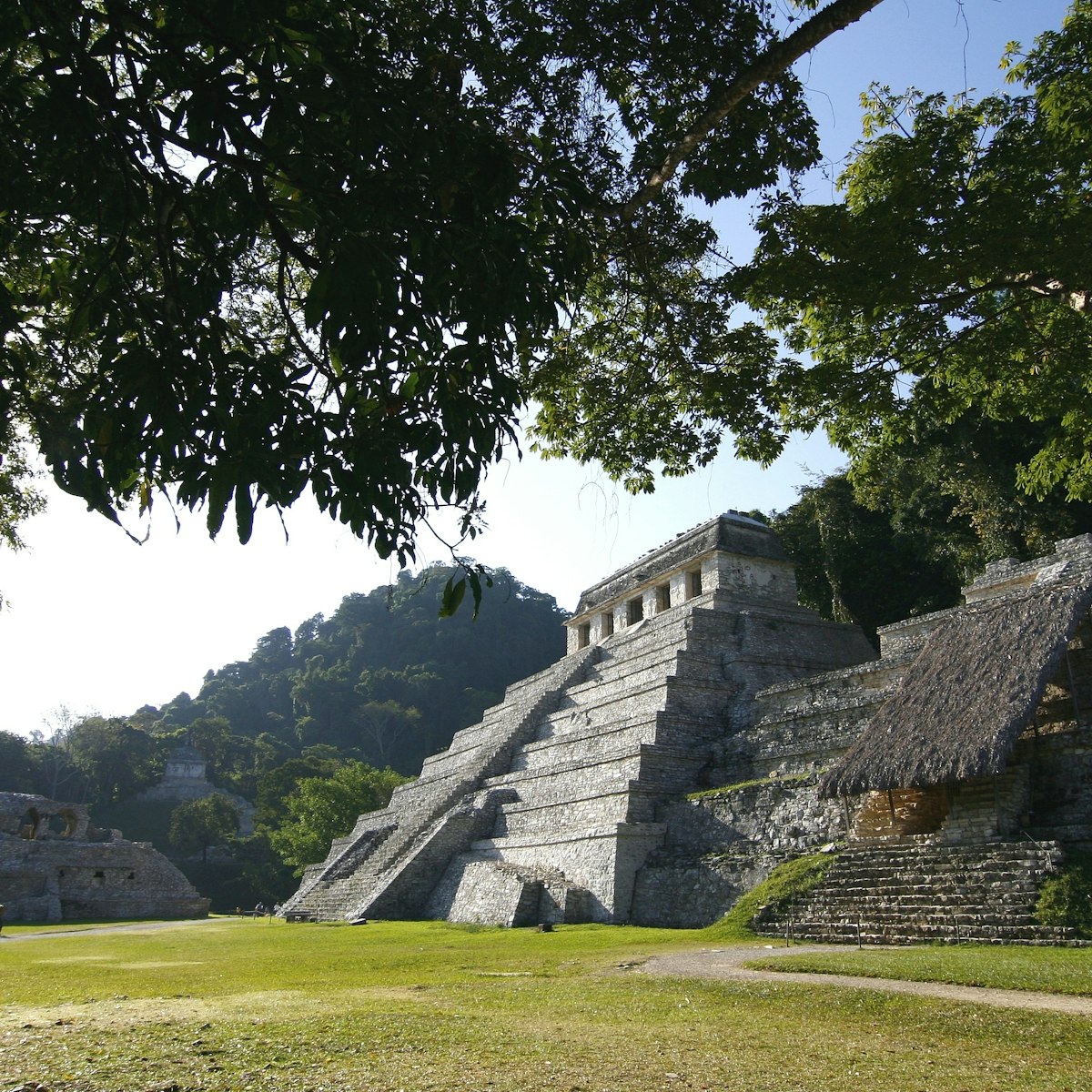
Templo de las Inscripciones
Perhaps the most celebrated burial monument in the Americas, this is the tallest and most stately of Palenque’s buildings. Constructed on eight levels,…
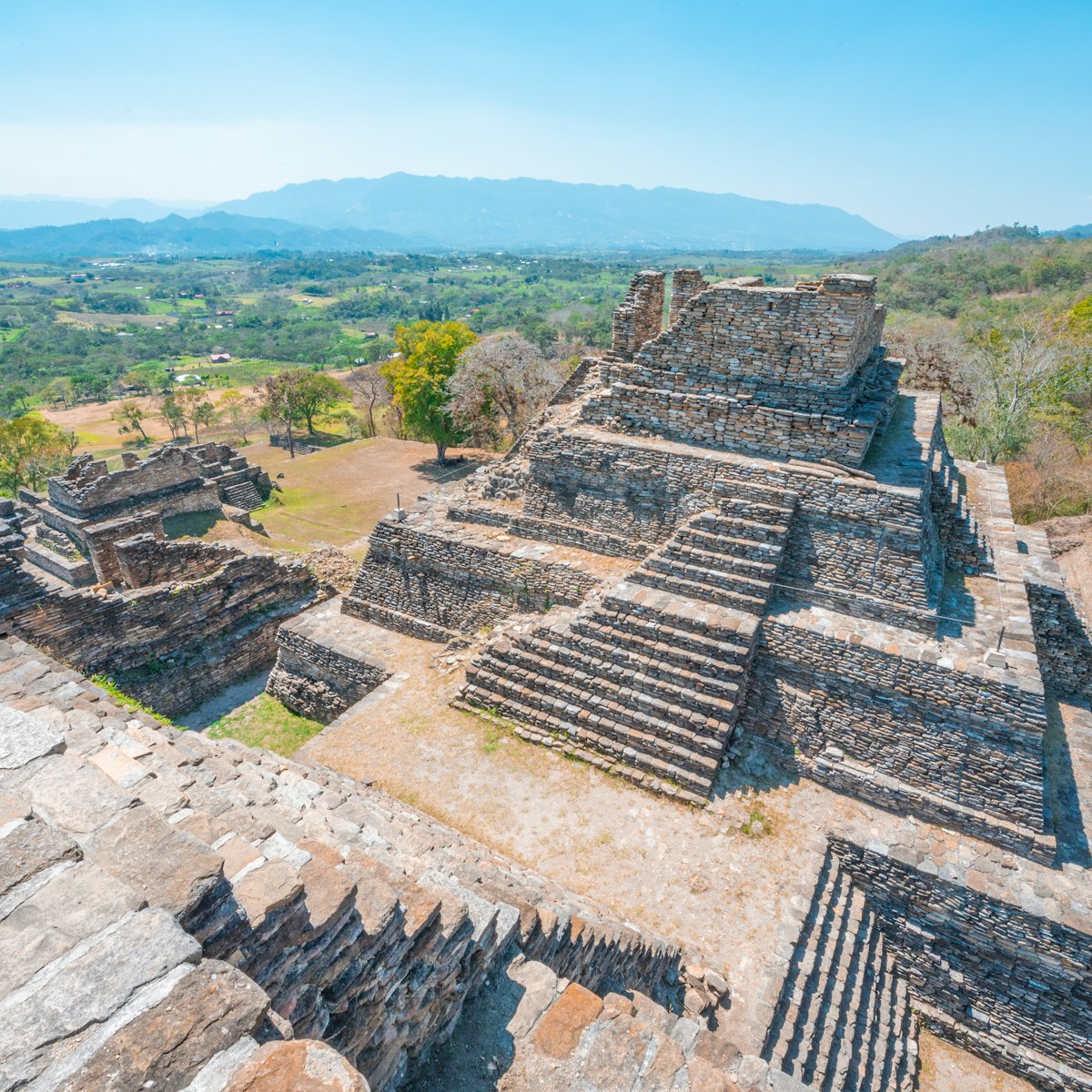
The towering ceremonial core of Toniná, overlooking a pastoral valley 14km east of Ocosingo, is one of the most spectacular archaeological sites in…
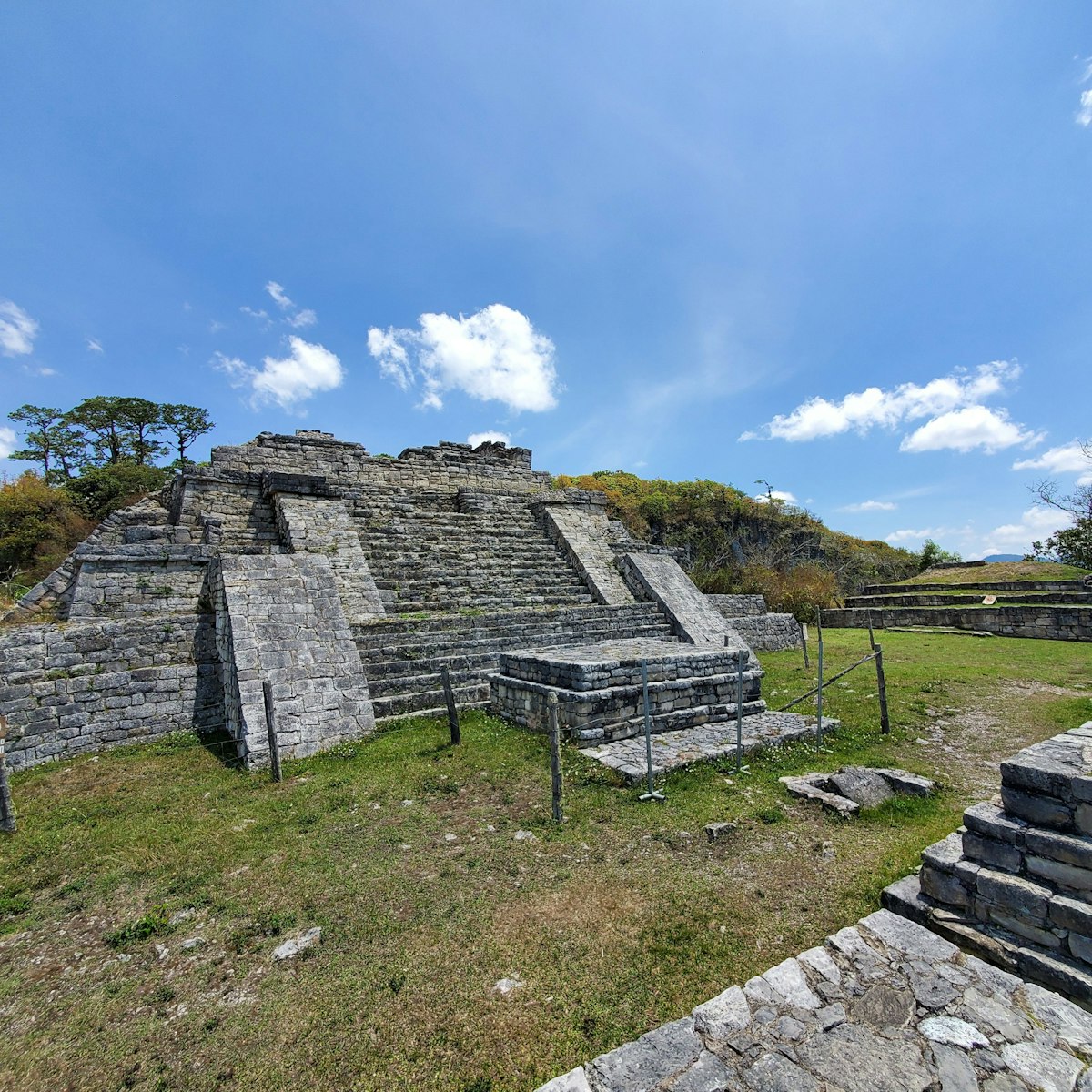
Chinkultic Ruins
With a dearth of other tourists, this is one of those magical archaeological sites where the sense of wild atmosphere is as enthralling as the stories…
Zona Arqueológica de Iglesia Vieja
Believed to be the regional capital of the Zoque during the Classic period, these ruins were inhabited between AD 250 and AD 400. The site's most…
San Cristóbal de las Casas
An atmospheric museum-research center, Na Bolom for many years was the home of Swiss anthropologist and photographer Gertrude Duby-Blom (Trudy Blom; 1901…
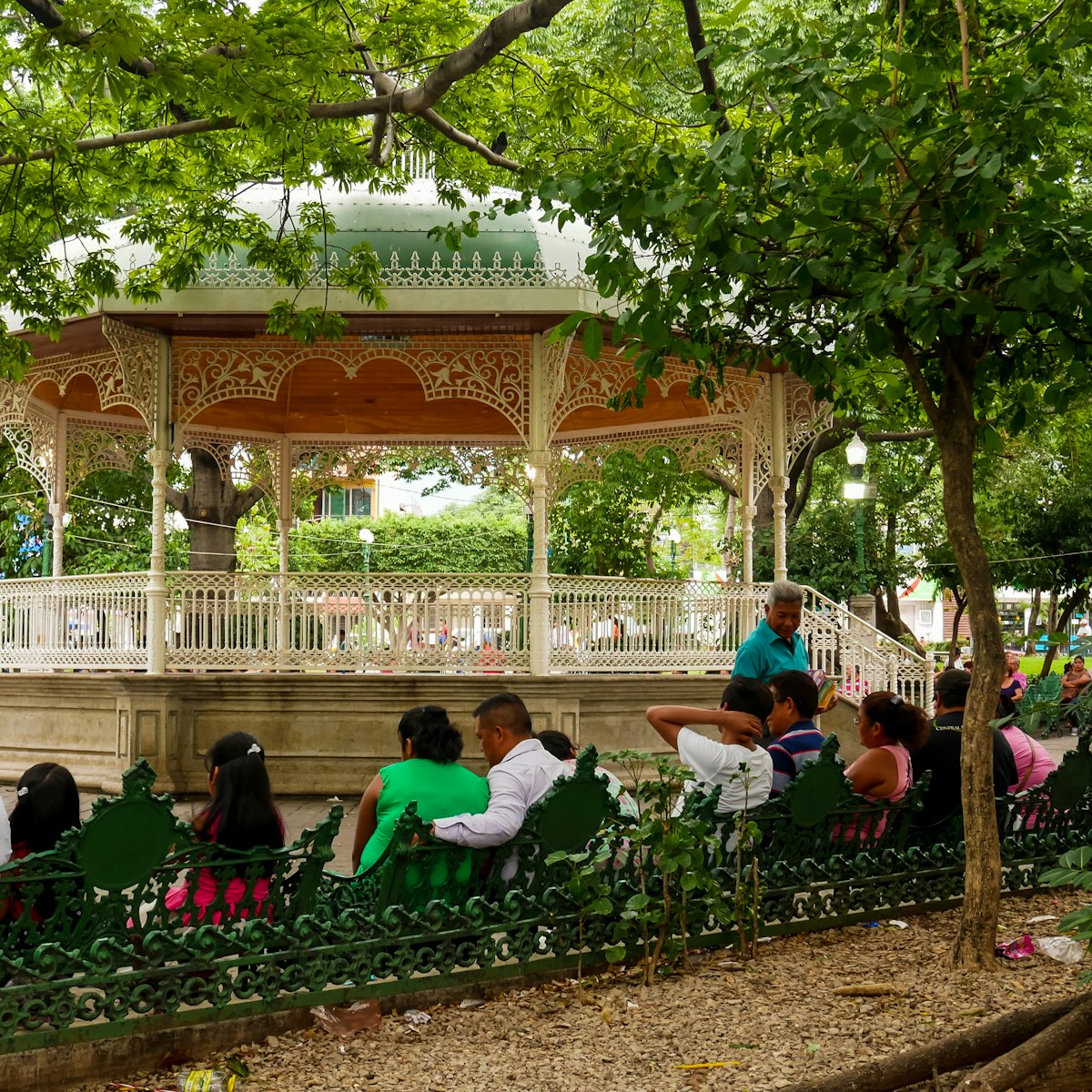
Jardín de la Marimba
To take your evening paseo (stroll) with the locals, stop by this leafy plaza, just eight blocks west of Plaza Cívica. The whole city seems to turn out…
Templo de San Juan
Standing beside the main plaza, Chamula’s main church is a ghostly white, with a vividly painted arch of green and blue. Inside the darkened sanctuary,…
Zoológico Miguel Álvarez del Toro
Chiapas, with its huge range of natural environments, has the highest concentration of animal species in North America, including several varieties of big…
Jardín Botánico Dr Faustino Miranda
The lush oasis of the Jardín Botánico Dr Faustino Miranda is a gorgeous place to visit, as well as being a nice respite from the city heat. The collection…
These mighty waterfalls tumble 120m off the edge of an escarpment 20km southwest of Comitán. In a region with a surfeit of impressive waterfalls, these…
Templo & Ex-Convento de Santo Domingo de Guzmán
Located just north of the center of town, the imposing 16th-century Templo de Santo Domingo is San Cristóbal’s most beautiful church, especially when its…
Cascada de las Golondrinas
A lovely water feature tucked 10km off the highway, where two rivers cascade dramatically from a high point of 35m and you can swim in clear blue water…
Tenam Puente Maya Ruins
These sprawling Maya ruins feature three ball courts, a 20m tiered pyramid and other structures rising from a wooded hillside. Tenam Puente was one of a…
Cascada Welib-Já
Thirty kilometers from Palenque, these 25m-high curtains of water aren't the most dramatic water features in the area, but the turquoise river pools make…
Museo Arqueológico de Comitán
Although this excellent museum is very small it's crammed with treasures from the area’s many archaeological sites (Spanish signage only). It's arranged…
Museo de Sergio Arturo Castro Martínez
The story behind this extraordinary collection – that's overseen by an even more extraordinary person, Don Sergio – is as interesting as the museum itself…
The remote Maya jungle ruins of Bonampak are spread over 2.4 sq km, but all the main ruins stand around the rectangular Gran Plaza. Never a major city,…

Grupo de las Cruces
Pakal’s son, Kan B’alam II, was a prolific builder, and soon after the death of his father started designing the temples of the Grupo de las Cruces…
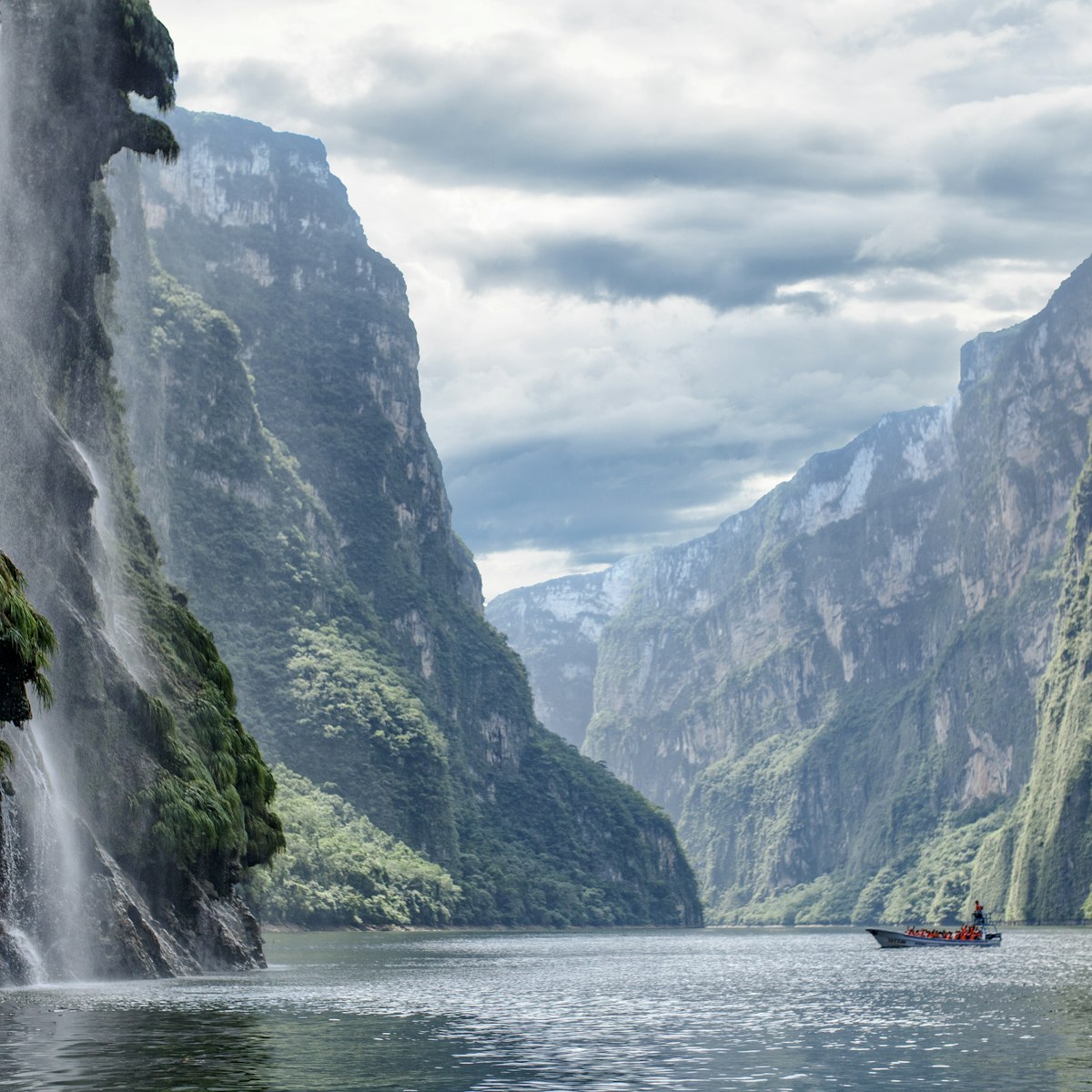
Cañón del Sumidero
The Sumidero Canyon is a spectacular fissure in the earth, found north of Tuxtla Gutiérrez. In 1981, the Chicoasén hydroelectric dam was completed at its…
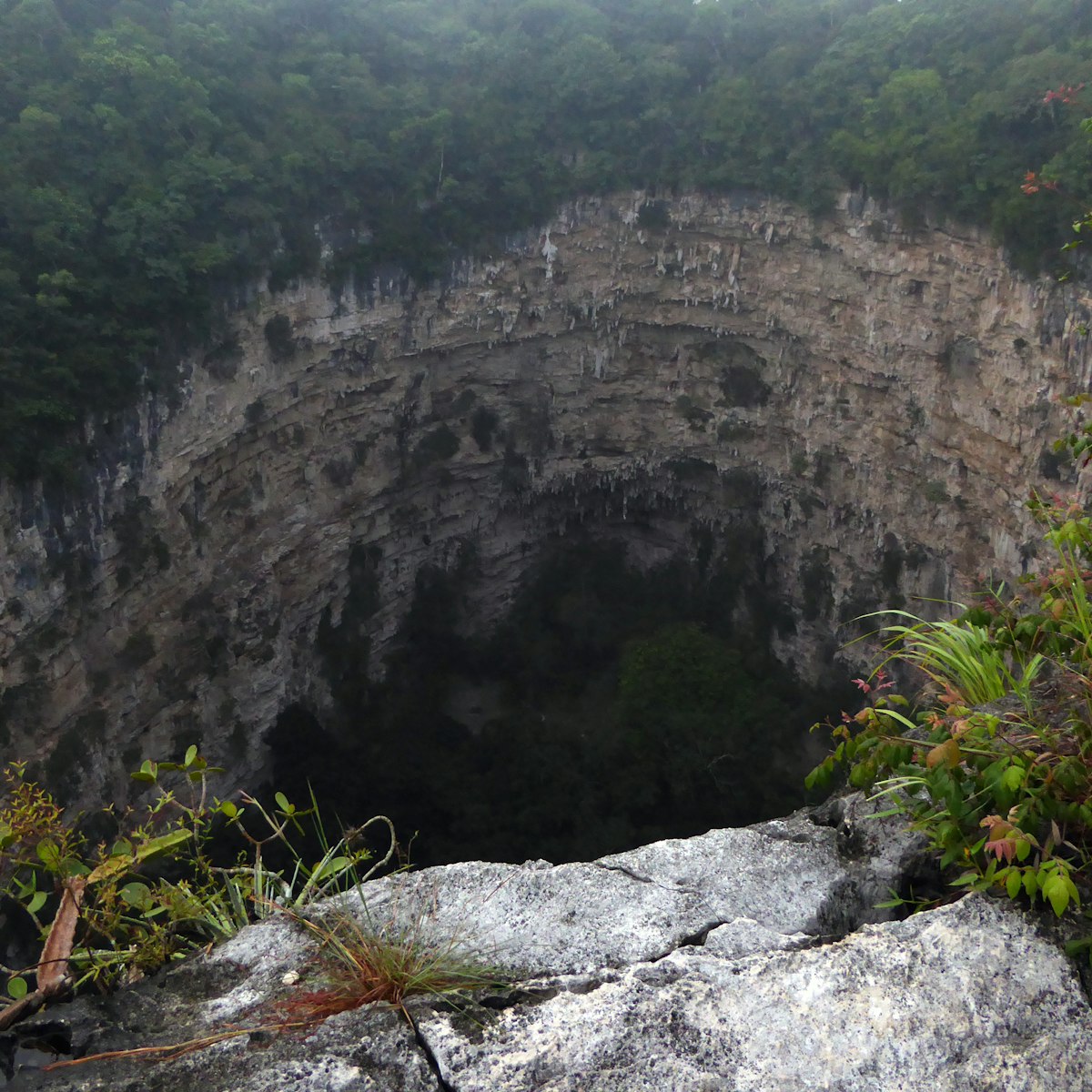
Sima de las Cotorras
The Sima de las Cotorras is a dramatic 160m-wide sinkhole that punches 140m down into the earth into a crater thick with rainforest. At sunrise, a green…
Acrópolis Sur
In the jungle south of the Grupo de las Cruces is the Southern Acropolis, where archaeologists have made some terrific finds in recent excavations. You…
Palenque Northeastern Groups
East of the Grupo Norte, the main path crosses Arroyo Otolum. Some 70m beyond the stream, a right fork will take you to Grupo C, a set of jungle-covered…
In 1999, in Templo XIX, archaeologists made the most important Palenque find for decades: an 8th-century limestone platform with stunning carvings of…
On the north side of the plaza, the candy-colored cathedral was begun in 1528 but wasn't completed until 1815 because of several natural disasters. Sure…
Templo del Sol
The Templo del Sol, on the west side of the Acrópolis Sur plaza, has the best-preserved roofcomb at Palenque. Carvings inside, commemorating Kan B’alam’s…
Templo de la Cruz
Steep steps climb to the Templo de la Cruz, the largest and most elegantly proportioned in Grupo de las Cruces. The stone tablet in the central sanctuary…
Templo de la Cruz Foliada
The corbel arches here are fully exposed, revealing how Palenque’s architects designed these buildings. A well-preserved inscribed tablet shows a king …
Templo XIII
This temple contains the tomb of a female dignitary, whose remains were found colored red (as a result of treatment with cinnabar) when unearthed in 1994…
Templo del Jaguar
Largely unrestored and being reclaimed by the jungle, this temple is a photographer's favorite.
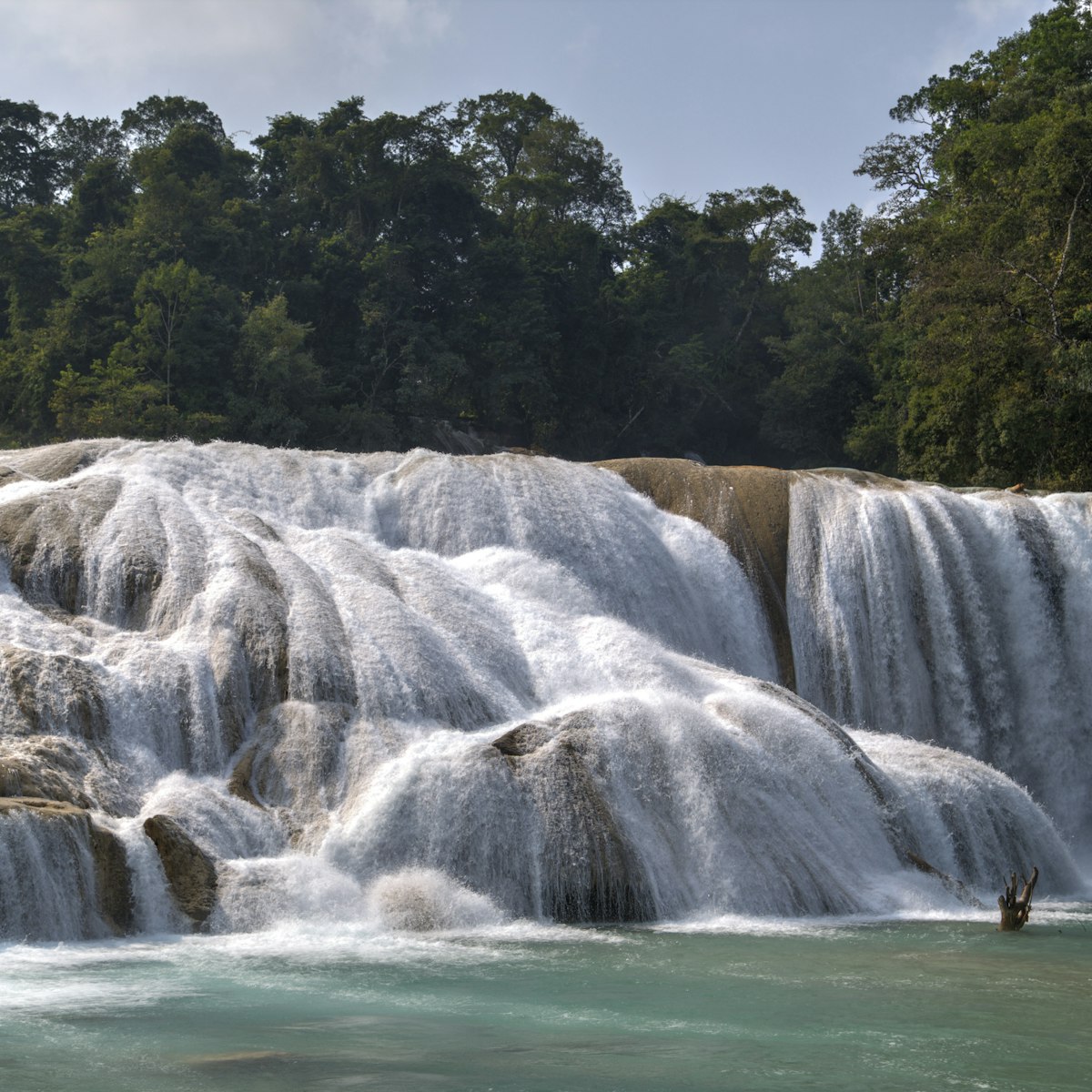
Agua Azul is a breathtaking sight, with its powerful and dazzling white waterfalls thundering into turquoise (outside rainy season) pools surrounded by…
Plan de Ayutla
The remote Maya ruins of Plan de Ayutla sit on an evocatively overgrown site, with buildings in various states of excavation and abandonment. From the…
Izapa Ruins
The small and peaceful pre-Hispanic ruins at Izapa contain three groups of ruins. The northern group (Grupo F) is on the left side of the road if you’re…
Diagonally opposite the Templo de las Inscripciones is El Palacio, a large structure divided into four main courtyards, with a maze of corridors and rooms…
Chiapa de Corzo Archaeological Site
On a trade route between the Pacific and the Gulf, the sprawling Chiapa de Corzo settlement had close ties to neighboring Maya and Olmec cultures. At its…
El Aguacero
Plunging into the sheer Río La Venta canyon, El Aguacero is a gorgeous series of frothy stairsteps that tumble and spray. You'll descend over 700 steps to…
Río Santo Domingo
The Río Santo Domingo is a beautiful, turquoise mess of cascades and rapids accessed from the community lodging at Las Nubes and Ecoturismo Xbulanjá. Some…
Grutas de Rancho Nuevo
The entrance to this long cavern is situated in pine woods 9km southeast of San Cristóbal, a five-minute walk south of the Pan-American Hwy. The first…
More destinations you need to see
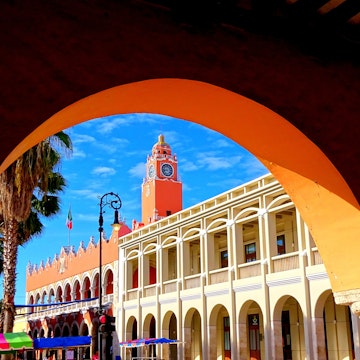

Chiapas: Top 15 Things To Do and Must-See Attractions
Things to do in chiapas: the 15 best places to visit.
Are you planning to visit Chiapas on your trip to Mexico?
That’s a great idea!
Chiapas is a stunning region with nature reserves , archaeological sites hidden in the jungle, traditional communities and colonial cities. It has so much to offer for an unforgettable stay.
To help you plan your trip, I have prepared this guide with all the best things to do and see in Chiapas . It’s a perfect destination to combine with the Yucatan Peninsula on your next trip to Mexico.
In this guide, you will find all the attractions in Chiapas with practical information and my tips so you can make the most of your stay.
So, what are the best places to visit in Chiapas? Where to stay?
Book your tour in Chiapas
- 1.The archaeological site of Palenque
2. The Misol-Ha Waterfall
3. the waterfalls of agua azul, 5. bonampak and yaxchilán, 6. ecotourism in the lacandon jungle, 7. san cristobal de las casas, 8. the sumidero canyon, 9. visit the tzotzil communities, 10. el chiflón waterfalls, 11. montebello lakes, 12. comitan de dominguez, 13. visit a coffee hacienda, 14. tuxtla gutierrez, 15. taste the gastronomy of chiapas, tourist map of chiapas, san cristobal de las casas, comitan de dominguez, tuxtla gutierrez, my tips for visiting chiapas, how to get to chiapas, by colectivo, is chiapas dangerous, what is the best time to go to chiapas, you’re traveling in mexico these articles will help you.
If you just want to book an activity in Chiapas at the best price , without reading the article (although I recommend reading it for all the details!), here’s the summary table of the best activities in Chiapas.
The great thing is that for all the activities I present in this article, cancellation policy is flexible.
Simply click on the names of the activities to make your reservation:
Best Things to Do in Chiapas
1. the archaeological site of palenque.
Palenque is one of the must-see places in Chiapas . It was one of the most important Mayan cities, along with Tikal in Guatemala and Calakmul in Campeche .
Surrounded by the jungle, Palenque offers a unique experience of exotic bird songs and monkey howls.
It is a World Heritage Site by UNESCO and one of the most impressive archaeological sites in the world.
Palenque has many attractions to explore:
- The Temple of the Inscriptions , where the tomb of K’inich Janaab’ Pakal I , a 7th century ruler, was found with valuable artifacts, such as a jade mask. You can see a replica of the tomb at the Museum of Anthropology in Mexico City , which is worth visiting if you are in the capital!
- The Palace , which has a magnificent view of the site.
- The Cross Group , with the Temple of the Cross, the Temple of the Sun and the Temple of the Foliated Cross, related to three deities of Palenque.
- The Museum of Palenque , one of the most important museums of Mayan archaeology with 6 rooms displaying 234 artifacts from the region.
You may also like: How to Visit the Archaeological Site of Palenque
How to visit Palenque:
- You need to pay 2 entrance fees: 97 pesos (includes the ruins and museum) and 85 pesos (entrance to the national park)
- The archaeological zone is open from 8 am to 5 pm, and the museum from Tuesday to Saturday from 9 am to 4 pm
- You can get there from the town of Palenque (5 miles) by driving along the Palenque Archaeological Zone Highway for about 30 minutes, or by taking a colectivo (shared taxi) that goes between the town and the ruins.
If you want to visit Palenque from San Cristobal d e las Casas , you can also book this one-day tour that includes pick-up at your hotel, entrance to the Agua Azul and Misol-Ha waterfalls , and a guided visit to Palenque.
You can book it here :
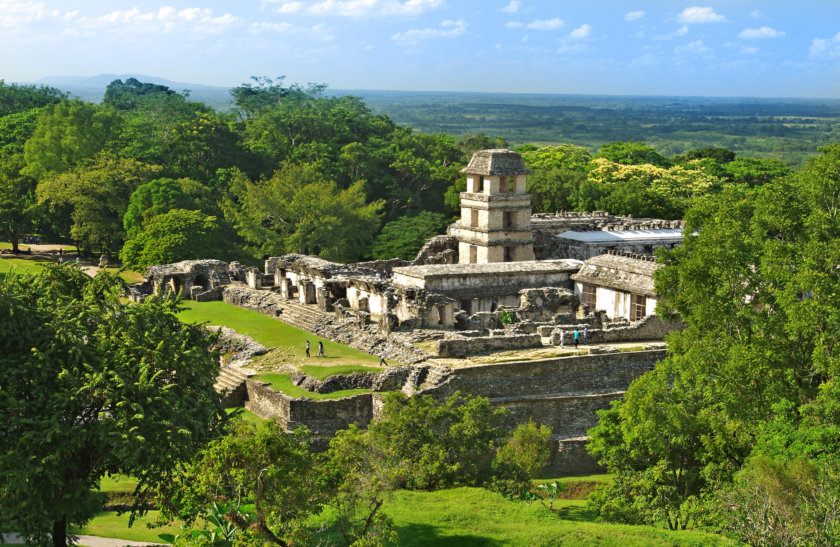
Misol-Ha is a spectacular place in Chiapas that you won’t regret visiting! It is a 100 ft waterfall surrounded by a lush jungle that creates a large natural pool where you can swim.
Misol-Ha is close to the ruins of Palenque , the Agua Azul waterfalls and the Mayan site of Toniná . You can easily do the whole tour in one day.
If you want to save time and hassle, I suggest you book this tour (click here!) , which includes pick-up from your hotel in San Cristobal de las Casas , visit to Misol-Ha, Agua Azul and Palenque.
Fun Fact Misol-Ha and Palenque were the main filming locations for the movie Predator (1987) with Arnold Schwarzenegger.
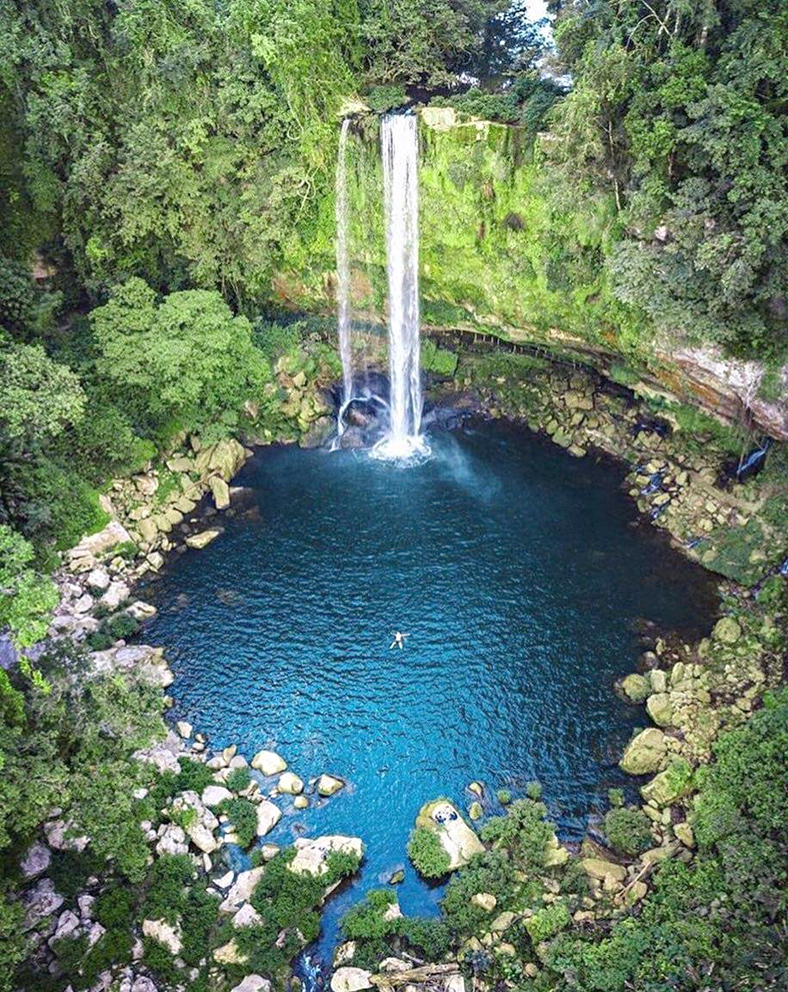
The Agua Azul waterfalls are one of the most stunning sights in Chiapas.
The water has a magical color because of the high concentration of limestone in the Yax-Ha river , which feeds the waterfalls.
Don’t forget to bring your swimsuit to enjoy the natural pools!
How to visit Agua Azul:
- The entrance fee is 80 pesos (2 tickets of 40 pesos), open from 8 am to 6 pm
- If you are driving from Palenque : take highway 199 Palenque-Ocosingo and after 40 miles turn right on the road leading to Agua Azul (there is a blue sign).
- If you are taking public transport from Palenque : take a colectivo to Ocosingo (1h30, 80 pesos) and tell the driver that you are going to Agua Azul. He will drop you off at the intersection of the road to Agua Azul. You can either take a cab from there (30 pesos) or walk 2.5 miles
- If you want to join a guided tour, you can book this one (click here!) that includes pick-up from your hotel in San Cristobal de las Casas, visit to Palenque, Agua Azul and Misol-Ha.
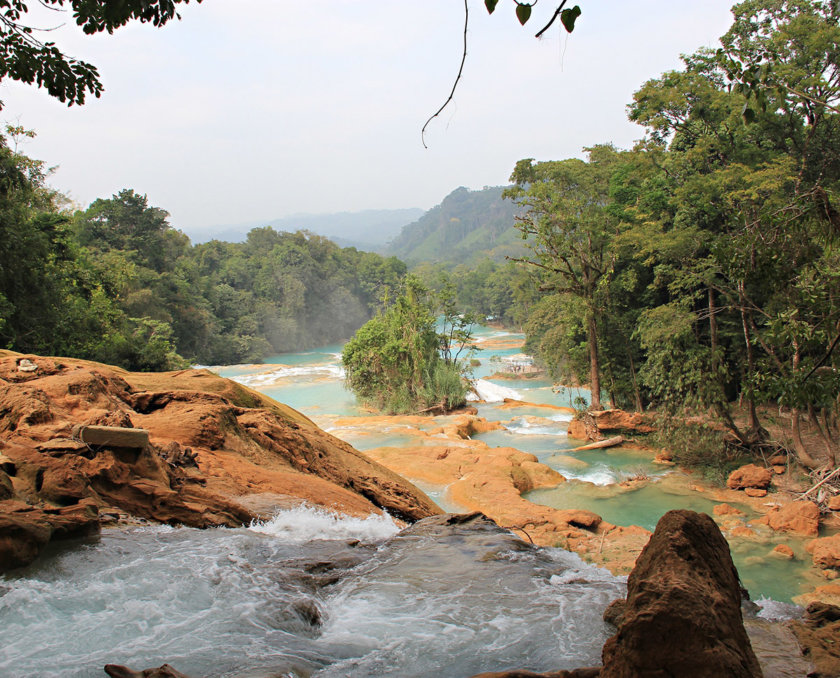
Toniná is a hidden gem in Chiapas that you should visit. It is an archaeological zone with an impressive 7-story temple or Acropolis that has many altars, temples, houses and palaces.
You can enjoy a stunning panoramic view of the surroundings if you climb the 260 stairs to the top of the pyramid.
Did you know that the pyramid of Toniná is taller than the Pyramid of the Sun in Teotihuacán and the Pyramid of Cholula in Puebla ? It is 250 ft high!
Toniná has many attractions to see, such as temples, sculptures, murals, labyrinths, two Mesoamerican ball game courts and a museum. To make sure you don’t miss anything on your visit, it’s worth hiring a guide .
How to visit Toniná:
- The entrance fee is 75 pesos (also includes the museum), guide service (optional) costs about 200 pesos
- The closest town to Toniná is Ocosingo. You can take the ADO bus from San Cristóbal or Palenque to Ocosingo (2h30 or 2h50), then a combi from Ocosingo to Toniná (20 min)
- If you are driving, you need to get to Ocosingo by taking Highway 199 from San Cristobal or Palenque. After Ocosingo, take Highway 218 and turn left on the road to Toniná (25 min).
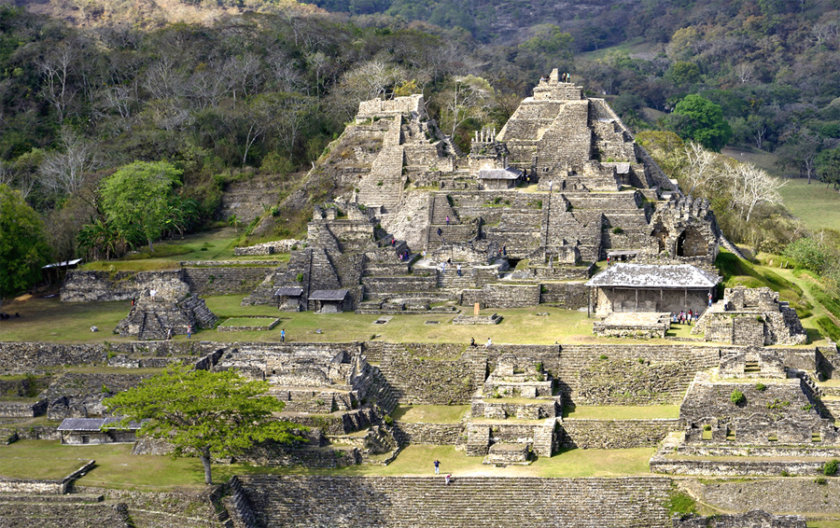
Bonampak , which means “painted walls” in Mayan, is a small Mayan site that flourished from the 6th to the 9th century. You should visit it if you want to see some amazing Mayan art.
It is famous for its incredible murals in the three rooms of Structure 1 or “ Temple of Murals ”. They show the life of the time, such as priests and nobles, war and prisoners, human sacrifices, dancers, customs, etc.
These murals are priceless because they are the most complete representation of a pre-Hispanic civilization discovered so far!
Bonampak was a vassal of Yaxchilan , an important city that dominated the region and today is known for its sculptures, considered masterpieces of Mayan art.
Yaxchilan is located only 12 miles away, on the banks of the Usumacinta River , which forms the border with Guatemala.
How to visit Bonampak and Yaxchilán:
It is not very easy to get there on your own…
- There is no public transportation
- To reach Bonampak , you can drive up to a certain point, but then you have to take a van from the community of Lacanjá.
- To reach Yaxchilán , you can only take a boat (40 min) from Frontera Corozal .
So the best option is to take a tour to Bonampak and Yaxchilán from Palenque , which includes pick up at your hotel, the guide and entrance fees to the sites, the river ride, breakfast and lunch.
You can book it here:
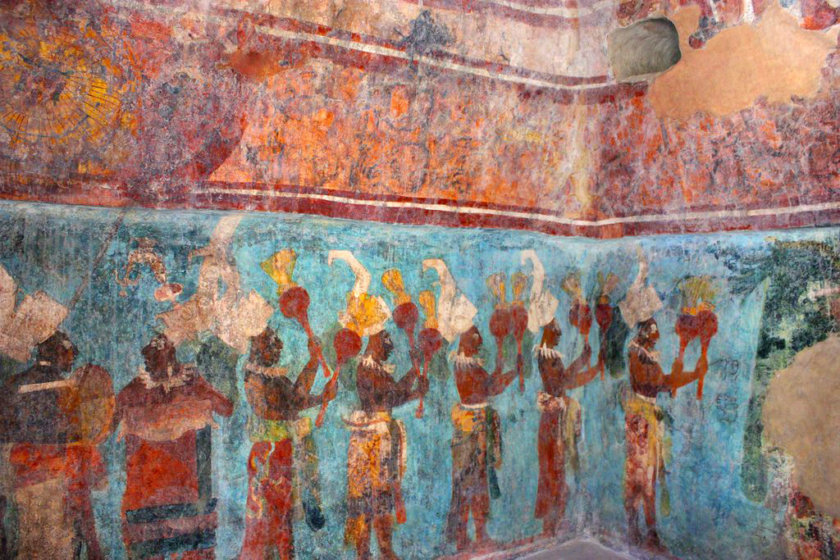
The Lacandon Jungle is one of Mexico’s most amazing rainforests and a must-see in Chiapas!
It became a Natural Monument in 1992, protecting the animals that inhabit its 4357 hectares, such as the jaguar and the eagle, which were symbols of power for the Mayas, as well as various species of monkeys, parrots, toucans, etc.
In this lush jungle, you can meet the Lacandones and experience their daily life surrounded by nature.
What to do and see in the Lacandon Jungle:
- Explore the Montes Azules Biosphere Reserve , a pristine and well-preserved area of the jungle
- Spend a night at the Top Che ecotourism center run by a Mayan family
- Visit the archaeological sites of Bonampak , Yaxchilan and Lacanja
- Go to the Las Nubes ecotourism center (40 pesos entrance fee) to see the waterfalls and walk along the trails until you reach the viewpoint
- Visit the La Guacamaya ecotourism center (free entrance) which is involved in the conservation of the scarlet macaw . They offer tours on the Lacantun River and trekking excursions to fund the center
My tip If you like adrenaline, you can take this tour in the Lancandon jungle (click to book!) from Palenque with hiking and rafting .
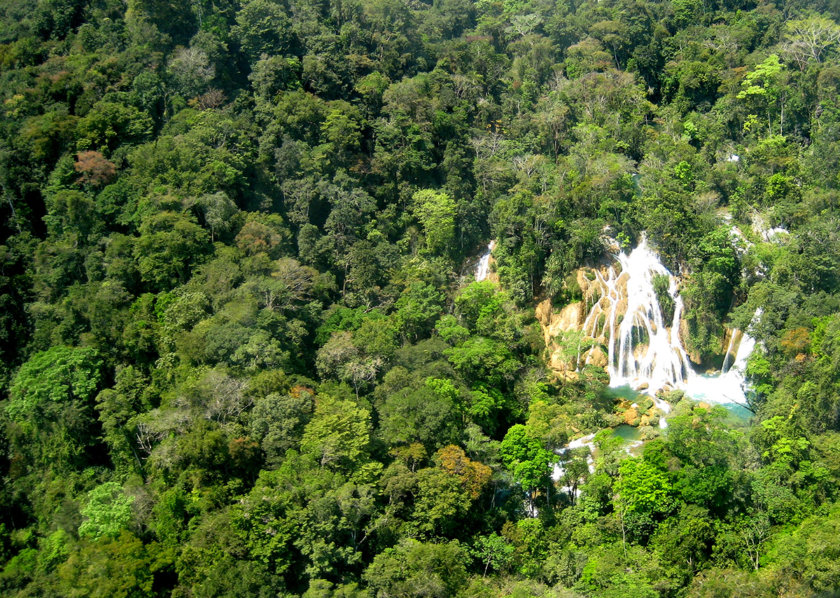
San Cristobal de las Casas is the cultural capital of Chiapas , located 7,000 ft above sea level.
It is a colonial city that was founded in 1528 by Diego de Mazariegos. It has preserved its traditional charm and authenticity with its cobblestone streets, colorful houses, churches and markets.
Its architectural richness reflects the greatness of this city that was the capital of Chiapas until 1892.
What to do and see in San Cristobal de las Casas:
- The Zócalo , the main square of the city, and the cathedral
- The Guadalupe Church , which you can reach by climbing 79 steps. It offers a beautiful view of the city
- Na Bolom , a cultural association located in a lovely colonial house that works for the preservation of the Lacadon culture
- The Textiles of the Maya World Center which displays 500 beautiful Mayan textile pieces from Chiapas and Guatemala
- The Temple of Santo Domingo de Guzman , a stunning example of baroque architecture in Chiapas
- Visit the markets: the Mercado de Dulces y Artesanías for sweets and souvenirs, the Mercado de Artesanías de Santo Domingo for handicrafts or the Mercado Viejo to experience local life
- The Calle Real de Guadalupe with shops and restaurants
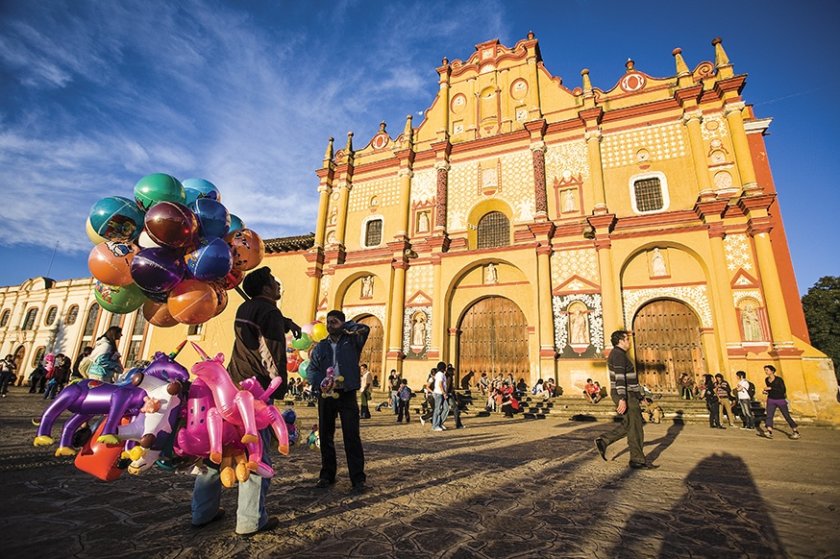
The Sumidero Canyon is a natural wonder of Mexico , a national park and a Ramsar site. It is one of the highlights of Chiapas !
It is a geological fault formed 35 million years ago and crossed by the Grijalva River . You can take a boat ride to enjoy the amazing scenery.
You will see birds sunbathing (there are 195 species in the area!), some monkeys and crocodiles, and many natural formations.
Its most famous attractions are the Cave of Colors with a sculpture of the Virgin of Guadalupe and the Christmas Tree , a waterfall named after its shape.
Besides the boat ride , I highly recommend you to go up to the viewpoints to have a view from above. It is even more impressive!
- Check out my Complete Article About the Sumidero Canyon , where I explain how to get there on your own or with a tour, take the boat ride and go to the viewpoints!
How to visit the Sumidero Canyon:
- By boat : you can take a boat ride from one of the four docks: Unidad Deportiva, Cahuaré, Belisario Domínguez and Chiapa de Corzo. If you go by yourself, you will have to wait for the boat to fill up with other passengers.
- By car: you can drive to the viewpoints that offer spectacular views of the canyon from above. The viewpoints are La Ceiba, La Coyota, El Tepehuaje and Los Chiapa.
How to get to Sumidero Canyon If you don’t have a car, it is quite complicated to get to the Sumidero Canyon , especially to the viewpoints.
The best option in this case is to join a tour like I did. It is a small group tour that includes transportation, a boat ride on the Grijalva river and a visit to the viewpoints, with free time in Chiapa de Corzo.
To book , click here on the name of the tour that suits you better (the only difference is the departure point):
- Sumidero Canyon Tour from San Cristobal de las Casas
- Sumidero Canyon Tour from Tuxtla Gutierrez
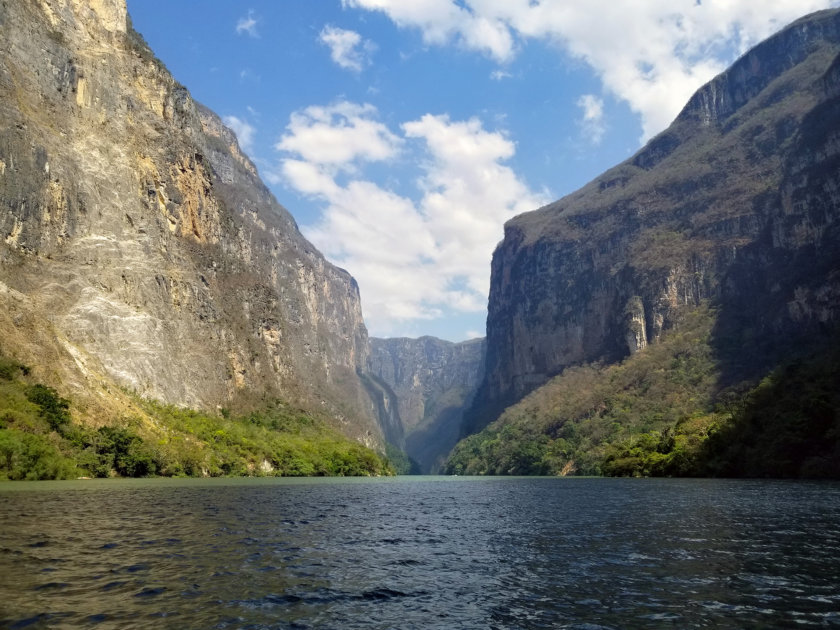
If you want to experience the culture of the tzotzil people , you should visit these two communities near San Cristobal de las Casas :
- Zinacantán is a small town known for the beauty of its traditional clothing . You can learn about the textile production process in a workshop and visit the church of San Lorenzo .
- San Juan Chamula , whose inhabitants wear black or white lamb’s wool clothing. Its church is a fascinating mix of Mayan and Catholic rituals in a mystical atmosphere . It is a must-see in Chiapas!
I invite you to read My Article about Zinacantán and the Complete Article about San Juan Chamula !
My tip They are autonomous communities with their own laws and the police have no authority here.
It is very important to be respectful and not take any photos of the people or the inside of the church of San Juan Chamula.
How to visit San Juan Chamula and Zinacantán:
- By car: from San Cristóbal, take the Puerto Caté-San Cristóbal Highway (25 min).
- By public transportation: colectivos go from the San Cristobal municipal market (25 pesos).
- You can join a tour from San Cristóbal de las Casas that includes transportation, a visit to Zinacantán with a demonstration of traditional weaving and a tasting of pox (a local alcoholic drink), and a visit to San Juan Chamula to discover its church and cemetery.
Book it here:
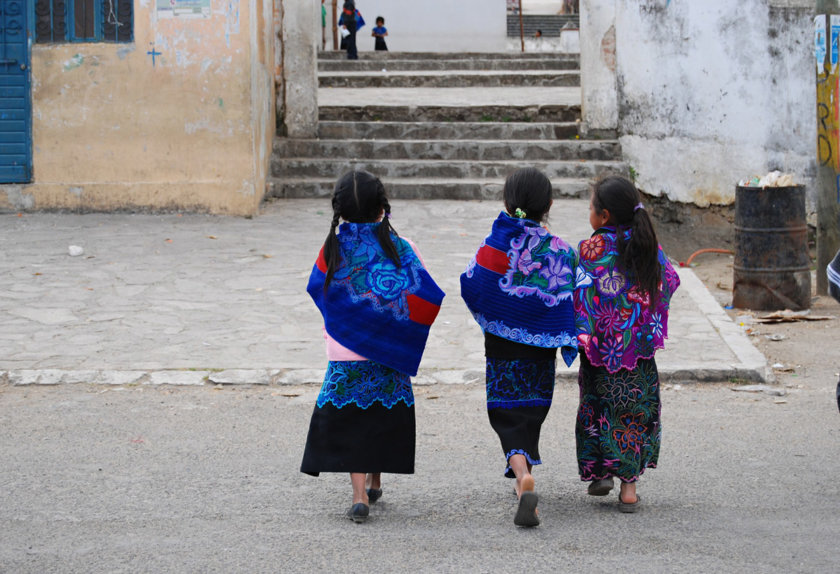
El Chiflón was one of the best surprises of my trip to Chiapas!
It is a beautiful natural site in Mexico located between the mountains and the rainforest.
It has 5 turquoise waterfalls , fed by the San Vicente River: El Suspiro, Ala de Angel, Velo de novia (the highest, 395 ft), Arcoiris and Quinceañera.
The park has a trail of about 1 mile that lets you see all the waterfalls in the middle of nature. It is easy for everyone to enjoy .
- Check out: My Complete Article about El Chiflón with all the practical information
How to visit El Chiflón:
- Entrance fee to El Chiflón : 80 pesos, option to zip-line (200-650 pesos, price varies according to the length you choose).
- There is a campground and cabins at El Chiflón if you want to spend the night there
- To get there from Comitán de Domínguez , take highway 226; or a colectivo to Socol or Tuxtla and ask the driver to stop at El Chiflón (45 min), then walk for 10 min.
- To get there from San Cristóbal de las Casas , take the 190 and then the 101 (2h20). To get there by public transport, you have to go through Comitán de Domínguez first.
If you don’t have a car, the best option is to take a tour to Cascadas El Chiflón because the distances are long!
It includes transportation from San Cristobal de las Casas , a visit to Lagunas de Montebello and free time for you to explore El Chiflón. Book it here:
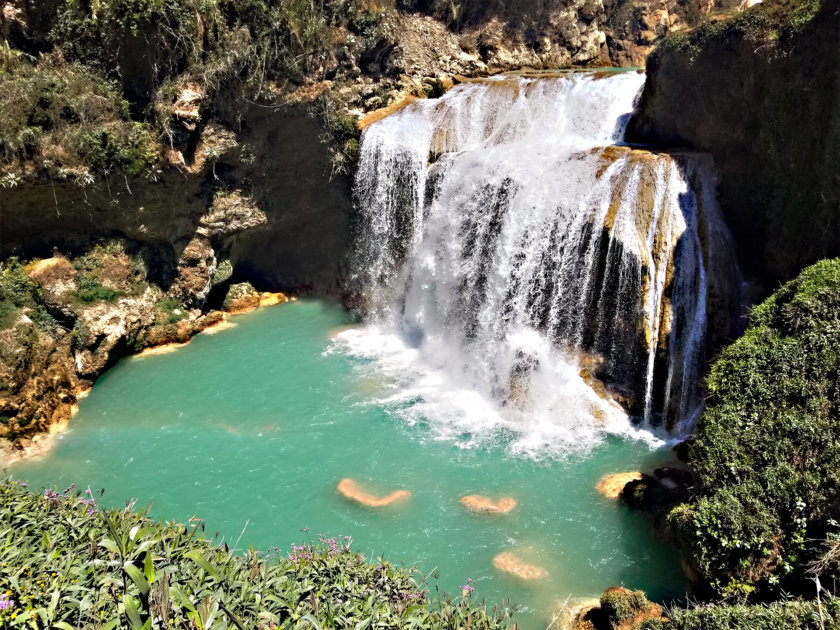
The Lagunas de Montebello National Park is a vast natural area of 23 square miles that has been declared a Biosphere Reserve by UNESCO.
The park is very big (with 59 lakes !) and of course you can’t see them all. These are the lakes I recommend you to visit in Montebello Park :
- Lake Tziscao is the largest and deepest lake in the park, located on the border with Guatemala . You can find cozy cabins and small restaurants where you can spend the night.There are small restaurants and cabins to spend the night .
- Lake Pojoj boasts an Orquídeas Island, which you can access by renting a raft (100-150 pesos, depending on the duration) or a kayak (1h, 80 pesos)
- Cinco Lagos consists of five interconnected lakes that offer the most breathtaking view of the park . You can enjoy a raft ride or rent a cabin there.
- Lake Montebello is the perfect place to conclude your visit to the park. It has a charming atmosphere and you can relax in the small restaurant with a cup of typical Mexican chocolate by the lake.
Check out: My Complete Guide to Visit the Lakes of Montebello!
My tip El Chiflón is a convenient stopover if you are traveling to Montebello Park from San Cristobal.
How to visit the Lagunas de Montebello National Park:
- Getting there from Comitán de Domínguez : 1 h by Highways 190 and 307. If you go by public transport, the colectivo (1h15) leaves every hour from Calle 13a Sur Poniente and stops at Cinco Lagos. Be careful not to miss the last colectivo or you will be stuck!
- Getting there from San Cristóbal : there is no public transportation. You have to take Highway 101 to Comitán de Domínguez and then Highway 307 (total 4h-4h30).
If you are staying in San Cristobal de las Casas , the most convenient way is to join a tour because there is no direct public transportation and, even if you have a car, the road is long and has many curves and bumps.
I recommend this tour that includes transportation, a visit to the Lagunas de Montebello and El Chiflón . Click on the name of the tour:
- El Chiflón + Lagunas de Montebello Tour from San Cristobal de las Casas
- El Chiflón + Lagunas de Montebello Tour from Tuxtla Gutiérrez
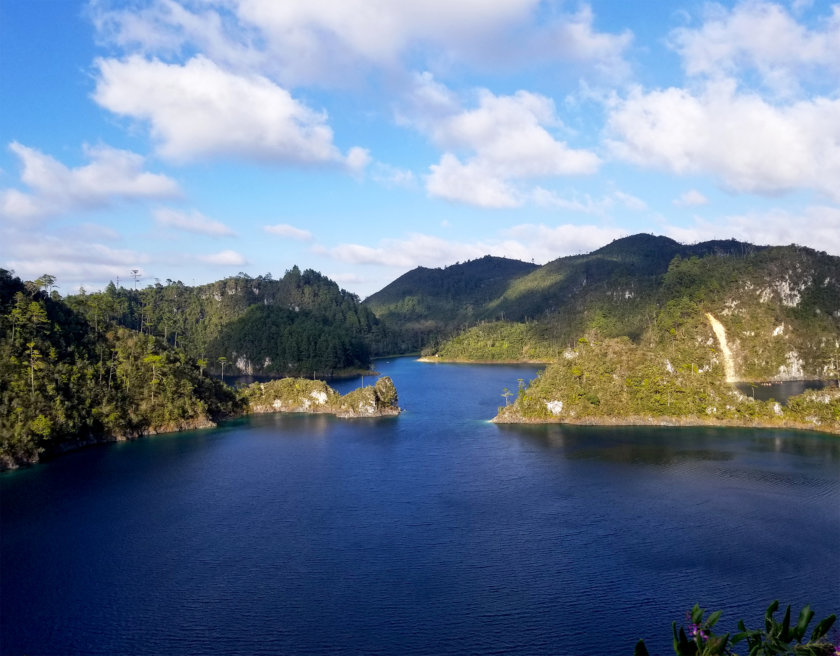
Comitán de Domínguez is a city in the south of Chiapas that will delight you with its gothic, baroque and art nouveau architecture. It is also a city with a rich gastronomy, famous for its typical distillate, the Comiteco , which you can pair with spicy butifarra sausage.
Some of the attractions that you can enjoy in Comitán de Domínguez are:
- Mercado 1 de Mayo , a market that has been operating for over 100 years. There you can sample jocoatol, a fermented corn drink, and atole de granillo, a corn-based beverage with sugar and cinnamon.
- Stroll through the streets to see the Templo de Santo Domingo de Guzman, the Chapel of San Sebastian, the Church of San Jose, the Juanchavin Theater and the Municipal Palace.
- The charming neighborhood of Caralampio , where you can see colorful houses and murals.
- The Hermila Dominguez de Castellanos Art Museum
- A coffee break on the terrace of the Rosario Castellanos Cultural Center , which is housed in a former convent from the 16th century.
- The House-Museum of Dr. Belisario Domínguez , who was a prominent politician who gave his name to the city.
From Comitan, you can also explore the Mayan ruins of Tenam Puente and Chinkultik , the waterfalls of El Chiflon , or dive in the cenote Chucumaltik !
How to get to Comitán de Domínguez:
- From Tuxtla Gutierrez : by car (2h45) take Highway 190D and then Highway 190; or by ADO bus (3h20)
- From San Cristóbal de las Casas : by car (1h50) take Highway 190; or by ADO bus (2h).
If you want to discover more of Comitan de Dominguez and its surroundings, you can join a tour that includes hotel pick-up , lunch and a visit to the stunning waterfalls of Las Nubes in the Lacandon jungle. To book this amazing experience, just click on the tour name below:
- Comitan + Las Nubes Tour from San Cristobal de las Casas
- Tour Comitán + Las Nubes from Tuxtla Gutiérrez
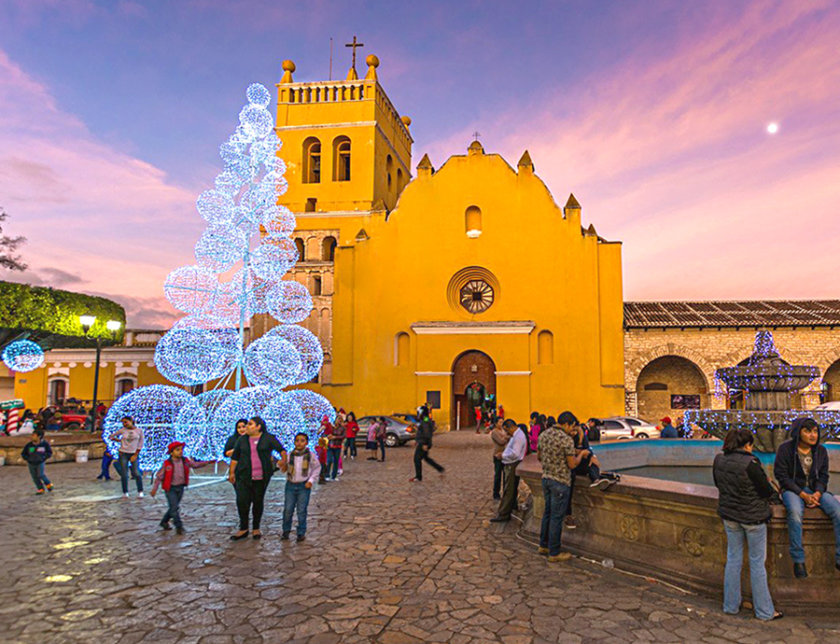
If you are a coffee lover, you should visit a coffee hacienda in Mexico . Coffee was introduced to Mexico in the 18th century and today it has a controlled designation of origin in the states of Veracruz and Chiapas , which is the largest coffee producer in the country.
You can visit several coffee farms that welcome travelers and offer more than just a cup of coffee. You can also enjoy ecotourism activities , such as hiking, horseback riding, mountain biking, and staying overnight at the farm.
You can follow the Coffee Route to explore the farms of Irlanda, Argovia, Hamburgo and La Chiripa, where you can learn about the history and culture of coffee production. You can also discover natural attractions like the San Francisco waterfall , which is a hidden gem in the jungle.
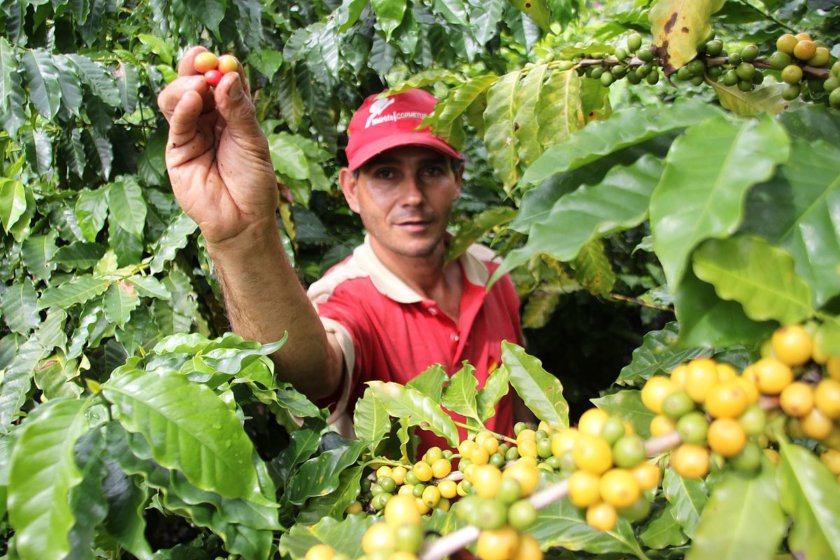
Tuxtla Gutiérrez is the capital city of Chiapas and a lively place with an airport. It can be a great starting or ending point for your trip through Chiapas.
Some of the attractions that you can enjoy in Tuxtla Gutiérrez are:
- Marimba Garden Park , where people gather from 7 pm to dance to the rhythm of the marimba, a musical instrument invented in Chiapas.
- The Marimba Museum, located right in front of the park, which tells the history and evolution of this instrument.
- The regional museum , which displays the history and culture of Chiapas from pre-Hispanic times to the present day.
- The Faustino Miranda Botanical Garden
- The Cathedral of San Marcos, which has a stunning façade that is illuminated by a show of lights, sounds and colors from Thursday to Sunday at 8 pm.
And if you want to taste the famous Chiapas coffee I recommend Café Avenida , an emblematic place on Avenida Central that has been serving delicious coffee since 1936!
Chiapas is a paradise for food lovers , as it offers a variety of typical dishes and drinks that reflect its rich and diverse culture.
Some of the dishes that you should try are: sopa de pan , a hearty soup with bread, egg and plantain; tamal chiapaneco , a corn dough filled with chicken, pork or cheese and wrapped in banana leaves; queso relleno , a cheese ball from Ocosingo, stuffed with pork and cooked in tomato sauce.
Another delicacy is tascalate , a refreshing drink made with roasted corn, cocoa, achiote and cinnamon.
Finally, there is pox , a traditional liquor made from corn, sugar cane and wheat, used in Mayan ceremonies for 2000 years.
It is quite strong (39% to 53%), so I suggest you start with a milder one that is infused with fruit. You can find them at La Posheria in San Cristobal de las Casas, a cozy place that offers different flavors of pox and other local products.
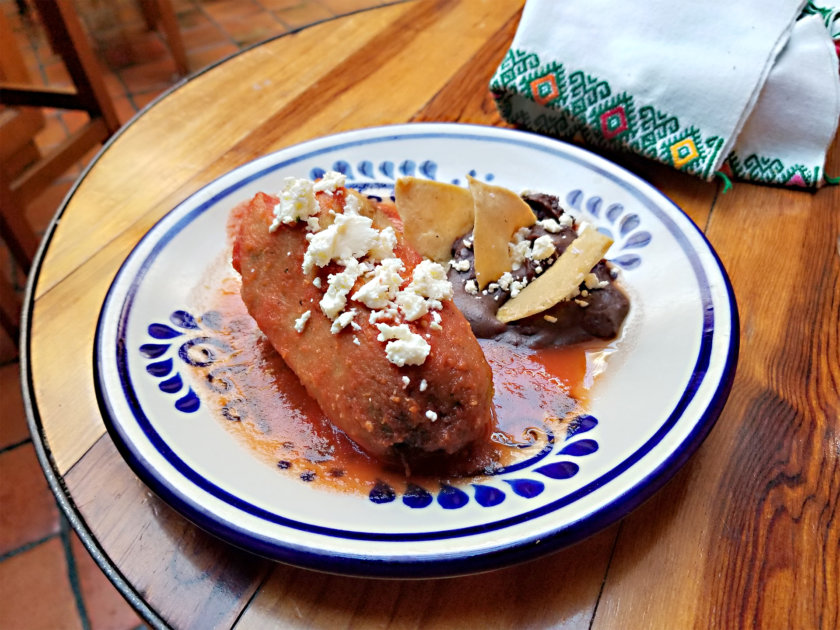
Here you have a map with the main tourist attractions of Chiapas !
Where to stay in Chiapas?
- The Coffee Bean Hostel : A very cozy hostel with nice common areas, a restaurant and bar, a garden, terrace with hammocks, pool tables and several breakfast options, starting at 12 $usd in a shared dorm!
- Parador Margarita : Only 3 blocks from the main square and the bus station, it is a small haven of peace with a garden and very comfortable beds. Wifi and breakfast are included, only 46 $usd per night!
- Hotel Diego de Mazariegos: A magnificent 18th century mansion with a preserved Mexican colonial style, a charming interior courtyard with a fountain and classic decoration in warm tones. The hotel has two restaurants and a bar. Wifi and breakfast included, from only 73 $usd per night!
- Casa Lum Hotel Boutique: My favorite hotel in San Cristobal de las Casas ! It is a small and sophisticated hotel decorated between modernity and traditional design. Includes a great restaurant, a terrace with a panoramic view over the city and a garden. A few steps from the main square, it is the ideal place for lovers, from 164 $usd per night!
- Corazon del Café: A hotel very close to the Plaza de Armas, with modern and comfortable rooms, good wifi and restaurant. From 40 usd per night
- Hostal Tres Central: Is a cozy and colorful hostel , it has a terrace with hammocks and a view over the mountains. Shared dorms and private rooms, very clean and with wifi. It offers the best value for money in town for its category, from only 13 usd!
- Hotel Madrid: If you are looking for a little more comfort, this hotel is very well located in the center of Tuxtla Gutierrez, a few steps from the Marimba Garden and the main square. King bed and breakfast included, from only 35 usd per night!
- Marriott Tuxtla Gutierrez Hotel: A high-end hotel at very affordable prices with very comfortable beds, very good wifi, gym, pool, restaurant open also for dinner. With breakfast buffet, starting at 73 usd per night!
If you want to explore Chiapas on your own , you should follow these tips:
1. Rent a car
Based on my personal experience, I would advise you to rent a car if you want to explore Chiapas on your own.
Public transportation in Chiapas is very challenging, as the distances are long and the options are limited. You may be able to take a colectivo (shared taxi) to your destination, but you may have trouble finding one to take you back!
Chiapas is not like the Yucatan Peninsula , where you can easily find buses or colectivos.
The good news is that there are many tours available from San Cristobal de las Casas , Tuxtla Gutierrez and Palenque that can take you to the most important places to see in Chiapas. However, if you want more freedom and flexibility, renting a car is the best option.
2. Plan your distances well
Chiapas is a large state with many attractions, but some of them are far apart.
For example, it can take you 4 to 6 hours to drive from San Cristobal de las Casas to Palenque, or from Palenque to Bonampak and Yaxchilan.
It is important to plan your itinerary well and avoid driving too much in one day.
3. Never drive at night
For safety reasons, it is advised not to drive or travel at night on the road in Mexico.
Chiapas is no exception, especially on Highway 199 (Palenque-San Cristóbal) and Highway 307 (Palenque-Bonampak, Yaxchilán). These roads are not well lit and may have potholes, animals or other hazards.
It is better to drive during the day and reach your destination before dark.
4. Have a map with you
With so many forests, jungles and isolated places, the GPS signal and network can be easily lost in Chiapas .
It is always a good idea to download maps to your phone , but if you are going to Chiapas on your own, it is best to have a paper map as well. You can buy one at any bookstore or tourist office in Chiapas.
5. Bring the right clothes
In Chiapas, you can experience different climates and temperatures in one day .
You can be cold in the morning and then sweat from the heat and humidity in the afternoon. That’s why it is very important to pack light and comfortable clothes, but also a warm sweater or jacket for the evenings.
And don’t forget a good repellent because mosquitoes are voracious!
To get to Chiapas, you need to take a flight to Cancun or Mexico City first, as there are no direct international flights to Chiapas.
There are 3 airports in Chiapas : Tuxtla Gutierrez (the largest), Palenque and Tapachula.
From Mexico City:
- Going from Mexico City to Tuxtla by bus takes 14h (TAPO or Central del Norte) or 1h30 by plane with Viva Aerobus, Interjet, Aeromexico.
- Going from Mexico City to Palenque by bus takes 17h (TAPO or Central del Norte) or 1h10 by plane with Interjet. Palenque airport is 2 hours from the city.
From Cancun:
- Going from Cancun to Tuxtla takes 18h30 by bus or 1h40 by plane with Viva Aerobus or Volaris. The other companies pass through Mexico City.
- Going from Cancun to Palenque by bus takes 13h30. You can also go by plane but passing through Mexico City.
To find a cheap flight to Cancun or Mexico City , I recommend you to use our flight comparator in partnership with Skyscanner, it’s the guarantee to pay the best price!
How to get around Chiapas?
Renting a car is for sure the best way to explore Chiapas and make the most of your stay!
To rent a car, personally, I always use Rentalcars.com, for a few reasons:
- You can easily compare the rental cars prices between all the agencies: for sure the easiest way to find the best rate!
- Cancellation is often offered free of charge: no need to worry if you change your mind
- Rentalcars offers full insurance coverage at a lower price than the rental companies , so it’s an instant saving with no effort
Simply click on the green button to find your rental car at the best price:
ADO buses are very convenient for getting around Chiapas because they reach many destinations, the seats are comfortable and there are even some night buses.
It is best to buy your ticket in advance on their website as they are usually cheaper than at the station.
The colectivos are shared vans that make the same trips as the buses, but departures are more frequent.
And the great advantage (which is very practical) is that you can ask the driver to get off on the way (ex: El Chiflón, Misol-Ha, Agua Azul).
As I explained above, there is an airport in Tuxtla Gutierrez, Palenque and Tapachula.
But there are no flights between these destinations in Chiapas.
Chiapas has a history of conflict with the Zapatista movement , but today Chiapas is safer than many other Mexican states.
You can walk the streets and visit the tourist attractions of Chiapas , but of course, always be careful as in any trip.
It is also important to avoid driving at night.
The best season to go to Chiapas is the dry season (January to June) and avoid the rainy season (May to September), when you can admire the turquoise water!
Discover all my articles about Mexico : All my articles to help you plan your trip to Mexico are listed there.
- TOP 35 Things to Do and Must See Attractions in Mexico – All the best places to discover
- El Chiflón Waterfalls (Chiapas): How to Plan Your Visit
- How to Visit San Juan Chamula , the Mystical Town of Chiapas
- Montebello Lakes (Chiapas): The Ultimate Guide + My Tips
- Palenque : The Ultimate Guide to the Maya Ruins
- San Cristobal de las Casas (Chiapas): Top 15 Things to Do
- Sumidero Canyon (Chiapas): The Definitive Guide
- Zinacantan : A Guide to the Tzotzil Community in Chiapas
- Itinerary : 10 days in Mexico – Mexico City, Chiapas and Yucatan
- Itinerary : 2 weeks in Mexico – Best itinerary to discover the Yucatan Peninsula and Chiapas!
- Itinerary : 3 weeks in Mexico – Mexico City, Puebla, Oaxaca , Chiapas, Campeche, Yucatán and Riviera Maya
- Itinerary : 1 month in Mexico – My Epic 30-31 Days Itinerary from Mexico City to Cancun
- Road trip in Mexico : The best itineraries for 10, 15, 21 days and a month
- Itinerary : 1 week in Yucatan – The Ultimate 6, 7 or 8 days Itinerary
- Itinerary : 10 days in Yucatan – Best Itinerary for 9, 10 or 11 Days in Yucatan
- Itinerary : 2 weeks in Yucatan – Epic Itinerary + All my Best Tips!
- Itinerary : 3 weeks in Yucatan – Best things to do in 20-21 days
- Itinerary : 1 month in Yucatan – Yucatan Peninsula in 29, 30 or 31 days from Cancun
- Road trip in Yucatan : The best itineraries for 7, 10, 15, 21 days and 1 month
You’re using Pinterest? Here is the picture to pin!
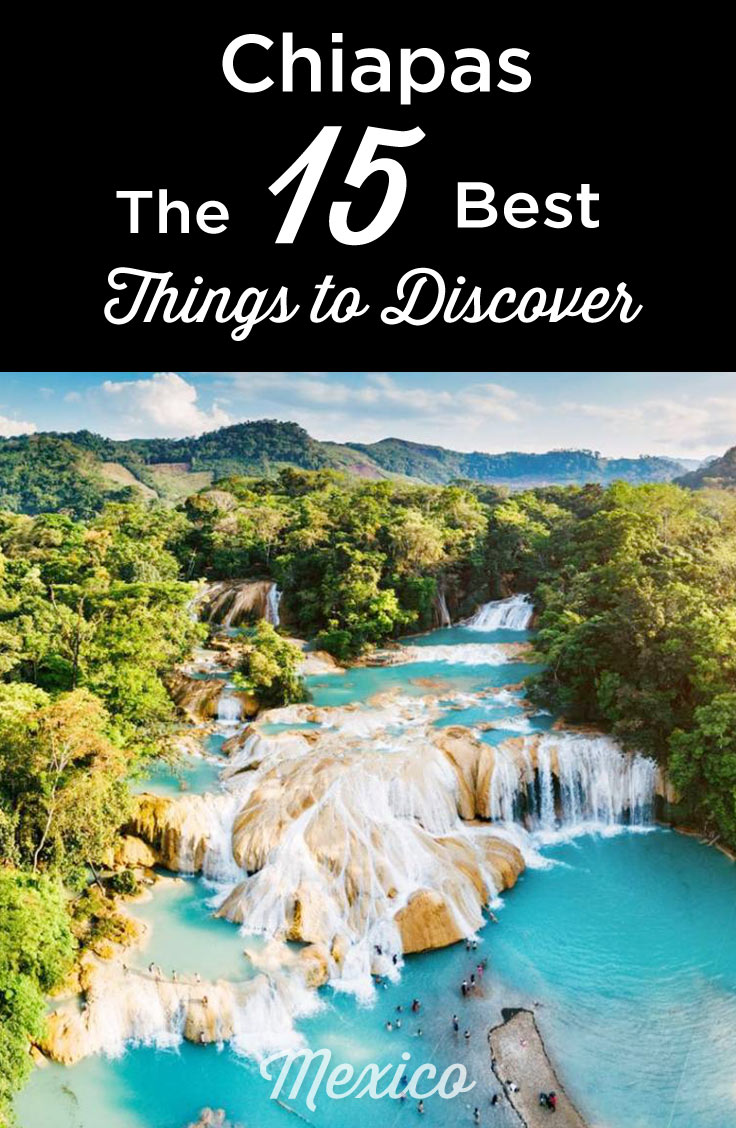
I have created this blog to give you all my best tips to plan your next trip to Mexico, regardless of your budget. I share detailed itineraries, advice about places to visit as well as recommendations for transportation, hotels and restaurants. I hope I will also help you to discover amazing off the beaten path destinations in Mexico!
Related Stories
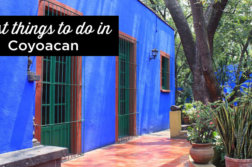
Coyoacán (Mexico City): 20 Best Things to see and visit

10 Days in Mexico: The Ultimate Itinerary + My Best Tips

Visit Cancun: Top 30 Things To Do and Must-See Attractions
Leave a reply cancel reply.
Your Name (required)
Your Email (required)
Your Website (optional)
Save my name, email, and website in this browser for the next time I comment.
- All our Guides about Mexico
- North America
- Top 10 Things See Chiapas...
The Top 10 Things to See and Do in Chiapas, Mexico

Chiapas is typically known as Mexico’s most southern, most impoverished and most mysterious state. Full of jungle ruins, wildlife, strange regional specialities and a mix of cultures, we’ve got the best of the region’s can’t-miss activities for your next trip to Mexico .
Discover secret Mayan ruins, cruise through towering canyons and visit indigenous Tzotzil towns on our five-day Mini Trip in Chiapas .

The archeological ruins of Palenque are the remains of one of the Mayan people’s most important cities. Surrounded by thick, lush vegetation, the ruins are a great place for visitors to hike through and practice bird watching. Particularly famous are the structures of the Templo de las Inscripciones, the Gran Palacio, the Templo XI and the temples of la Cruz Foliada, de Sol and del Conde, as well as a Mayan ball court .
San Cristóbal de las Casas is Chiapas’ most visited and loved mountain town where you will find a variety of attractions for every kind of tourist. Take some time to wander through the town’s main plaza, visit its hilltop churches and see the sprawling municipal market selling local fruits, vegetables and regional cuisine. It’ll be best to plan on staying for a few days to enjoy all the eating, art, culture and music in one of Mexico’s most beautiful towns.

Chinkultic ruins
One of Chiapas’ less frequented archaeological sites, the Chinkultic ruins once made up a Mayan city from the 3rd to 9th centuries. The site is now known for its stelae carvings of the town’s rulers, a ball court and a large cenote (natural well) into which the city’s people used to throw offerings. The ambiance at Chinkultic is extremely serene because of the humid forest surrounding the ruins—it’s not a widely known place and you might just find yourself exploring it alone.
Cascadas de Agua Azul
For a luxurious and relaxing time, head to the Cascadas de Agua Azul located a four-hour drive from San Cristóbal. The waterfalls and naturally-made swimming pools are a product of the series of limestone beds on the Xanil River and the water’s intense blue color is due to the amount of limestone and other minerals in the river, which are most visible during the dry season. In the surrounding area, you’ll find cabins, restaurants and hiking opportunities which you can take on with or without a guide.
Cañón del Sumidero

Make sure to check out the Sumidero Canyon near both Tuxtla and Chiapa de Corzo. The 25-kilometre (16-mile) reservoir is best seen by boats that leave from either Chiapa or Embarcadero Cahuaré, which is only 5 kilometres (3 miles) north of Chiapa along the road to Tuxtla. There is much flora and fauna to appreciate, from monkeys, crocodiles and birds to the breathtaking waterfalls and oddly shaped rock formations.
Zinacantán is a fascinating indigenous region in the Los Altos area of Chiapas. The Tzotzil Mayan people from the area are particularly know for their colorful and intricately embroidered huipils (a kind of tunic) and the longer, colored tunics adorned by tassels that are worn by the men of the communty. An open air market held every Sunday focuses on these fashions and the region’s latest in textiles.
Laguna Miramar
One of Mexico’s most beautiful lagoons, Laguna Miramar is full of activities and nature-filled adventures like kayaking, mountain biking, bird-watching and exploring the nearby caves to marvel at ancient drawings. There are restaurants and cabins for rent in nearby communities—the area surrounding the lake has been left undeveloped for the most part, making it even more attractive for tourists who want to take a break in nature.
Chiapa de Corzo
Chiapa de Corzo is an enchanting colonial town just 12 kilometres (8 miles) from Tuxtla Guitérrez and was the state’s first capital. You’ll enjoy a mellow, small town vibe as you drink a cup of delicious Chiapan coffee on the town’s main plaza or wander through the halls of the Santo Domingo de Guzmán ex-convent, which is now a cultural centre. The town is also a great departure point for exploring the Sumidero Canyon and the Chiapa de Corzo archeological site.
The most urban place on this list, Tuxtla is where you need to go when you start feeling overwhelmed by nature and want a dose of city and nightlife. Make sure to try some of Chiapas’ exotic specialities like snails and bee larvae, or regional specialities like carnes parrilladas (a platter of grilled meats) and ground beef tartare. You also won’t want to miss strolling through the Parque de la Marimba one evening as the entire city comes out to sway to music.
Volcán Tacaná
The Tacaná Volcano is Central America’s second highest volcanic peak (second to Volcán Tajumulco in Guatemala) and sits on Mexico’s southern border with Guatemala. Though the volcano last erupted in 1986, it is still considered to be active, though this doesn’t stop hundreds of tourists from visiting it each year or the local people from living on its green slopes in many little villages. Two villages in particular, Santo Domingo and Unión Juárez, draw visitors with their cool weather and local color. Holy Week in the spring is a time when many hikers make the trek up to the summit, so you’ll either want to avoid those days or book your trip for that week, depending on how you feel about crowds.
Since you are here, we would like to share our vision for the future of travel - and the direction Culture Trip is moving in.
Culture Trip launched in 2011 with a simple yet passionate mission: to inspire people to go beyond their boundaries and experience what makes a place, its people and its culture special and meaningful — and this is still in our DNA today. We are proud that, for more than a decade, millions like you have trusted our award-winning recommendations by people who deeply understand what makes certain places and communities so special.
Increasingly we believe the world needs more meaningful, real-life connections between curious travellers keen to explore the world in a more responsible way. That is why we have intensively curated a collection of premium small-group trips as an invitation to meet and connect with new, like-minded people for once-in-a-lifetime experiences in three categories: Culture Trips, Rail Trips and Private Trips. Our Trips are suitable for both solo travelers, couples and friends who want to explore the world together.
Culture Trips are deeply immersive 5 to 16 days itineraries, that combine authentic local experiences, exciting activities and 4-5* accommodation to look forward to at the end of each day. Our Rail Trips are our most planet-friendly itineraries that invite you to take the scenic route, relax whilst getting under the skin of a destination. Our Private Trips are fully tailored itineraries, curated by our Travel Experts specifically for you, your friends or your family.
We know that many of you worry about the environmental impact of travel and are looking for ways of expanding horizons in ways that do minimal harm - and may even bring benefits. We are committed to go as far as possible in curating our trips with care for the planet. That is why all of our trips are flightless in destination, fully carbon offset - and we have ambitious plans to be net zero in the very near future.

Food & Drink
The best street food cities in the world.

See & Do
The best things to do in chichen itza, mexico.

Guides & Tips
Top tips for travelling in mexico.

Foodie Paradise: A Culinary Expedition Around the World in 2024

The Best Trips and Tours in Mexico

Places to Stay
The best hotels in puerto escondido.

March, April and May 2023 Price Drop

The Best Places to Travel in December

A Solo Traveler's Guide to Yucatán, Mexico

Best Things to Do on Isla Espíritu Santo, Mexico

Coastal Vote: A Beach-Lover's Guide to Sayulita, Mexico

Coastal Vote: A Beach-Lover's Guide to Bacalar, Mexico
Culture trip spring sale, save up to $1,100 on our unique small-group trips limited spots..

- Post ID: 1813652
- Sponsored? No
- View Payload

16 Unmissable Things To Do in Chiapas, Mexico
By: Author Stefania Guglielmi
Posted on Last updated: March 18, 2024
Categories Mexico , North America
Looking to visit Chiapas, Mexico? This state in the South of Mexico is incredible! Check out the best things to do in Chiapas + useful travel tips.
Chiapas is the southernmost state in the country of Mexico and is still quite a hidden gem. If you’re looking to escape the crowds of Yucatan, you’ll find Chiapas way more authentic and less touristy .
But what is Chiapas known for besides being home to a large number of Mayan ruins? This region of Mexico contains the largest population of indigenous people in the country.
It’s one of the only places in the world where you can explore old ruins and colorful colonial towns on the same day.
Chiapas in Mexico also contains several natural wonders such as the Canyon del Sumidero and the Sima de Las Cotorras . So, are you curious? Let’s take a closer look at what to do in Chiapas, and everything this incredible Mexican state has to offer!
Table of Contents
WANDER AROUND SAN CRISTOBAL DE LAS CASAS

San Cristobal de Las Casas is widely considered to be th e cultural capital of Chiapas and is one of the state’s most popular tourist destinations.
The reason why it’s so popular is because it still retains the appearance of an old, colonial Spanish village. It boasts red-tiled roofs and cobblestone streets which reminded me a bit of the streets in Puebla .
It also has a very strong indigenous population , with many of its people using clothes and customs from pre-Columbian times. Because of this, visiting San Cristobal is much like taking a step back in time .
There are also a number of markets to be found in San Cristobal, making it the perfect place to go shopping while you’re in Chiapas.
Things you can’t miss in San Cristobal de Las Casas include:
- Wandering around the historic center , where you’ll find the Zocalo and the Cathedral.
- Visiting the museums, among which stand out Na Bolom and Centro de Textiles del Mundo Maya .
- Browsing through the bustling markets .
- Taste the traditional Mayan drink, Pox .
CLIMB PYRAMIDS AT THE PALENQUE RUINS

If you really want to see some history, you have to visit the Palenque Ruins . This is an ancient Mayan city that still stands in near-perfect condition.
It’s one of the most thoroughly investigated Mayan sites today, thought to contain some of the best examples of Mayan sculpture and architecture in the world.
READ ALSO: A Day Trip to Palenque from San Cristobal de las Casas
However, it’s also one of the ruins of which the least information is known. Most of what has been discovered came from hieroglyphic inscriptions . It’s supposed to have had its heyday in the 7th century , though the reasons for its decline are unclear.
In fact, it was hidden by the dense jungle for many centuries , as nature took over the pyramids when humans left. The excavated area spans a total of 2.5 square kilometers, but that’s believed to be only only 10% of the city!
In Palenque there are many gorgeous temples and palaces that you must see for yourself. The best part of all is that you can climb these pyramids, unlike most other Mayan ruins in Mexico .
If you’ve ever wanted to catch a glimpse of how the ancient Mayans lived, this is your chance. Check out HERE how to get to Palenque, Mexico + other useful info for your visit.
➤ The Chiapas: Agua Azul, Misol-Ha & Palenque Tour lasts a full day. You’ll visit the jaw-dropping Agua Azul waterfalls, and then head to Misol-Ha through the tropical jungle. Finally, step foot in Palenque, exploring the ancient site with a professional guide. ➥ BOOK IT HERE
FEEL SMALL AT THE CANYON DEL SUMIDERO
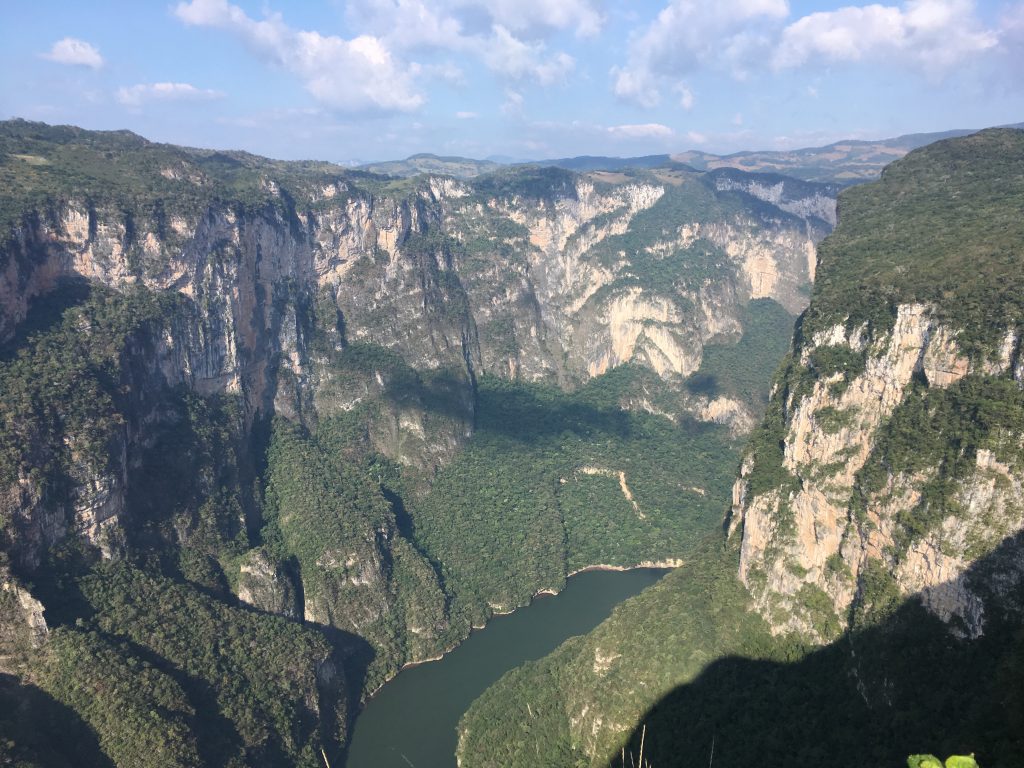
The Sumidero Canyon is a massive canyon located near Chiapa de Corzo. This natural attraction is as old as the Grand Canyon in the United States and a popular tourist spot in the region. It ranks high on the Chiapas things to do list!
While you’re there, you can take a boat tour of the canyon in which you’ll see waterfalls, caves, and animals such as crocodiles and spider monkeys. The canyon walls, which are over a thousand meters high, are a wonder to look at!
The canyon is also surrounded by a national park, popular for extreme sports such as rappelling, spelunking, and mountain biking.
➤ Check out this Cañon Del Sumidero, Miradores from San Cristobal de Las Casas . You’ll travel to the stunning natural park, where you’ll marvel at the walls, and look out for the wildlife. You’ll also enjoy a boat ride along the river, and visit the city of Chiapa de Corzo. ➥ BOOK IT HERE
VISIT MISOL-HA WATERFALL AND AGUA AZUL

Two of Chiapas’s most impressive natural wonders are the Misol Ha waterfall and Agua Azul waterfalls . Agua Azul is a series of cascades while Misol-Ha is a single waterfall with a height of 35 meters. You can’t miss them when you visit Chiapas!
Both sites are only an hour away from each other and can –be visited on the same day either from Palenque or San Cristobal de Las Casas. They both feature clear, blue waters and pools that you can swim in.
READ ALSO: Misol Ha, Agua Azul, and Palenque Ruins: a Day Trip from San Cristobal de Las Casas
➤ This Agua Azul and Palenque Day Trip From San Cristóbal is a full-day excursion. It takes you to explore the waterfalls, and includes a visit to the Palenque ruins with a professional guide, all entrance fees covered. ➥ BOOK IT HERE
HORSEBACK RIDING TO CHAMULA

Chamula is another indigenous town near San Cristobal with its own language and customs. The town is surrounded by beautiful forests and hills. What better way to explore this countryside than by going on a horseback riding tour?
You’ll be greeted with many views of the spectacular Chiapas countryside . The ride itself lasts for about an hour and a half, and it doesn’t require any previous horseback riding experience. Although if you have some, you probably won’t hurt like me the next day!
A couple of agencies that offer the experience are Chultot Viajes Turisticos , and Chambajlum Tour Operator .
After the ride, you’ll be able to experience the unique culture of Chamula , which leads to the next point.
WITNESS THE RELIGIOUS RITUALS IN SAN JUAN CHAMULA

Visiting Chamula is much like seeing a country within a country . This municipality enjoys autonomous status within the country of Mexico.
Visiting it is one of the best ways to see how indigenous people live today. It’s an entirely unique culture with its own language, clothes, and architecture.
The people here also have fascinating religious beliefs, influenced by Catholicism and Paganism . This is best exemplified in Templo de San Juan , a colonial style church in which people kneel to pray on hay, surrounded by hundreds of tea light candles.
At the same time, they offer their Gods a variety of goods such as Coke bottles and chickens . Witnessing one of the rituals here is truly a magical sight to behold and something you can’t afford to miss.
A reminder: you are not allowed to take photos or videos inside the temple. Please respect the rule!
➤ If horse riding isn’t for you, check out the Tour to San Juan Chamula & Zinacantan . You’ll explore the historic center of San Cristobal de las Casas, and then head to the villages of San Juan Chamula and Zinacantan with a guide. ➥ BOOK IT HERE
➤ An alternative is this Bike Tour Chiapas Indigenous Peoples . In a few hours, you’ll discover the country life of the region, visiting local towns. Learn about the culture and traditions of the Tsotsil Mayans, and ride along stunning landscapes. ➥ BOOK IT HERE
RAPPEL DOWN THE SIMA DE LAS COTORRAS
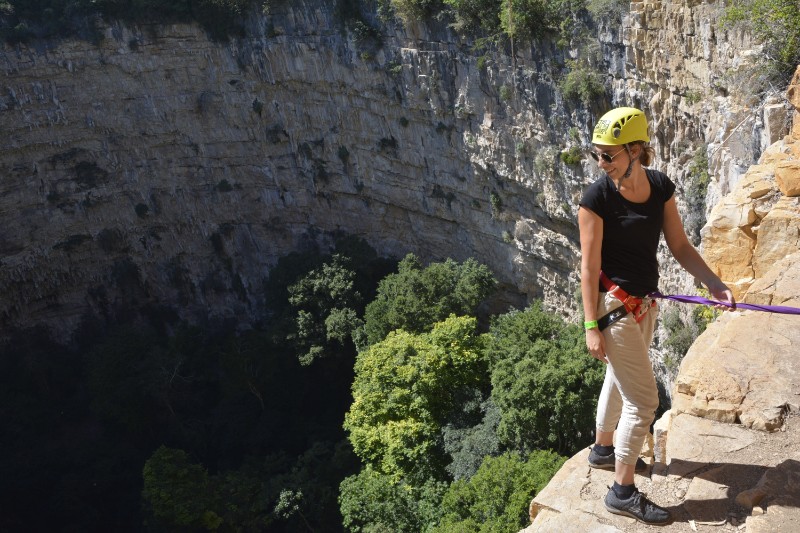
Sima de Las Cotorras is a huge sinkhole located in Chiapas, but unlike the cenotes, this isn’t filled with water but with a forest.
Along with being an incredible natural wonder in its own right, it’s also home to thousands of Mexican parrots . Every morning, you can see these parrots fly out of the sinkhole at once, which is a sight unlike any other.
This makes Sima de Las Cotorras a popular destination for bird watchers around the world.
It’s also a great spot for rappeling if you’d like to try something adventurous… I tried and it was tons of fun but a little scary, especially if you are afraid of heights! On top of all this, the sinkhole also contains a number of wall paintings from the ancient Zoque culture .
➤ Unless you’re willing to rent a car and drive through the countryside (and some sketchy areas), I recommend coming here with a Sima de las Cotorras Tour . Rappel down this incredible spot for an adrenaline rush and some incredible views. ➥ BOOK IT HERE
SWIM AT CENOTE CHUKUMALTIK
If you follow this blog, you’ll know I’m probably the biggest fan of cenotes , so I couldn’t leave this one out of this guide. Chiapas isn’t famous for cenotes like Yucatan, but you can find a beautiful one here.
Cenote Chukumaltik is a giant sinkhole filled with crystal-clear waters. It’s a perfect place for swimming, and it’s also a popular spot for scuba divers.
There are many interesting sights to be seen under the water such as petrified trees , stalagmites of seaweed , and an altar of the Virgin Dolorosa . It’s a great spot for beginners if you’ve never tried scuba diving before.
Cenote Chukumaltik is still somewhat unknown compared to other attractions, so you’ll likely have the place to yourself.
YOU MIGHT ALSO LIKE: 6 Unmissable Cenotes in Tulum 11 Cenotes You Need to Visit Near Valladolid 11 Incredible Cenotes in Playa del Carmen
SOAK UP THE VIEWS AT EL CHIFLON WATERFALL

If you love nature, then this is something you don’t want to miss. El Chiflon is a chain of five waterfalls that can be found in the municipality of Tzimol. The tallest of these waterfalls is 120 meters high.
Also, if you hike to the top of the aptly named Rainbow Waterfalls , you’ll be greeted with a beautiful view of a rainbow below.
Many people who’ve visited Cascada El Chiflon describe it as one of the most beautiful natural wonders they’ve ever seen.
Along with simply enjoying the sight itself, there are several other activities you can participate in. These include hiking , swimming , and even zip-lining .
➤ The Chiflon Waterfalls & Montebello Tour from San Cristobal will bring you to discover the remote Chiflon Waterfall (where you’ll be able to swim), then you’ll cross one of the lakes at Montebello Lakes National Park on a raft. ➥ BOOK IT HERE
TAKE A TOUR TO THE COFFEE PLANTATIONS

This is something that coffee lovers like me are sure to appreciate ! Chiapas is famous for its fragrant coffee, boasting lush coffee plantations and around 400 million (!!) coffee plants.
The region grows what’s considered the best quality coffee in the country , besides producing 30% of Mexico’s entire production.
The volcanic soils and climatic conditions play a big part in the exquisite taste and body of the drink. They even earned it the Denomination of Origin in 2003 .
You’ll find that there are many fincas you can visit for a tour around the plantation, some delicious tastings, and coffee shopping.
It’s a good opportunity to learn about the making of coffee, the daily lives of local farmers, and how coffee production impacts the local economy .
Some of the fincas worth checking out include Finca Hamburgo , Finca Irlanda, and Finca Argovia .
TAKE A DAY TRIP TO THE LAGOS DE MONTEBELLO

Lagos de Montebello (Montebello Lakes National Park) is near the Guatemalan border, and consists of 59 beautiful lakes . The colors of these lakes are quite striking due to their unique mineral contents.
The waters you’ll find here are various shades of green and turquoise ; some of them are even purple or reddish black. Many of the Lagunas Montebello are suitable for swimming and kayaking .
The park also features ancient Mayan ruins from the pre-Colombian era. Stand at the top of its main pyramid to get an incredible view of the lakes below.
➤ The Chiflon Waterfalls & Montebello Tour from San Cristobal will let you soak up the beauty of Chiflon Waterfall (where you’ll be able to swim). Then, you’ll enjoy crossing one of the lakes at Montebello Lakes National Park on a raft. ➥ BOOK IT HERE
HIKE UP VOLCÁN TACANÁ
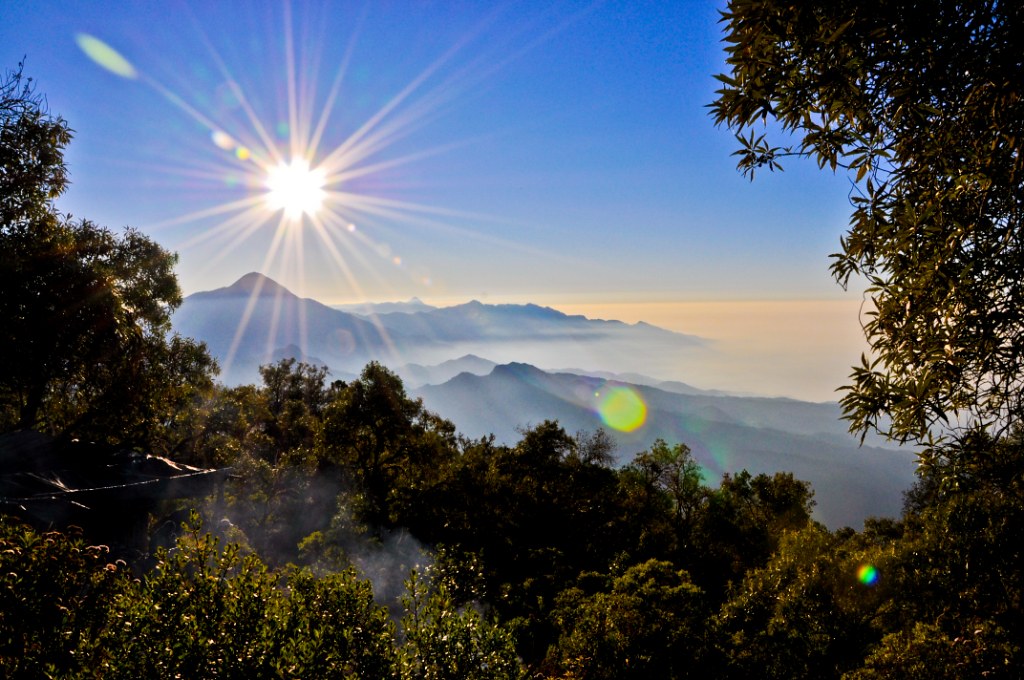
Volcán Tacaná is an active volcano that can be found on the border of Mexico and Guatemala, and it’s one of the highest peaks in Central America.
There are two different paths to the summit, one starting in Mexico and one in Guatemala. The Mexican path is not only easier to get to, but it’s also considered to be one of the best hiking experiences in Central America.
This hike will take you through several different landscapes, including small villages, jungles, and volcanic forests. If you enjoy hiking, then this is something you must try for yourself.
VOLUNTEER IN CHIAPAS
Have you ever wanted to volunteer somewhere in Mexico but had no idea where to start from? It’s not always easy to look for good volunteer opportunities in Mexico on your own. Besides, agencies can charge even thousands of dollars to find you a volunteer placement.
On Worldpackers, however, there are plenty of opportunities when it comes to volunteering in Chiapas. You can help a local NGO, teach music to children, or work at a hostel in San Cristobal de Las Casas.
READ ALSO: A Complete List of Volunteering Opportunities in Mexico
You simply have to pay a yearly membership that gives you access to thousands of volunteer opportunities all over the world. The best part is that it’s very affordable. The yearly membership usually costs $49, but use this link for $10 OFF .
LEARN ABOUT TEXTILE PRODUCTION IN ZINACANTAN
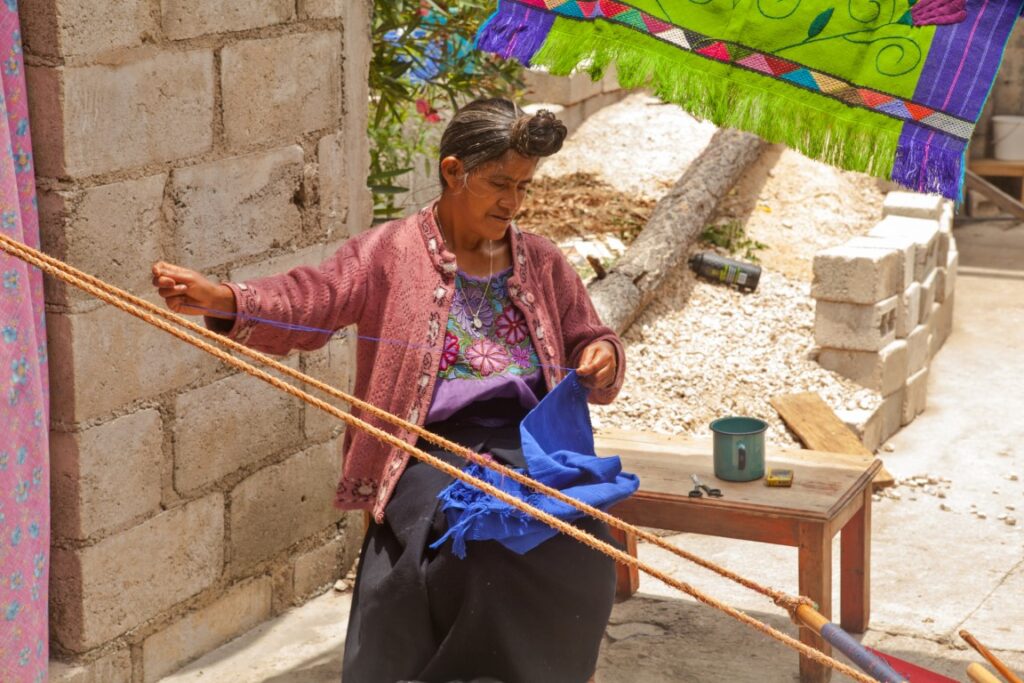
Zinacantan is a small village in the state of Chiapas, known for its textile production . There’s a great number of textile workshops in town, most of which are family-run, where gorgeous hand-woven garments are crafted.
You’ll find exquisitely embroided blouses and dresses, showcasing designs inspired by their culture , and traditional clothing.
But even more fun than window shopping (or even actual shopping!) is learning about it!
➤ The Customs of Indigenous Villages of Chiapas is a 6-hour experience. A local will introduce you to the traditions and legends of their people, and the history of the town. Visit main landmarks, and learn about textile production with a family of artisans. ➥ BOOK IT HERE
VISIT CHIAPA DE CORZO
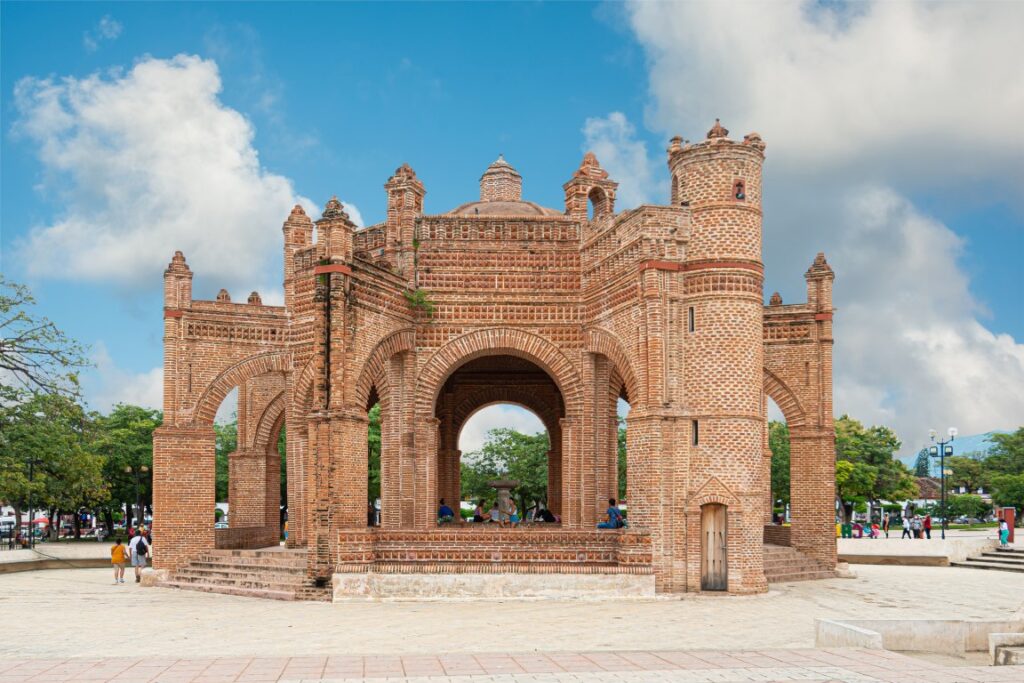
Chiapa de Corzo is a small town in Chiapas, known for its namesake archaeological site . The ancient city dates back to pre-Columbian Mesoamerica, and saw its heyday around 600 BC.
The town of Chiapa de Corzo, however, has beautiful attractions of its own. One of the landmarks you can’t miss is the main square, where you’ll find the stunning Fuente Mudejar , built in Moorish style.
Wide open streets surround the plaza , with colorful shops selling everything from traditional garments to the town’s local drink, Pozol.
The Templo de San Jacinto , the picturesque alleys , and the local history museum housed in the former Santo Domingo convent are worth a visit.
➤ A good way to visit is by joining this Chiapa de Corzo: Tradition, Gastronomy, and Canyon del Sumidero . It’s an 8-hour excursion that takes you on a comprehensive tour around town. Learn about the history of the Parachicos, visit traditional houses, and savor local dishes. ➥ BOOK IT HERE
EXPLORE THE RUINS OF YAXCHILAN AND BONAMPAK
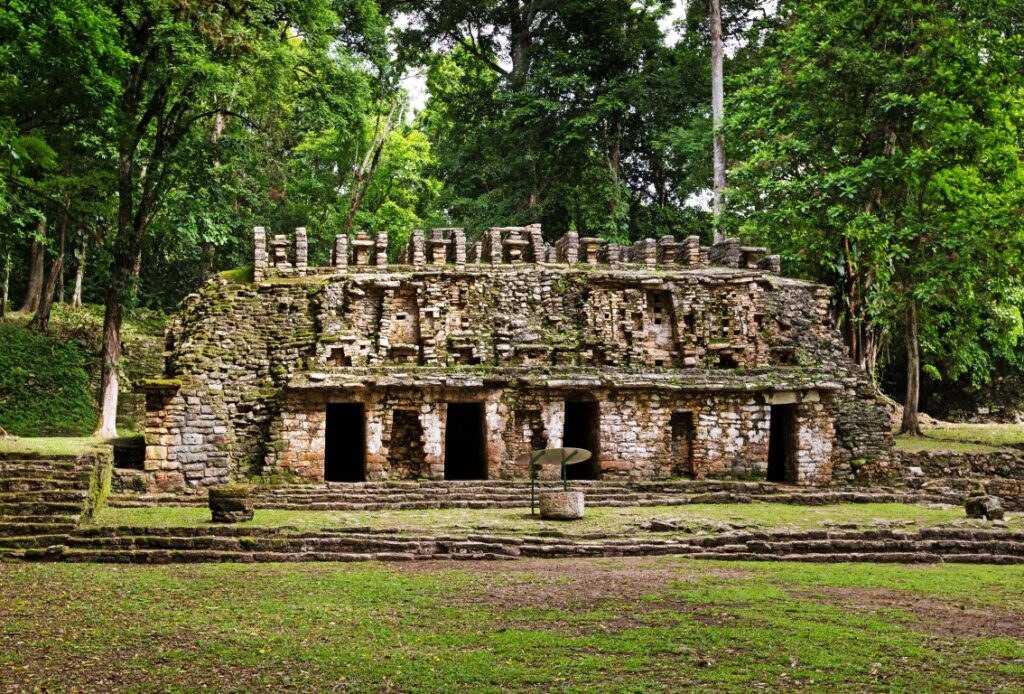
The Yaxchilan and Bonampak ruins are two of the most hidden Mayan sites, nestled deep in the Chiapas jungle . As such, the archaeological sites are relatively unknown , retaining their authenticity. Besides, getting there is quite an adventure!
A boat ride along the Usumacinta River will take you to Yaxchilan, from where you can reach Bonampack by heading further into the jungle.
The sites date back to approximately 300 AD, and retain fascinating paintings and carvings on the walls. While over 100 structures dot Yaxchilan, it’s believed that 80% of the original city hasn’t been unearthed!
The ruins are fascinating to explore, and the lack of tourists will make you feel like you’re in your very own Indiana Jones movie. You’ll be wandering around ancient structures and the thick jungle like an true adventurer.
WHERE TO STAY IN SAN CRISTOBAL DE LAS CASAS
When staying in Chiapas Mexico, it’s recommended that you use San Cristobal as a base . Not only is it an amazing cultural experience in its own right, but it’s also relatively close to the other sites on this list. Book your accommodation by using the map below ⬇
Of all the hotels available in San Cristobal, none are better than Villas Casa Morada . This hotel comes with a number of great amenities including a restaurant, a cafe, a bar, cable TV, and free WiFi.
The rooms also come equipped with a fireplace, and a kitchenette with microwave and refrigerator. Some of them are on two levels.
My favorite part was the fireplace that they kindly helped us light . After over a month on the road, there was nothing better than ordering pizza and beer and having a night of Netflix and chill in front of the fireplace!
San Cristobal de Las Casas can get very chilly at night, so it’s certainly appreciated.

The hotel is also located near many of San Cristobal’s attractions. The Na Bolom Museum is only a five minutes’ walk away, and the Santo Domingo Temple is only fifteen minutes away. All these things make it a great mid-budget option for your stay in Chiapas, Mexico.
Check out RATES & AVAILABILITY for Villas Casa Morada
OTHER MEXICO ARTICLES TO CHECK OUT
8 Top Things To Do in Oaxaca
The One and Only 3 Days in Mexico City Itinerary
Isla Holbox, Mexico: The Complete Guide To This Island Paradise
Stefania Guglielmi is the founder of Every Steph. Originally from Bologna, Italy, she's been traveling full-time since 2016 and has visited over 50 countries across 6 continents. She believes sustainable travel and luxury travel can go hand in hand and has been advocating for responsible tourism since 2014. Stefania's advice and travel experiences have been featured in important publications such as Business Insider, Refinery29, and Yahoo Money.
Sign me up for the monthly newsletter!
Thursday 4th of November 2021
Hi Julien! When I wrote this article they weren't selling the activity on the Internet, just in a local travel agency, but this one is the exact tour I went on: https://www.civitatis.com/en/san-cristobal-de-las-casas/indigenas-communities-horse-ride/?aid=8495
Wednesday 3rd of November 2021
Hi Steph, loving all this info, you didn't provide a link to book to horseback ride to Chamula, any chance you remember what tour/service you used for that? thanks!
Aundrea Grieco
Saturday 4th of September 2021
Thank you for this article Steph! Really appreciate it! :) Learned a lot.
Monday 6th of September 2021
So glad it was useful!! :)
Man Everywhere
Friday 10th of January 2020
You need visit Chiapas on this hollydays, during january 9 january 23 all the towns celebrate the parachico fest! YOU SHOULD LOVE IT! it's a super crazy party where you can feel all the love and culture from Chiapas.
MÉXICO: 50 POSTS QUE AYUDAN PARA VIAJAR [1] | Viatges pel Món
Wednesday 8th of May 2019
[…] 12 Unmissable Things To Do in Chiapas, Mexico | Every Steph […]

MAGICAL TOWNS IN CHIAPAS
México » States » Chiapas » Magical Towns
Magical Towns of CHIAPAS
Chiapas has 4 magical towns: San Cristóbal de Las Casas, Chiapa de Corzo, Comitán de Dominguez and Palenque, this recognition is given to the localities that have a special charm and unique symbolic attributes that allow to highlight the character and identity of the town, which they are manifested through their cultural heritage. Some of these characteristics can be: history, architecture, gastronomy and crafts, making your stay a magical moment.
The origins of this Magical Town in the state of Chiapas go back to the integration of several Chol families dispersed in the Lacandon Jungle, achieved by the Dominicans. Before that, the town was known by the name of Otulún, which in the Chol language means “fenced or fortified place”, a quality that can be corroborated by contemplating the dense vegetation that surrounds it.
Palenque is believed to have been founded around 100 BC. of C. and that its development lasted almost a thousand years, after which it was abandoned forever. The buildings that can be seen today in the magnificent jungle setting are from the Classic Period, from 400 to 700 AD. by C.
The findings found at this site confirm that the Maya had a complex social and religious organization, as well as admirable architectural, astronomical, and mathematical knowledge. The hieroglyphs on its walls speak of the military history of the city, the exploits of its rulers, its calendar and its rituals, thus providing invaluable information on the Mayan culture.
SAN CRISTÓBAL DE LAS CASAS
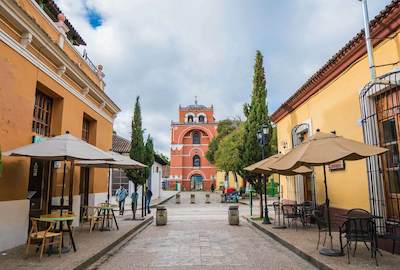
Magic is the fundamental ingredient of this mountainous Mexican town located in the state of Chiapas, whose rich culture and its beautiful streets please the most demanding visitors. With a relaxed atmosphere and surrounded by natural attractions, it stands out for its colonial essence and also concentrates a large number of attractions around the Zócalo.
However, it retains a marked indigenous character that can be seen in the traditional iridescent dresses and the low houses with Roman tiles. In the surrounding forests, in addition, Subcomandante Marcos led the Zapatista rebels.
Travel to San Juan Chamula to appreciate the syncretism of the indigenous people of the Tzotzil people, who combine Christianity with animist beliefs, or visit beautiful places, such as the viewpoints of the churches of Guadalupe and San Cristóbal, the Huitepec nature reserve and the park ecotourism El Arcotete, are part of its tourist claims.
CHIAPA DE CORZO
Chiapa de Corzo is one of the most beautiful colonial cities of Chiapas, located just 15 minutes from Tuxtla Gutierrez, along the Grijalva River. It was the first city founded by the Spanish Conquerors in Chiapas in the sixteenth century. This is a place full of history, tradition and culture.
The city is also distinguished by its variety of crafts such as lacquer technique whose tradition dates back to Pre-Hispanic times and it is also known as maque, woodcarving, particularly Parachico masks, and embroidery. This beautiful work can be seen in the colorful costumes of Chiapas.
You can stroll around the central square and enjoy this colorful handcrafts and enjoy exquisite local cuisine, including: cochinito horneado (cooked hog), the typical candy, such as the suspiros (breaths), the chimbos and the nuegados, and traditional the delicious beverage called “Pozol”, a drink made from fermented corn dough. You can visit the Archaeological Zone.
Parachicos Tradition
The Fiesta Grande de Enero (Great January Feast) takes place from 4 to 23 January every year in Chiapa de Corzo, to honor local patron saints Our Lord of Esquipulas, Anthony the Great and Saint Sebastian. The Fiesta Grande de Enero is a celebration, which joins a number of events that includes music, dance, crafts, food, religious ceremonies and other entertainment. But the main attraction is the Parachicos dancers.
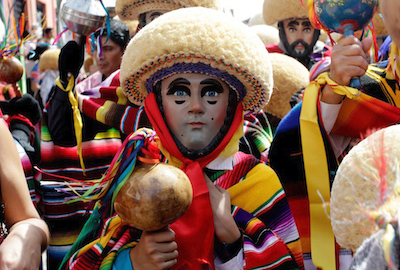
The Parachicos dress in a mask carved of wood and decorated with lacquer to mimic a Spanish face; a helmet or wig made of ixtle to mimic blonde hair; and a Saltillo style sarape. The dancers carry a type of maraca made of metal called chinchin to make noise along with the taping of their boot heels.
The dancers go along the streets dancing with a drum and a “carrizo” also called reed whistle. These processions visit the various churches on their path, which are decorated with branches, on which are hung breads, sweets, fruits and plastic decorations.
Their dances begin in the morning and end at night. There are so many parachicos dancers (more than 50 percent of the population go out for dancing), which require guidance, a “patron”. The “patron” of the dances and processions has a mask with a severe expression, a guitar and a whip, and the musicians play flutes, drums and whistles. During the dance, the “patron” chant prayers and the Parachicos respond with cheers.
The dance is transmitted and taught during the festivity, children who participate in the festival, mimic the movements of adults, also the art of making masks is transmitted from generation to generation. The festival has been included in UNESCO’s Intangible Cultural Heritage Lists on 2010, listed as Parachicos in the traditional January feast of Chiapa de Corzo.
Tourist Attractions in CHIAPA DE CORZO
La pila mudejar fountain.
This was constructed in 1562 in Moorish style, made of brick in the form of a diamond. It has eight arches and a cylindrical tower.
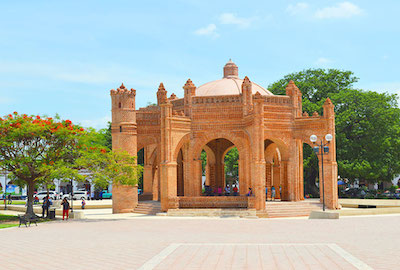
The Santo Domingo Church and Former Monastery
Is the largest structure in the town, is one of the best preserved from the 16th century in Chiapas. It is based on the Moorish churches of the Seville region in Spain, but it also has Gothic, Renaissance and Neoclassical influences. Its main bell tower has the largest bells in the country. The former Dominican monastery exhibits various art forms.
The Calvario Church
It is from the 17th century. It was remodeled in Gothic Revival architecture at the beginning of the 19th century. Another treasure of this church is a wooden relief illustrating The Descent from the Cross.
San Sebastian
It is a church in ruins located on the San Gregorio hill. It was constructed in the 17th century. Only its apse and facade remain with elements of Moorish, Renaissance and Baroque style.
Museo de la Marimba (Marimba Museum)
The museum belongs to the Nandayapa Vargas family, who follow the family tradition as manufacturers of this instrument. The friendly family will take you around the workshop to show you how this musical instrument is made.
Chorreadero Waterfall
Beautiful waterfall of 25 meters high, located just 9 miles from Chiapa de Corzo. The best season for visit the waterfall goes from November through March.
It is a geological fault formed about 30 millions of years ago. The vertical walls rising up to 1000m (3,000 ft.) are lush with plants, abundant waterfalls and caves, is one of Mexico’s most spectacular landscape.
Chiapa de Corzo Archeological Site
It is one of the most important archaeological sites in the central region of Chiapas. At its peak, it counted about 200 structures, but was abandoned around 500 AD. Today the site has near 100 mounds. Recent excavations link this site with Olmec centers such as La Venta and the highlands of Guatemala. Opening hours: Tuesday to Sunday: 9:00 to 16:00 .
COMITÁN DE DOMÍNGUEZ
An endearing land, pride of all Chiapas, which constitutes the expression of a promising Chiapas, of respect, work and peace. Flavors, climates, flowery patios, luminous horizons next to Mayan temples and magnificent colonial churches, are the elements that make Comitán and its region, the old plains of colonial geography and an area that accounts in a short extension, of the natural diversity and cultural complexity of Chiapas.
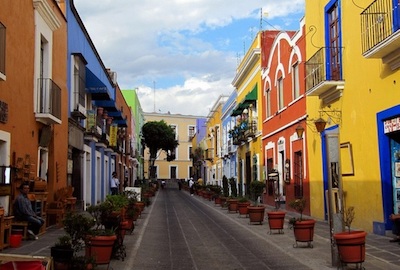
The pre-Hispanic name of Comitan was Balún Canán, which means: “Place of the nine stars”. The old town was founded in a swamp by a large group of indigenous Tzeltals. In 1486 it was subdued by the Aztecs who called it Comitán, from the Nahuatl komitl-tlán and which means: “Place of fevers”.
In 1556, the missionary Diego Tinoco moved the town of Comitán together with a large group of Tojolabal Indians, to the current location; in 1625 he was renamed “Santo Domingo de Comitán” and on September 3, 1915, the surname Domínguez was added, in memory of the Mexican doctor and politician, Belisario Domínguez Palencia.
Considered as the cradle of independence, it is the heart of the tourist region of Los Llanos; renowned for its traditional architecture of houses with roofs and neoclassical touches. The city of Rosario Castellanos, grew thanks to the haciendas and became one of the main cities of the colonial province.
To walk through its streets is to return to a colorful past, as it is a city full of testimonies of centuries of history; Who visits it will be able to approach the great sites of comiteca personality. Also to be mentioned, as a mandatory point of visit, is the famous neighborhood of the 7 corners, where many samples of the traditional Comiteca culture are preserved and whose setting is framed by the beautiful Temple of San Caralampio.
Tourist Attractions in Comitán de Domínguez
Santo domingo church.
It was built between the 16th and 17th Centuries, with a Moorish style. The stained glass windows give accents of color to the sober interior. The celebration of Santo Domingo during August takes place in this temple. Its former monastic buildings next door are now the Centro Cultural Rosario Castellanos, which has a pretty wood-pillared patio, home of the Archaeological Museum of Comitan.
The San Caralampio Church
It was built in 1852 in a Neoclassic style, although the decoration has a native influence. One of the traditions of the place is to celebrate San Caralampio from 11 to 20 of February.
San José Church
Beautiful Gothic church built in the early 20th century combining the classic architecture with some typical elements of the culture of Chiapas.
San Sebastian Temple
The church construction dates back to the early 17th century. It has a Baroque style.
Dr. Belisario Dominguez Museum
A typical nineteenth century mansion that exhibits the life and work of this illustrious martyr. Opening hours: Monday to Friday: 10:00 to 19:00 hrs.; Saturday and Sunday: 9:00 to 13:00 hrs.
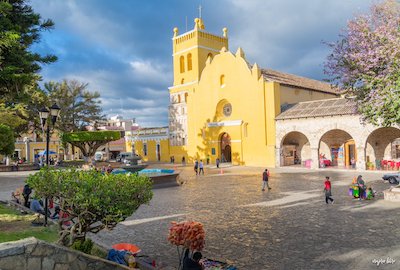
Hermila Castellanos Dominguez Art Museum
The museum exhibits works of artists such as Rufino Tamayo, Francisco Toledo and Gunther Gerzso. It has rooms for temporary exhibitions, for paint and plastic arts workshops, and for concerts and conferences. Opening hours: Tuesday to Saturday: 10:00 to 17:30 hrs.; Sunday: 10:00 to 14:00 hrs.
Museo Arqueológico de Comitán (Archaeological Museum)
Displays various objects found in archaeological sites in the region. Opening hours: Daily: 9:00 to 17:00 hrs.
Rosario Castellanos Cultural Centre
It is located in a former Dominican convent built in 1552. Today is a House of Culture, offering a variety of courses related to the visual arts, theatre, film and music.
Benito Juarez Park
Located in the heart of Comitan, is a beautiful place with trees, statues and a gazebo. Every Thursdays and Sundays you can enjoy live marimba music in the park.
Passage Morales
A pedestrian alley with candy shops, boutiques, cafes and much more.
Junchavin City Theatre
Built in the early 20th century, this theater host the most important events of the city.
The former convent of Copanahuastla
Considered one of the most important colonial monuments in Chiapas.
Parador Santa Maria Museum
Located 30 minutes from Comitan, dates from the XIX century and its interiors are decorated throughout with period furniture and works of art covering many centuries, creating an evocative and exclusive atmosphere.
Map of the Magic Towns of CHIAPAS
More Tourist Attractions in CHIAPAS
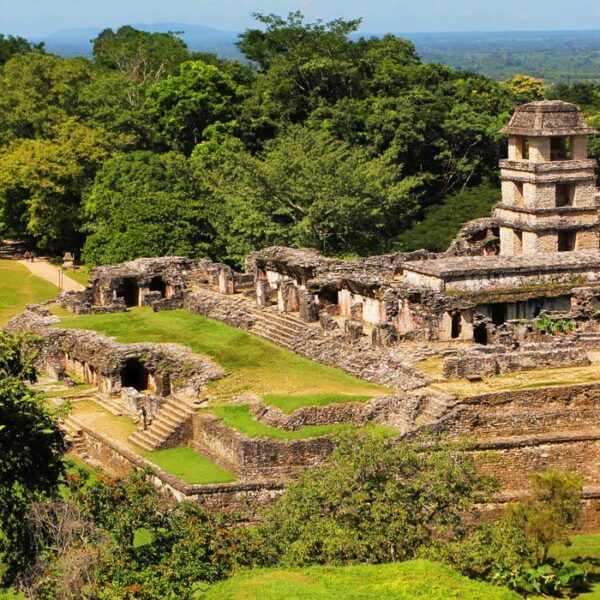
Palenque is a Chiapas city of Mayan origin, head of the municipality of the same name located in the north of the state. The indigenous population is formed mainly by the Chol, Tzeltal and Lacandon ethnic groups. The municipality borders Guatemala to the southeast, has three border sectors with the state of Tabasco and is also a neighbor of the Chiapas municipal entities of Catazajá, La Libertad, Ocosingo, Chilón and Salto de Agua. The closest cities to Palenque are Villahermosa, Tabasco, located 145 km to the west and San Cristóbal de las Casas, which is 219 km to the south.… Read More
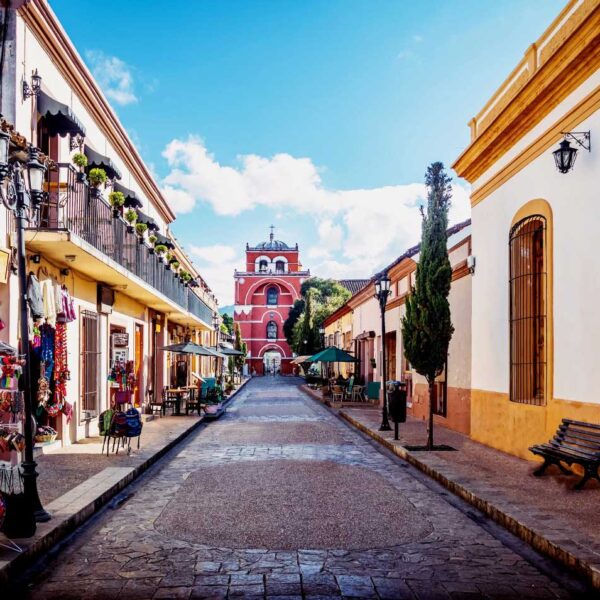
San Cristobal de Las Casas
San Cristóbal de las Casas is one of Mexico’s most beautiful colonial towns. Through its peaceful cobblestone streets, flanked by houses with slanted red tiled roofs and patios full of flowers, one discovers religious monuments with influence from Mexican and Central American colonial art, giving it a peculiar frontier town character. Indigenous people come to its busy markets from the surrounding hamlets to offer textiles, ceramics, fruits and vegetables.… Read More

Ecotourism and Adventure in Chiapas
Ecotourism in Chiapas is currently one of the most popular tourist trends in the state, with activities that try not to alter nature, thus preserving the ecosystem, flora and fauna, while encouraging sustainable development processes in indigenous communities that remain in the region. Responsibly enjoy a vacation in Chiapas and discover the hidden secrets of the state such as impressive natural sanctuaries and indigenous communities in the heart of the jungle where ancestral traditions still try to survive.… Read More
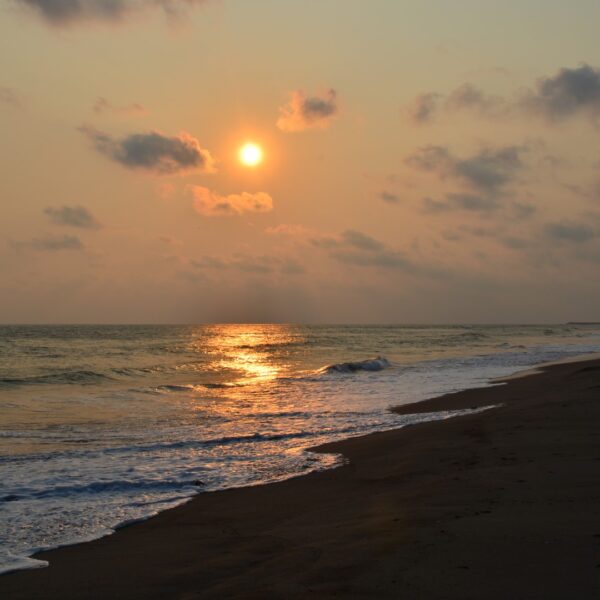
Beaches in Chiapas
The Chiapas coast offers beautiful beaches where you can do a wide variety of water sports. There are beaches of great beauty that are characterized by their tranquility and that are ideal for you to relax and enjoy nature. However, it must be taken into account that many of them face the open sea, so the waves tend to be high and you must be careful to enjoy these waters. Part of the coastal area is immersed in the La Encrucijada Biosphere Reserve, so if you are a lover of venturing into nature, this is one of the places with more options, where you can find some of the largest red mangroves in all of America that are located in a series of estuaries that make the landscape unique.… Read More
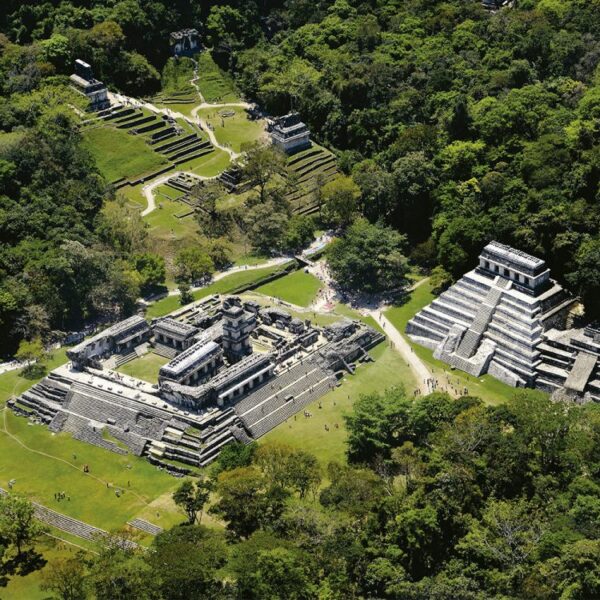
Archaeological Sites in Chiapas
In Chiapas the forests and the jungle are a beauty, spectacular settings for archaeological sites. The incredible nature that accompanies many of these areas is a plus. Visits to archaeological sites are part of nature tourism, due to the opportunity to walk around diverse natural environments. In several of these places you can see animals, or hear them. They are places that also give us the opportunity to connect with nature, and that hand in hand with culture is an excellent combination.… Read More

Gastronomy of Chiapas
Chiapas food has certain features of authenticity, it is a gastronomic mosaic made up of its natural biodiversity, where each place prints its own characteristics, defines tastes and creates habits; varies in each region; Likewise, it is nourished by the diversity of Mayan ethnic groups and the Zoque of Olmec origin that when combined with Spanish cuisine by the influx of Dominican monks; It results in an immense variety of dishes of miscegenation typical of the State.… Read More
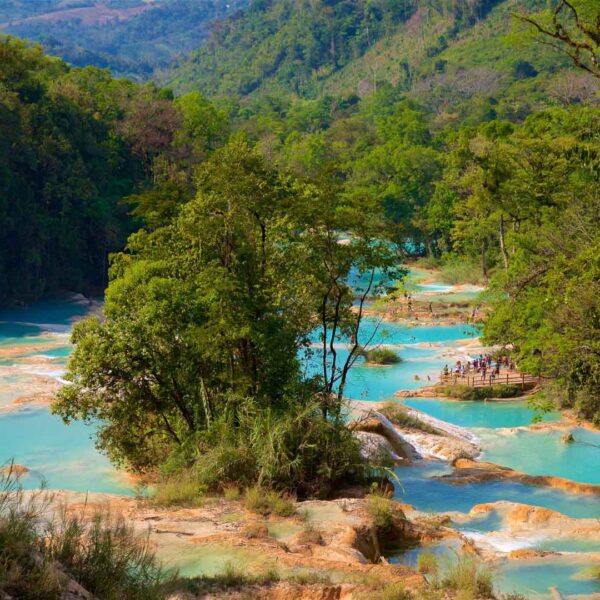
Tapachula and Tonala
Tapachula and Tonalá will amaze you with their beautiful buildings, their people and their traditions, colonial monuments, and breathtaking landscapes. Tapachula is also known as “La Perla del Soconusco” (The Pearl of Soconusco), it is a modern city with beautiful buildings built in a classic style. Located just next to the border with Guatemala, almost at the foot of the volcano Tacaná. Tonalá is a city in the southwest of Chiapas and head of the IX Istmo-Costa region; considered the third city in economic importance of the state; It is located in the transition of the Pacific Coastal Plain and the Sierra Madre de Chiapas.… Read More
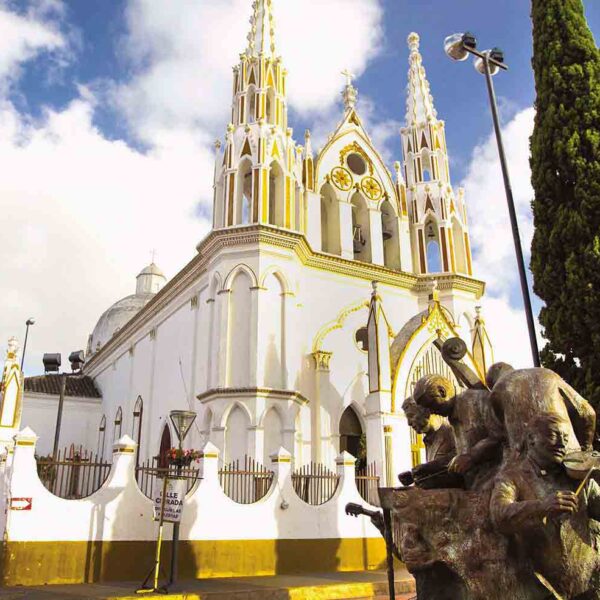
Tuxtla Gutierrez
It is the capital city of the State of Chiapas. Its climate is hot and semi-humid. Tuxtla Gutiérrez is a modern city where culture and traditions of Chiapas blend together. The streets in Tuxtla contain a combination of past and present. It is a beautiful city surrounded by lush vegetation. In downtown there is the Central Park and the beautiful Marimba Park. During the evenings you can stroll around this park and enjoy the marimba music played at the gazebo. There are many natural wonders nearby Tuxtla and the city offers very good touristic infrastructure, but most of all, the city offers the warm and kindness of the people.… Read More
Guided Tours in CHIAPAS
Flights & hotels in chiapas, more tourist attractions in mexico.

- Archaeological Sites
The Archaeological Zones are the cultural past of every Mexican. You will be amazed at the ambient, nature and the environment that surrounds them. Climbing to the top or being around it will take us back in time to admire every detail. México is a country of culture and traditions, many of which we have inherited from the pre-Hispanic inhabitants of this vast territory, although it is true that there were more settlements in the central and southern part of the country, it is also possible to find some archaeological remains in the north. … Read More

The Gastronomy of Mexico has a great diversity of typical dishes, which is why it was recognized by UNESCO as Intangible Heritage of Humanity. The basic and representative ingredients of Mexican dishes are: corn, coriander, chili, beans, piloncillo, nopal and tomato. Mexican cuisine is also characterized by its sauces, which serve as an accompaniment to traditional dishes, prepared based on spices.… Read More

- Capital Cities
Folklore, gastronomy, literary culture, art and exhibitions, is what you will find in the capitals of the states of Mexico. To the north, colonial Mexico, Puebla, Guadalajara, Guanajuato, the Sonoran desert and the California peninsula. To the east Veracruz and the gulf. To the west Acapulco, Oaxaca and Tuxtla Gutiérrez. And to the south the Riviera Maya and the pyramids of Chichén-Itzá, Tulúm and Cobá in Yucatán, Palenque in Chiapas, the cenotes, and the Central American jungles.… Read More

States Of Mexico
Mexico has an incredible diversity of landscapes, where the beauty of its beaches, internationally recognized, stands out. In its vast territory of coasts, there are beaches of unparalleled beauty, and colorful landscapes. A large network of first-class hotels and tourist services is available to visitors to these beaches. Mexico is also mystical places, dotted with archaeological testimonies inherited from its original inhabitants. Monuments made by the Mayas, Aztecs and Toltecs are located in magical landscapes, like lighthouses in an ocean of natural beauty. They offer visitors buildings that tell their history, and museums that collect their cultural heritage. And that keep alive ancestral traditions, in ceremonies and festivals, where you can enjoy cultural activities and entertainment.… Read More

On the Beaches of Mexico you can immerse yourself in the intense blue ocean of the Pacific bays, sunbathe on the shore of the warm and transparent waves of the Caribbean Sea in Quintana Roo or even rest on the beautiful coasts of the Gulf of Mexico. Mexican beaches hide wonderful secrets for the traveler. By visiting them, in addition to enjoying the excellent climate and water activities, you can discover splendid archaeological sites and interesting colonial cities without traveling long distances.… Read More
- Ecotourism and Adventure
Mexico is one of the best countries for Ecotourism as it has a great variety of flora and fauna, as well as a large number of refuges for extraordinary species. You can enjoy recreational activities of appreciation and knowledge of nature through contact with it, such as: stargazing, observation of natural attractions, wildlife and bird watching. Throughout México there are more than 176 protected natural areas, 5 of them considered by UNESCO as Natural Heritage of Humanity. Just for this and much more, we believe that Mexico is a Paradise for Ecotourism.… Read More

- Traditions in Mexico
It is practically impossible to make a meticulous, and above all, accurate selection of the places to visit in Mexico. Each place that our country houses is unique and beautiful in its own way. Mexico, with its nearly 2 million km², has a large number of scenarios to offer, as well as endless activities to do. Do not lose your way and enter the places to visit in Mexico. In Mexico, apart from the beaches and its famous archaeological sites, there are many other really interesting sites and activities that you should know. In the surroundings of the main cities you will find places full of culture and tradition, where you can spend relaxing, interesting and fun vacations. On your trip through Mexico you cannot stop obtaining souvenirs, the crafts that are made here are of the highest quality and recognized worldwide. A shopping tour cannot be missed.… Read More

- Magical Towns
A Magical Town is a place with symbols and legends, towns with history that in many cases have been the scene of transcendent events for our country, they are places that show the national identity in each of its corners, with a magic that emanates from its attractions ; visiting them is an opportunity to discover the charm of Mexico. The Magical Towns Program contributes to revalue a set of populations in the country that have always been in the collective imagination of the nation and that represent fresh and varied alternatives for national and foreign visitors. A town that through time and in the face of modernity, has conserved, valued and defended its historical, cultural and natural heritage; and manifests it in various expressions through its tangible and intangible heritage. A Magical Town is a town that has unique, symbolic attributes, authentic stories, transcendent events, everyday life, which means a great opportunity for tourist use, taking into account the motivations and needs of travelers.… Read More
Leave a Reply Cancel reply
Your email address will not be published. Required fields are marked *
Save my name, email, and website in this browser for the next time I comment.
- States of Mexico
- Animal Rescue in Mexico
National Geographic content straight to your inbox—sign up for our popular newsletters here

7 of the best Maya ruins to visit in Mexico
Remnants of ancient civilisations still stand across Central America — and well-preserved temples and jungle-cloaked pyramids are open to visitors across southern Mexico.
Before the Spanish colonised Central America in the 16th century, the ancient Maya were one of the most sophisticated civilisations in the Western Hemisphere. They developed a complex calendar system through their knowledge of astrology and mathematics, used intricate hieroglyphics to record their history and built large, lavishly decorated cities, complete with pyramids, temples, and plazas.
At its height, the ancient Maya civilisation comprised 40 cities across Central America, spanning southern Mexico, Guatemala, Honduras, Belize, El Salvador and Nicaragua. In the southern Mexican states of Yucatán, Quintana Roo and Chiapas, many of these settlements — the largest housed up to 50,000 people — still stand today, offering visitors a unique insight into the social, cultural and religious lives of the ancient Maya.
From carefully reconstructed sites like Chichen Itza to the wild, jungle-clad pyramids and ceremonial temples of Calakmul, these are the ancient Maya ruins not to miss in southern Mexico.
1. Chichen Itza
Named one of the New Seven Wonders of the World in 2007, the beautifully preserved Chichen Itza in Yucatán is Mexico’s most famous Maya ruin. Despite the crowds, few are disappointed with El Castillo — a carefully restored pyramid that rises up 80ft and has 365 steps — or the city’s tlachtli , the largest Maya ball court in the Americas.
Occupied until the 16th century, Tulum was one of the last cities inhabited by the Maya and the only one built by the coast. The pyramids here aren’t as large as other Maya ruins in Mexico, but the setting, on 40ft-high cliffs above turquoise Caribbean waters south of Cancun, more than makes up for it.
Home to the tallest pyramid in the state of Quintana Roo, Cobá was once one of the most important Maya cities in Yucatán. Located around 30 miles west of Tulum ruins, the city was built in around 600 CE and it eventually grew to 50,000 inhabitants. Though much of Cobá has yet to be excavated, travellers can climb the 138ft-high Nohoch Mul — a pyramid that offers sweeping views over the Yucatán jungle. Cobá is also known for its sophisticated sacbe, or ‘white road’2, network — limestone pathways that connect the city to neighbouring settlements.

4. Palenque
Deep in the jungles of northeastern Chiapas state in southern Mexico lies Palenque , a Late Classic Maya city known for its detailed hieroglyphic inscriptions and sculpted reliefs. These highly sophisticated designs have helped archaeologists understand more of the ancient Maya's history, mythology and calendar systems.
5. Calakmul
Cloaked by the second-largest expanse of tropical forests in the Americas, in Campeche’s Calakmul Biosphere Reserve near the border with Guatemala, Calakmul is one of Mexico’s wildest Maya ruins. It has the largest and tallest pyramid in Yucatán and more than 6,000 structures, many of them covered by jungle. The site is particularly beautiful at sunrise, when the surrounding jungle comes alive with birdsong, howler monkeys and, if you’re lucky, the roar of a jaguar.
6. Ek Balam
Around 25 miles north of the Yucatán city of Valladolid is Ek Balam , which means ‘black jaguar’ or ‘jaguar star’ in the Yucatec Maya language. The city reached its height in the eight century, when more than 20,000 people lived here. Its largest pyramid is 160 metres long and 105ft high, and contains the tomb of Ukit Kan Le´t Tok, the king of Ek Balam between 770 CE and around 797 CE. Archaeologists found the ruler buried with more than 7,000 pieces of jade, bone, ceramic, shell and precious metal, and the outside walls decorated with stone jaguars, winged creatures and human skulls.
A one-hour drive from the Yucatán capital of Merida is this seventh-century Maya city, once large enough to house 25,000 inhabitants. The Uxmal ruins are part of the Ruta Puuc, a 25-mile road network that connects Uxmal with the archaeological sites of Kabah, Sayil, Xlapak, Labná, Oxkintok, Grutas de Calcehtok and Grutas de Loltún.
FREE BONUS ISSUE
Related topics.
- HISTORIC SITES
- ADVENTURE TRAVEL
- PREHISTORIC CULTURES
- ANCIENT CIVILIZATIONS
You May Also Like

Albert Lin hunts for lost Maya cities in Mexico. Here’s how travelers can too

A guide to Guadalajara, the alternative Mexican city hosting this year's Gay Games

Photo story: ancient ruins and Indigenous culture in Mexico's Maya Ka'an region

It’s been called ‘the greatest museum of prehistoric art’—but few tourists know it exists

5 of the best Indigenous winter adventures in Sweden's Sámi country
- Environment
- Perpetual Planet
History & Culture
- History & Culture
- Mind, Body, Wonder
- Paid Content
- Terms of Use
- Privacy Policy
- Your US State Privacy Rights
- Children's Online Privacy Policy
- Interest-Based Ads
- About Nielsen Measurement
- Do Not Sell or Share My Personal Information
- Nat Geo Home
- Attend a Live Event
- Book a Trip
- Inspire Your Kids
- Shop Nat Geo
- Visit the D.C. Museum
- Learn About Our Impact
- Support Our Mission
- Advertise With Us
- Customer Service
- Renew Subscription
- Manage Your Subscription
- Work at Nat Geo
- Sign Up for Our Newsletters
- Contribute to Protect the Planet
Copyright © 1996-2015 National Geographic Society Copyright © 2015-2024 National Geographic Partners, LLC. All rights reserved

IMAGES
VIDEO
COMMENTS
4. Aluxes Palenque. 774. Nature & Wildlife Areas. We are Aluxes Ecoparque a non-profit non-governmental civil association based in Palenque Chiapas. Due to all the destruction of the ecosystems in the last couple of years Aluxes was created. The mission: ecosystemic rescue.
1. Palenque Ruins. The Palenque Ruins are some of the best in Mexico! A visit to the Palenque ruins is a must-do when in Chiapas. These well-preserved Maya ruins are some of the most impressive in all of Mexico. The Palenque ruins date back to 226 BC and were once a major city of the Maya civilization.
Map of Chiapas, Mexico. 10. Laguna Miramar [SEE MAP] Tucked away deep in the confines of Montes Azules National Park, the sparkling blue waters of Laguna Miramar stand out delightfully against the vivid greens of the rainforest that hems it in on all sides. A biodiversity hotspot, the lake and its surroundings are home to around 20 percent of ...
Second only to nearby Puerto Arista, Boca is one of Chiapas's most popular beach destinations. Its name, the Mouth of Heaven, refers to a long lagoon where you can watch an incredible sunset in the evening. Most of the locals work in either tourism or fishing, so there are water sports and ocean tours of all kinds for tourists to enjoy.
Address (embark point): 29935 Frontera Corozal, Chiapas, Mexico ; Cities in Chiapas . Busy streets, restaurants, cafés, cathedrals, and other tourist attractions. If you're keen to dive into the hustle of a city, here are three Chiapas cities you shouldn't miss: 1. San Cristóbal. Walking through the beautiful streets in San Cristóbal
Best things to do in Chiapas, Mexico Spend a long weekend in San Cristobal de Las Casas . San Cristobal de Las Casas is the main raison d'etre that most people decide to visit Chiapas. The town was founded in 1528 and named ¨Villa Real de Chiapa¨ Its name has changed various times over the centuries before being given its current name in 1848.
Chiapas, Mexico's southernmost state, is steeped in Mayan heritage and an under-the-radar place for history, adventure, and crafts. ... It can also be a base for day trips to national parks and ...
Boat trip along the Grijalva River at Sumidero Canyon National Park. A tour of the Sumidero Canyon is one of the unmissable things to do in Chiapas, Mexico. This natural wonder features 3,280-foot-high canyon walls topped with verdant forest, at the bottom of which the Grijalva River runs its snaking course.
Things to Do in Chiapas, Southern Mexico: See Tripadvisor's 115,027 traveller reviews and photos of Chiapas tourist attractions. Find what to do today, this weekend or in May. We have reviews of the best places to see in Chiapas. Visit top-rated & must-see attractions.
Only 10 pesos to enter the park, then 15 to enter "La Gruta" (grotto,) a twisty, fun climb through limestone tunnels. 5. Templo de Santo Domingo. 1,024. Speciality Museums. By R5457FCsandys. With its white scrolls of vines and flowers covering its tan facade, this church is gorgeous without being ostentatious. 2022.
Grutas de Rancho Nuevo. Chiapas. The entrance to this long cavern is situated in pine woods 9km southeast of San Cristóbal, a five-minute walk south of the Pan-American Hwy. The first…. 1. 2. 3. Discover the best attractions in Chiapas including Palenque Ruins, Yaxchilán, and Templo de las Inscripciones Group.
How to Visit San Juan Chamula, the Mystical Town of Chiapas. Montebello Lakes (Chiapas): The Ultimate Guide + My Tips. Palenque: The Ultimate Guide to the Maya Ruins. San Cristobal de las Casas (Chiapas): Top 15 Things to Do. Sumidero Canyon (Chiapas): The Definitive Guide.
If you're keen to see a culturally diverse, ruggedly beautiful and utterly charming side of southern Mexico, then head to Chiapas.This large state contains a wealth of natural and historical attractions, easily reached independently or via well-organised tours from the main tourist towns of Palenque and San Cristobal de las Casas.
Particularly famous are the structures of the Templo de las Inscripciones, the Gran Palacio, the Templo XI and the temples of la Cruz Foliada, de Sol and del Conde, as well as a Mayan ball court. San Cristóbal de las Casas is Chiapas' most visited and loved mountain town where you will find a variety of attractions for every kind of tourist.
Learn about local indigenous groups in Chiapas. Visit the Sumidero Canyon and Chiapas de Corzo. Visit Cascadas el Chiflon and Lagunas del Montebello. Sima Cotorra and Cascada El Aguacero. Trip costs for 7 days and 6 nights in San Cristobal de las Casas, Chiapas. Final thoughts on best places to visit in Chiapas Mexico in 1 week.
Densely populated by indigenous tribes directly descending from the Maya, several ancient languages come together in this authentic and mostly untouched part of Mexico. Table of Contents. 15 Best Things To Do in Chiapas, Mexico. 1. Get Lost in San Cristóbal De Las Casas. 2.
5. Explore Laguna Miramar, Chiapas. Laguna Miramar is a freshwater lake surrounded by the lush forest of Lacandon Jungle. It is one of the most ecologically diverse areas of Mexico, containing around 20% of all species. There are several things to do in Laguna Miramar if you want to take a break in nature. You can kayak, hike, bike, bird watch ...
FEEL SMALL AT THE CANYON DEL SUMIDERO. The Sumidero Canyon is a massive canyon located near Chiapa de Corzo. This natural attraction is as old as the Grand Canyon in the United States and a popular tourist spot in the region. It ranks high on the Chiapas things to do list!
Things to Do in Chiapas, Southern Mexico: See Tripadvisor's 114,833 traveler reviews and photos of Chiapas tourist attractions. Find what to do today or anytime in April. We have reviews of the best places to see in Chiapas. Visit top-rated & must-see attractions.
Chiapas is a benchmark for tourism in Mexico. Magical region that being one of the most beautiful and visited, it remains at the same time virgin and paradise in many aspects. ... This Magical Town features colorful traditions, crafts, festivals, cuisine and cultural attractions as one of the oldest and most beautiful colonial cities in Mexico ...
The vertical walls rising up to 1000m (3,000 ft.) are lush with plants, abundant waterfalls and caves, is one of Mexico's most spectacular landscape. Spanning 32 km from the bridge to the Chicoasén Dam, a boat ride through this thrilling canyon is one of a kind experience. ... More Tourist Attractions in CHIAPAS. Archaeological Sites. Palenque .
Share this article: Chiapas has 4 magical towns: San Cristóbal de Las Casas, Chiapa de Corzo, Comitán de Dominguez and Palenque, this recognition is given to the localities that have a special charm and unique symbolic attributes that allow to highlight the character and identity of the town, which they are manifested through their cultural ...
4. Palenque. Deep in the jungles of northeastern Chiapas state in southern Mexico lies Palenque, a Late Classic Maya city known for its detailed hieroglyphic inscriptions and sculpted reliefs ...